The world got its first official look at the production-ready BMW i8 hybrid sports car back in 2013 at the Frankfurt Motor Show. Critics and enthusiasts alike went gaga over its sci-fi good looks while reveling in its promises of speed and efficiency, and consumers responded by buying over 10,000 examples of the i8 as of November of 2016, making it the best-selling plug-in hybrid sports car in the world. Impressive stuff, no doubt, but now there's a new model out, and this time, it's got a bit off the top. This roofless iteration of the Bavarian's hybrid sports car made its debut at the 2017 Los Angeles Auto Show, and brings with it a few small tweaks to the exterior styling, updated tech in the cabin, and a little extra oomph in the electrified powertrain department as well.
Overall, the updates are pretty minor, refining what's already there without changing much. And considering the widespread acclaim levied at the i8 in the few short years it's been on the market, it makes sense to keep things more or less unchanged, right? That said, the hybrid and EV market have seen some mighty impressive advances over the course of that time period, which begs the question – can unlimited headroom keep the i8 feeling fresh for the 2019 model year?
Updated 01/24/2018: We've updated this review with all the latest official info straight from BMW!
Continue reading to learn more about the 2018 BMW i8 Roadster.
2019 BMW i8 Roadster
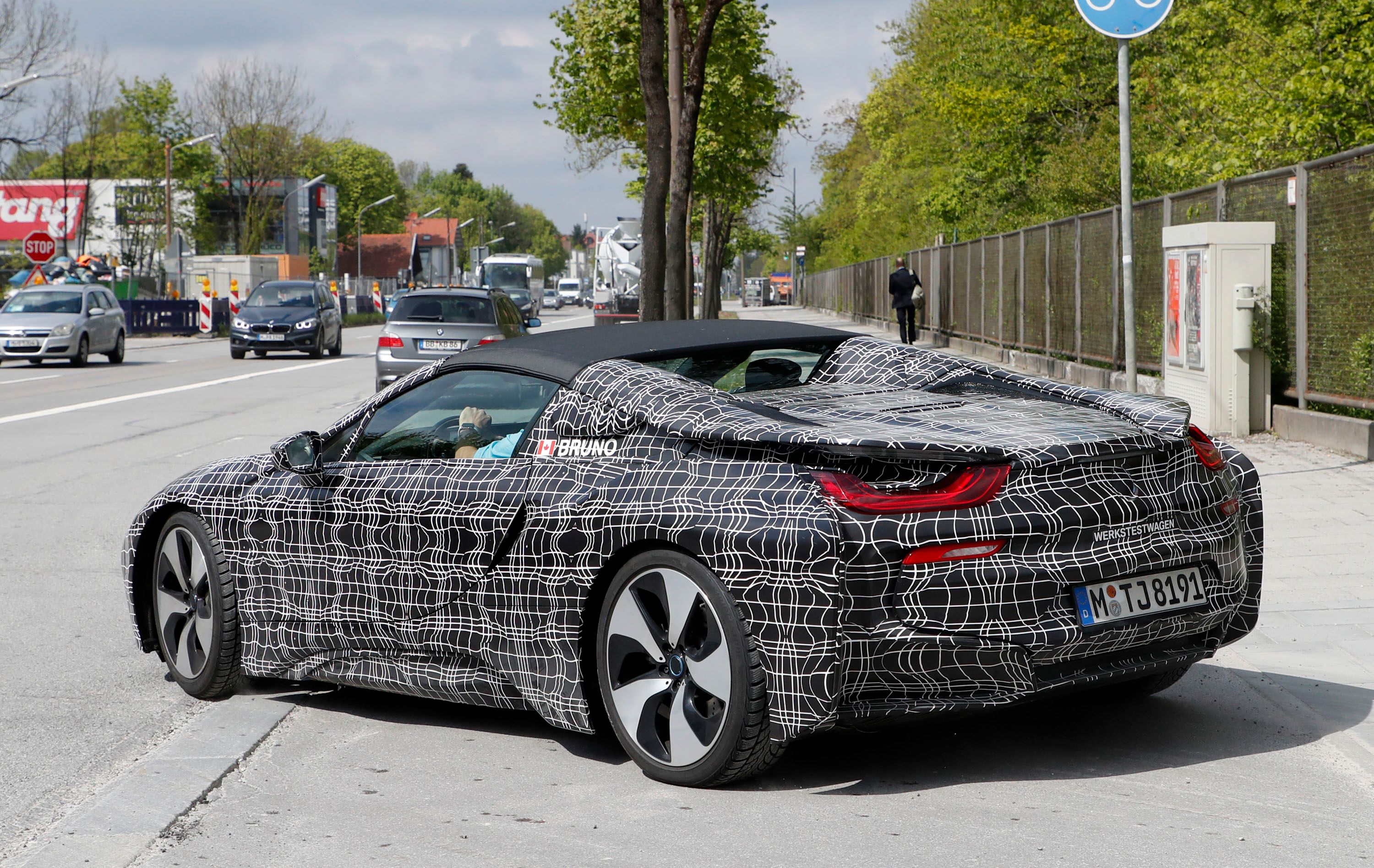

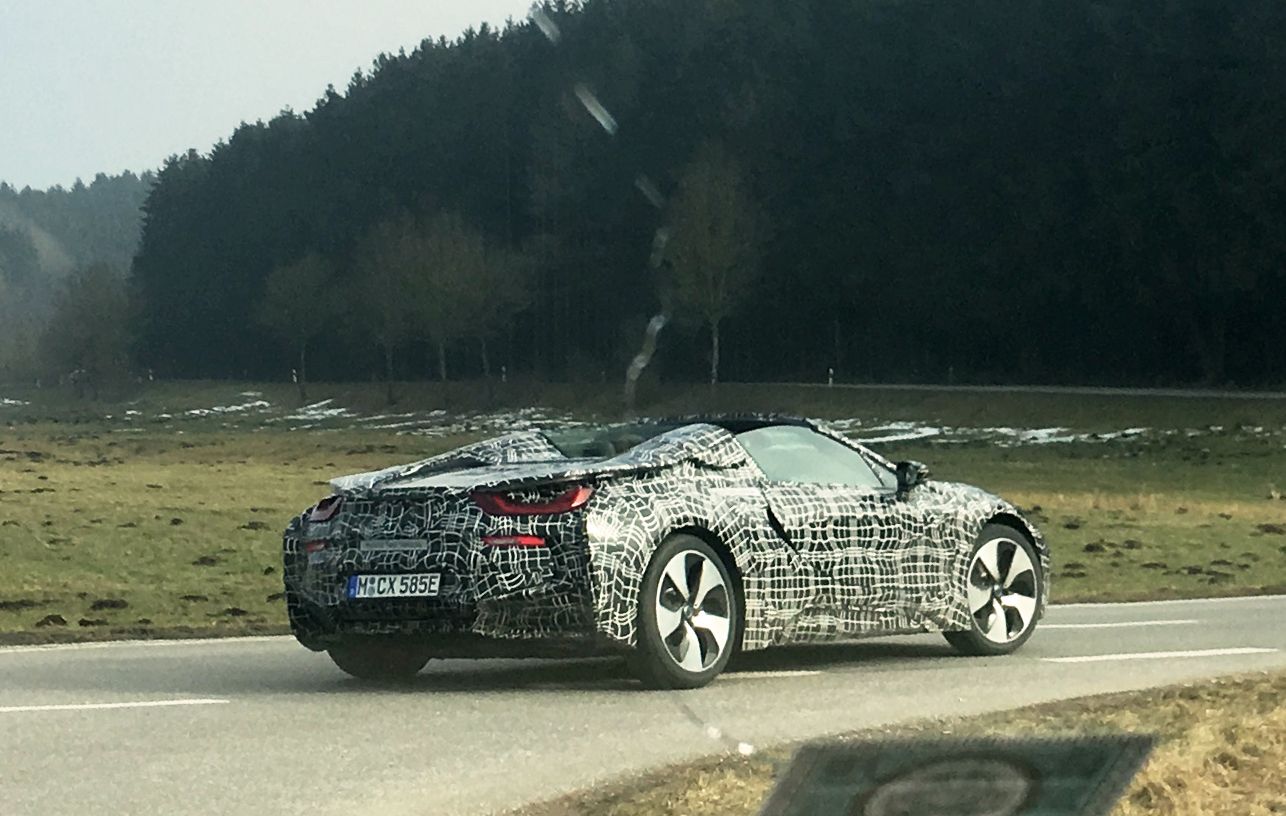
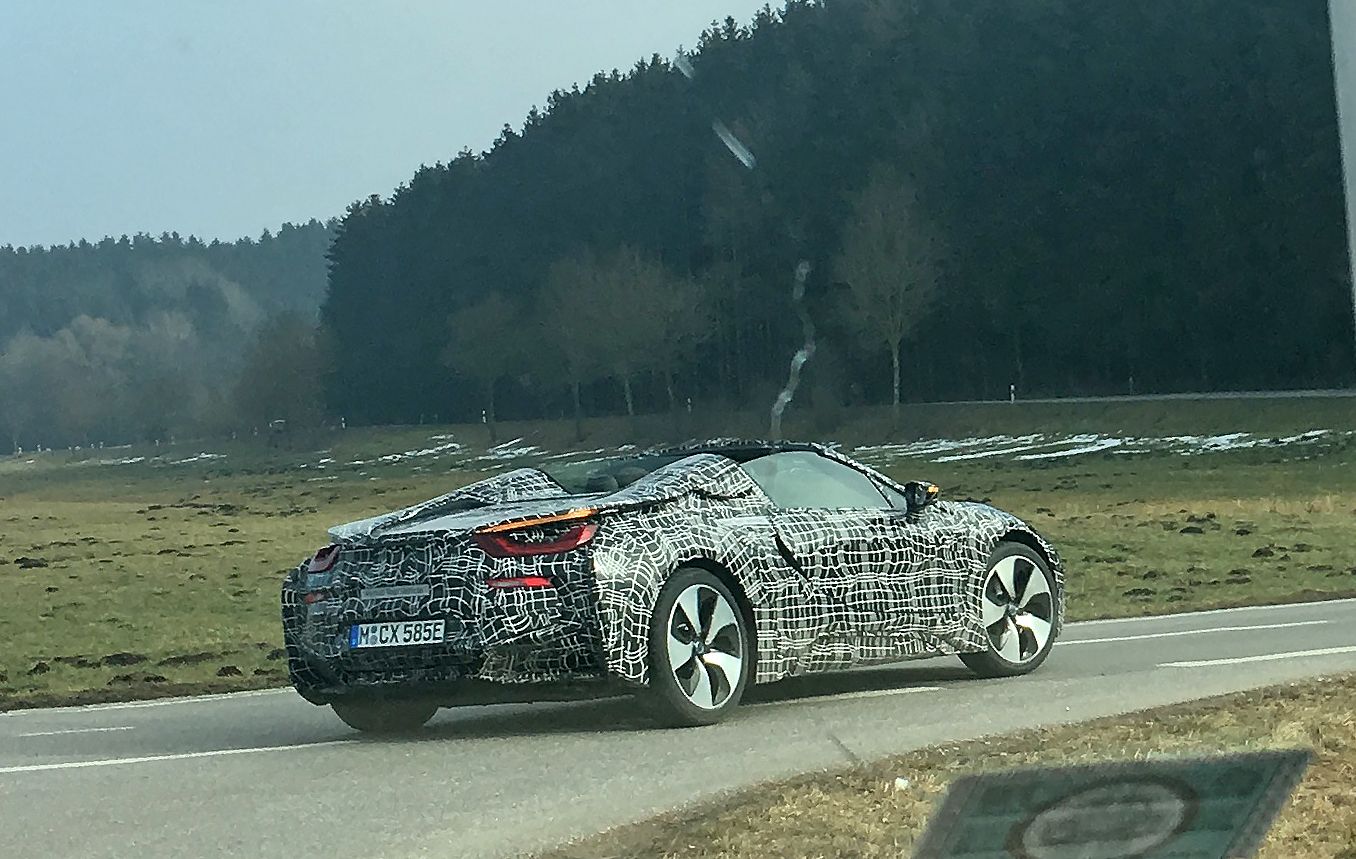
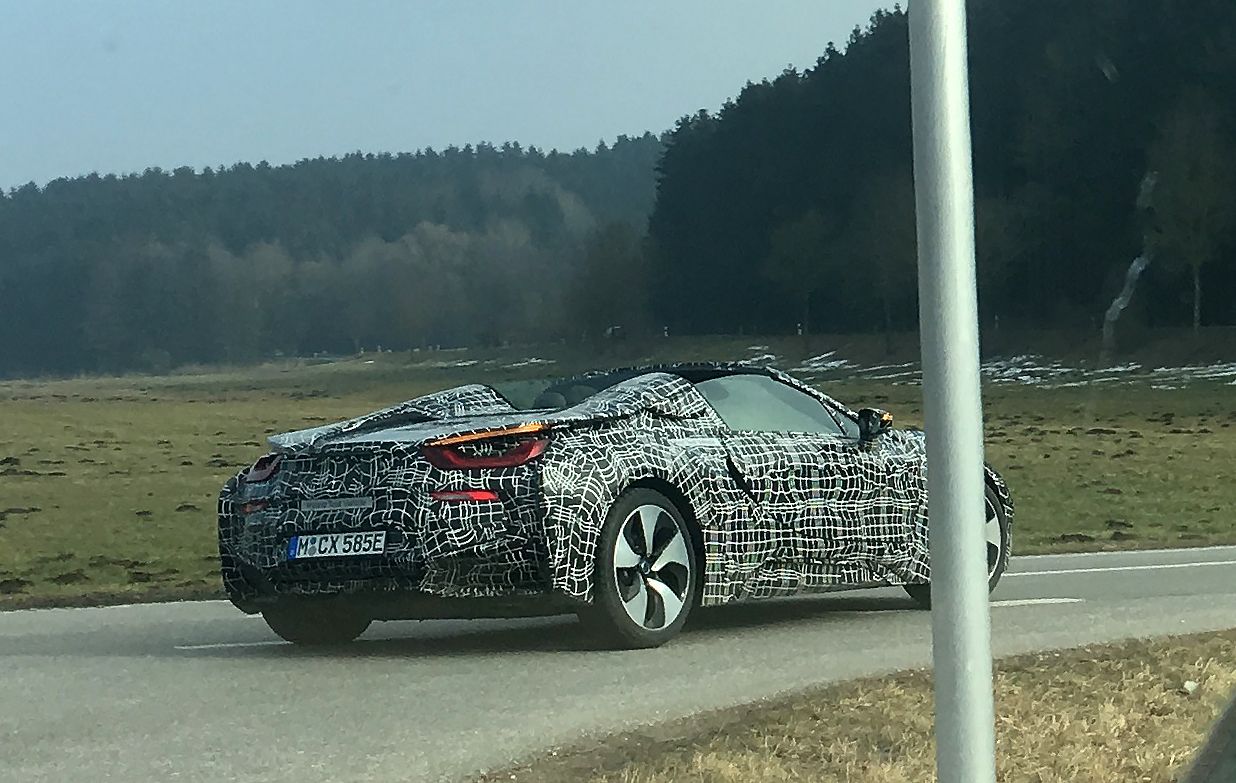
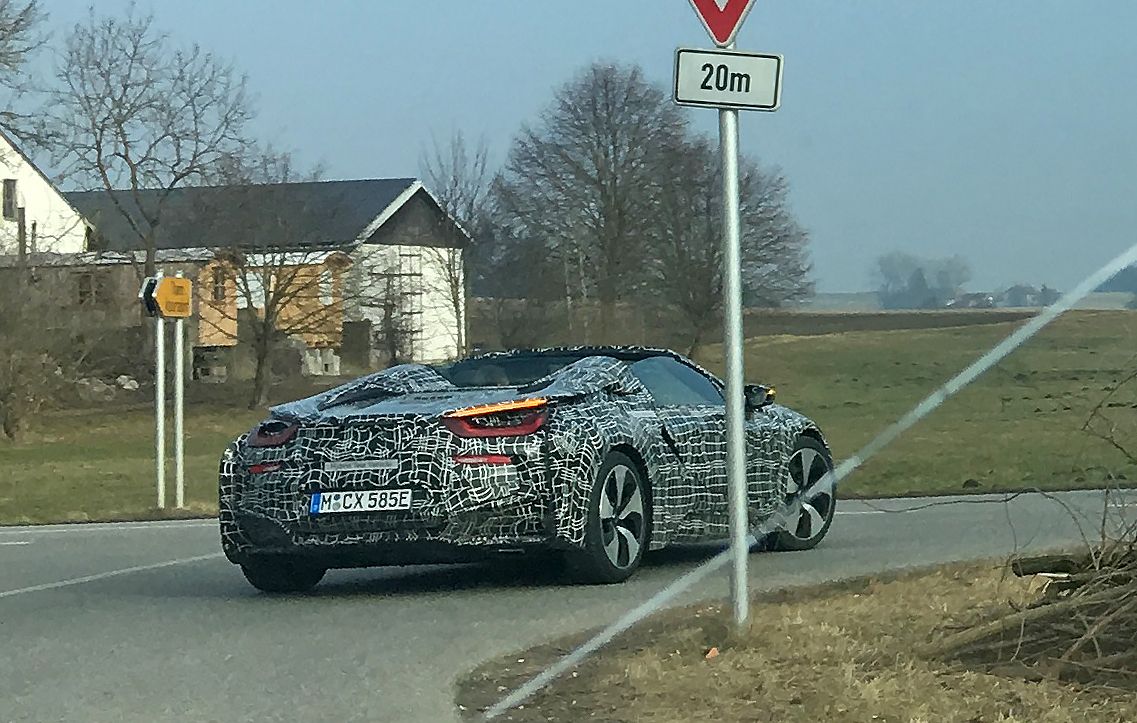
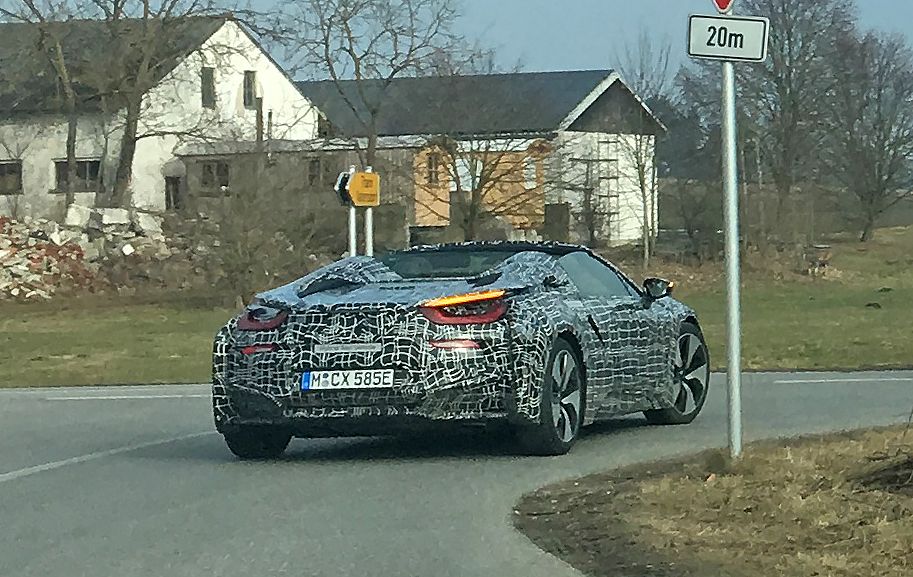
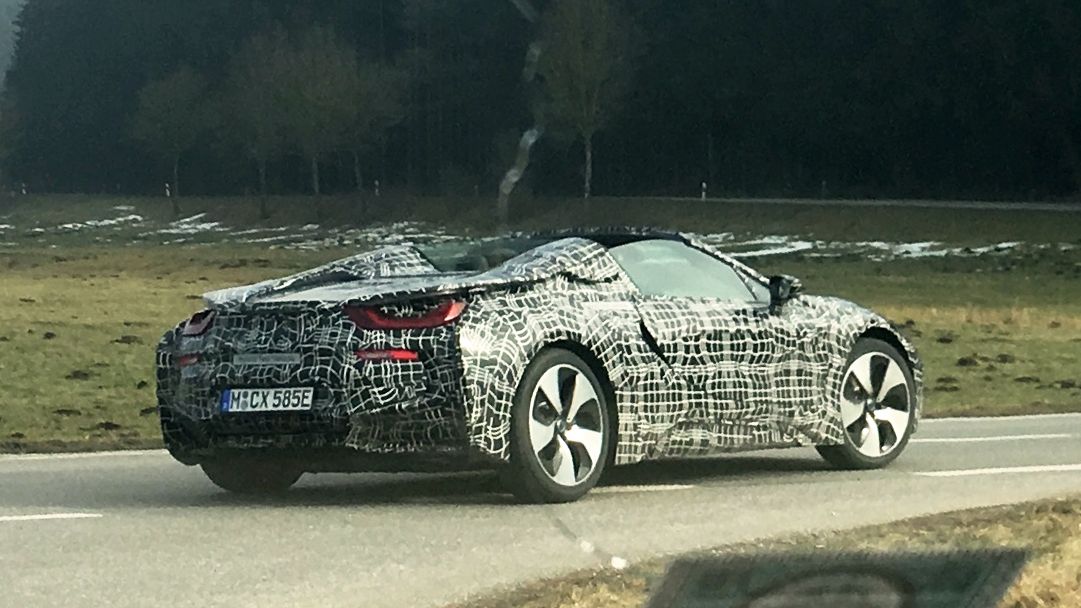
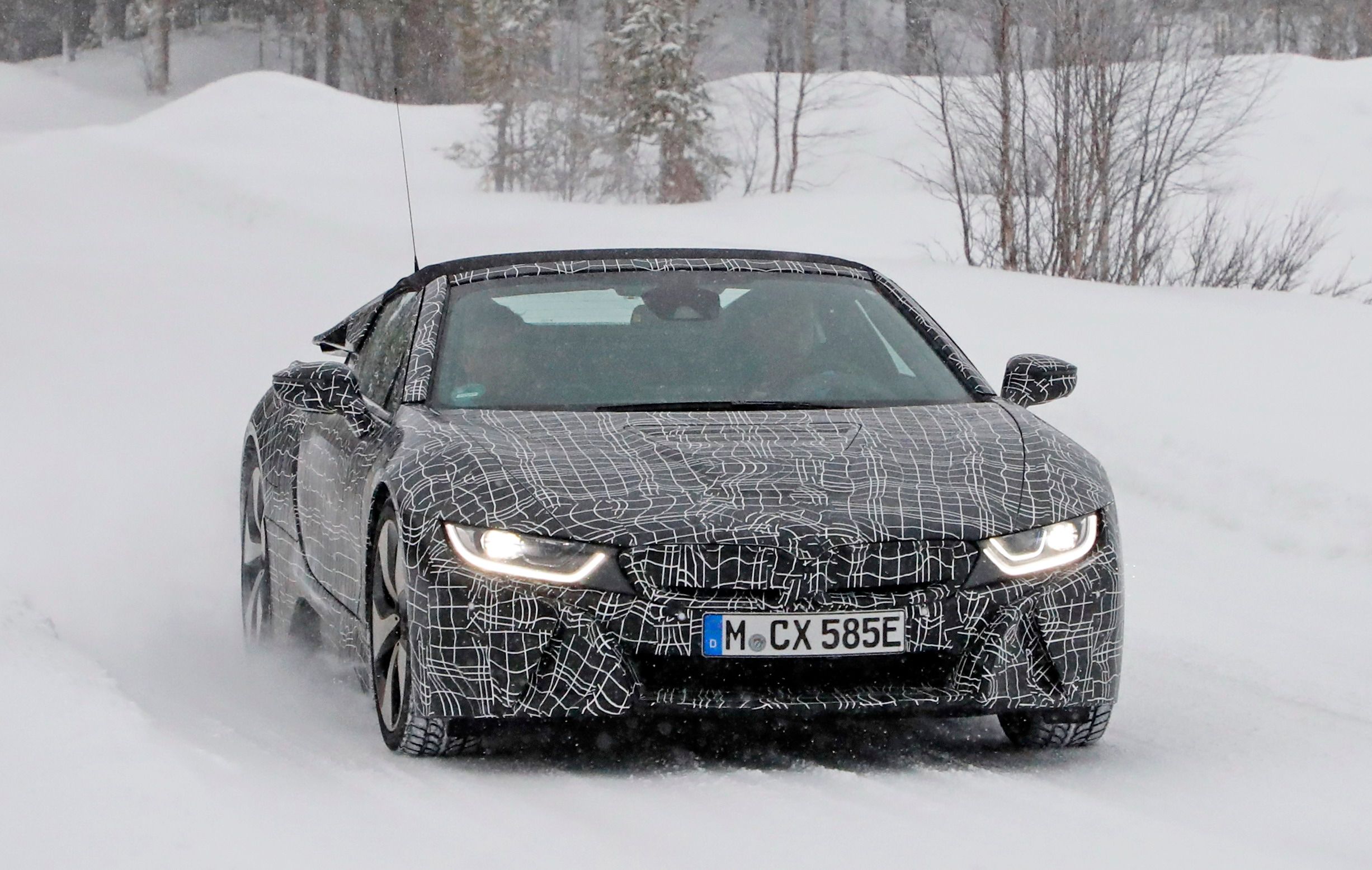

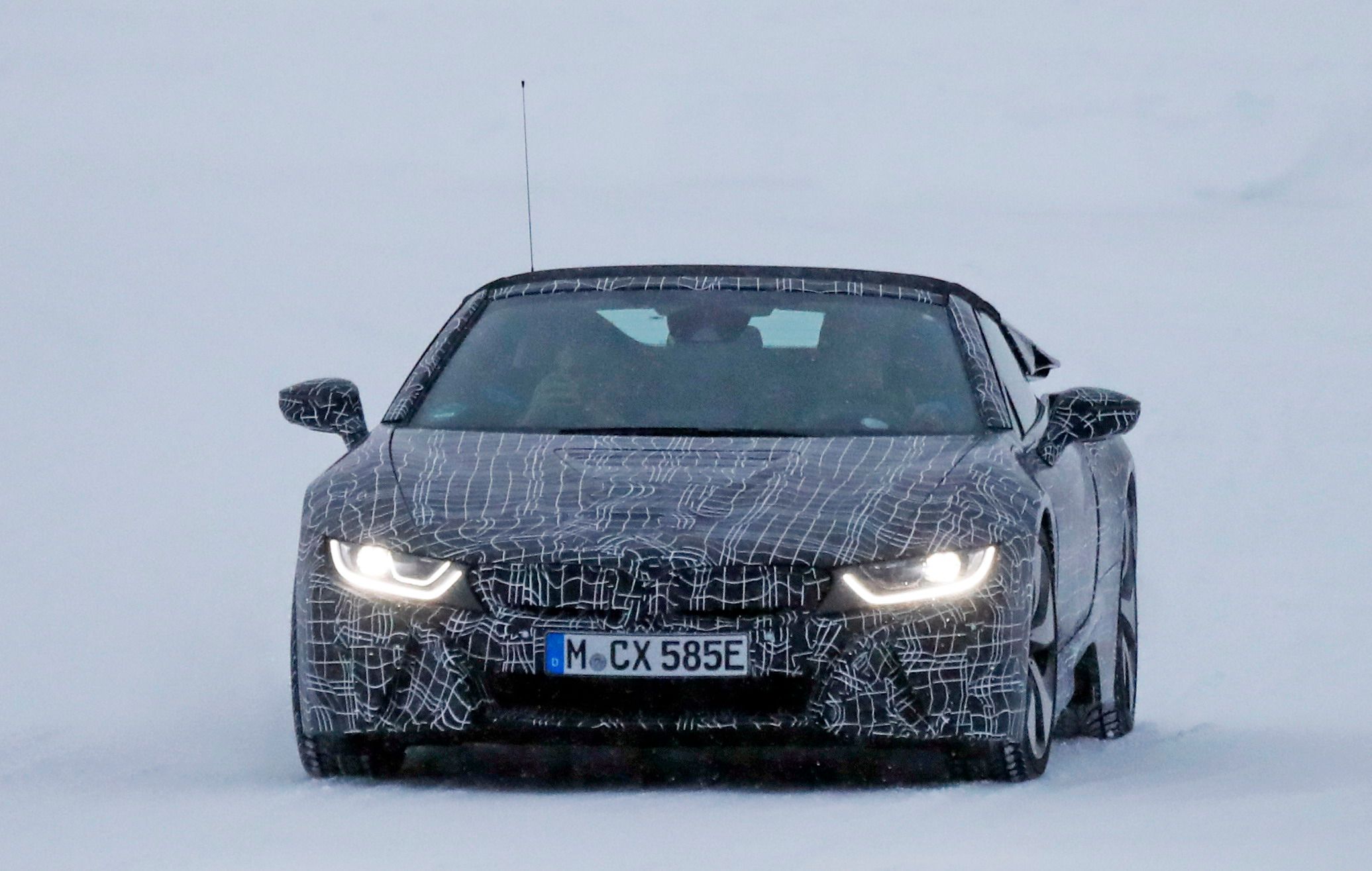
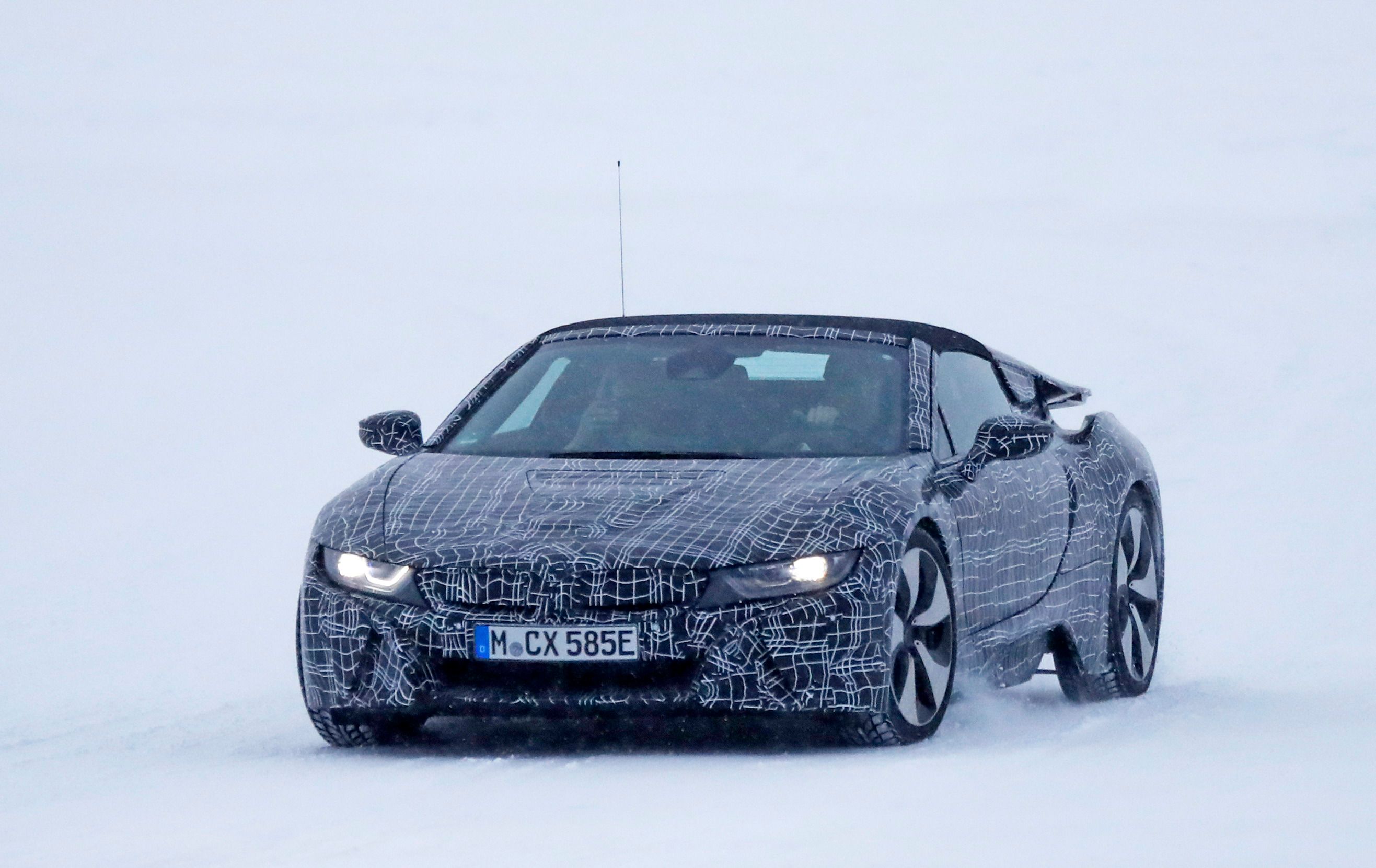
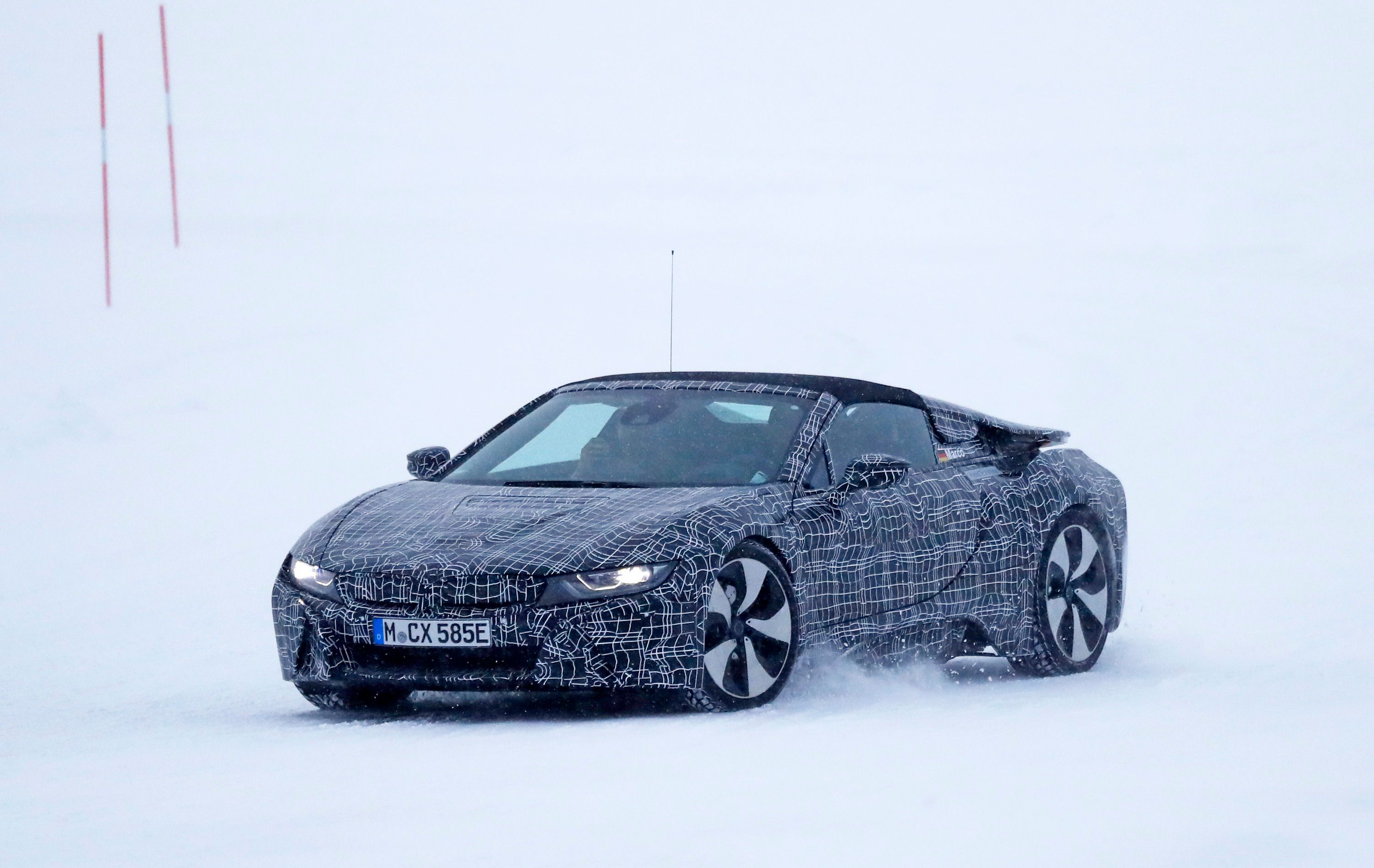
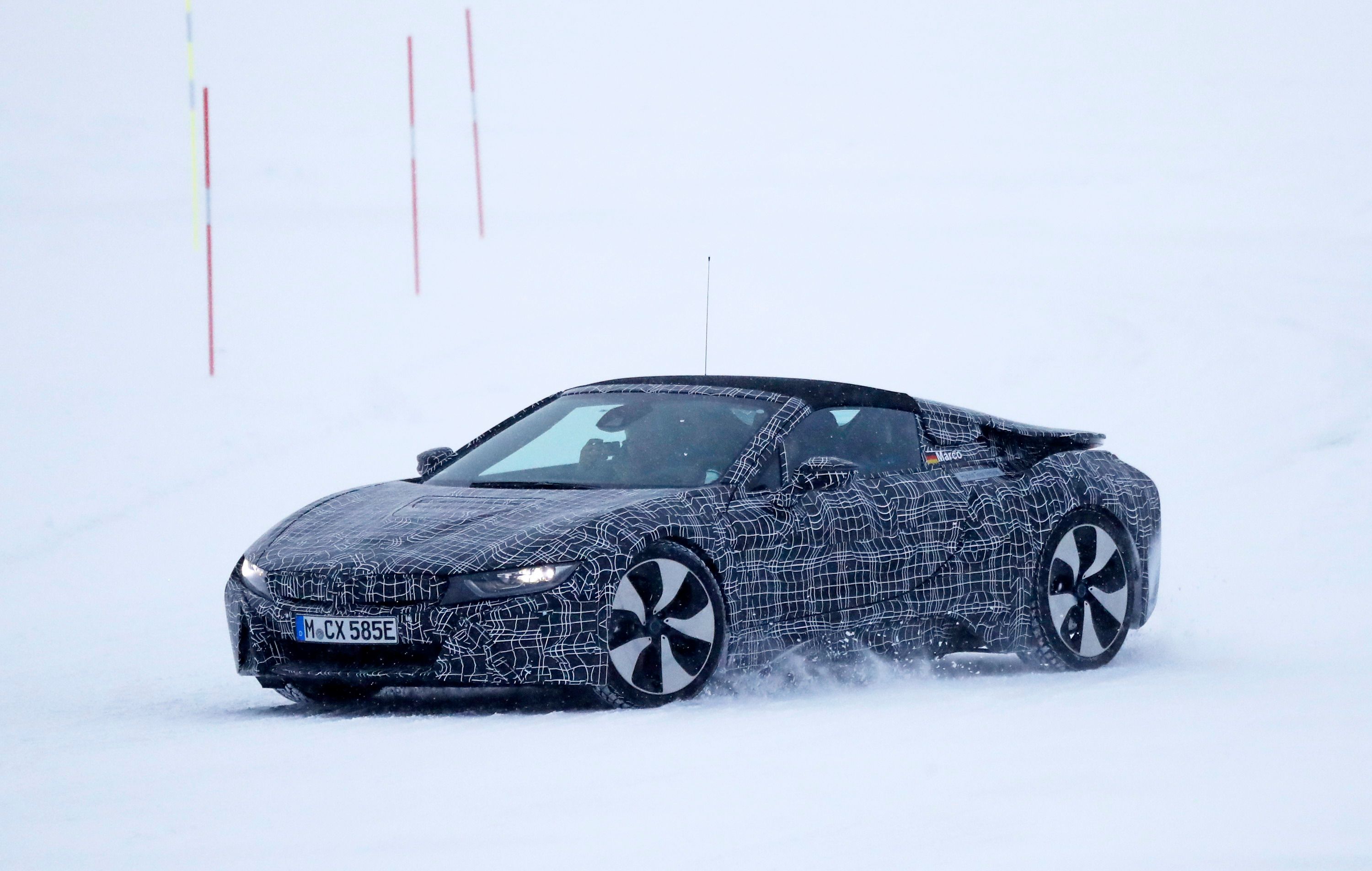
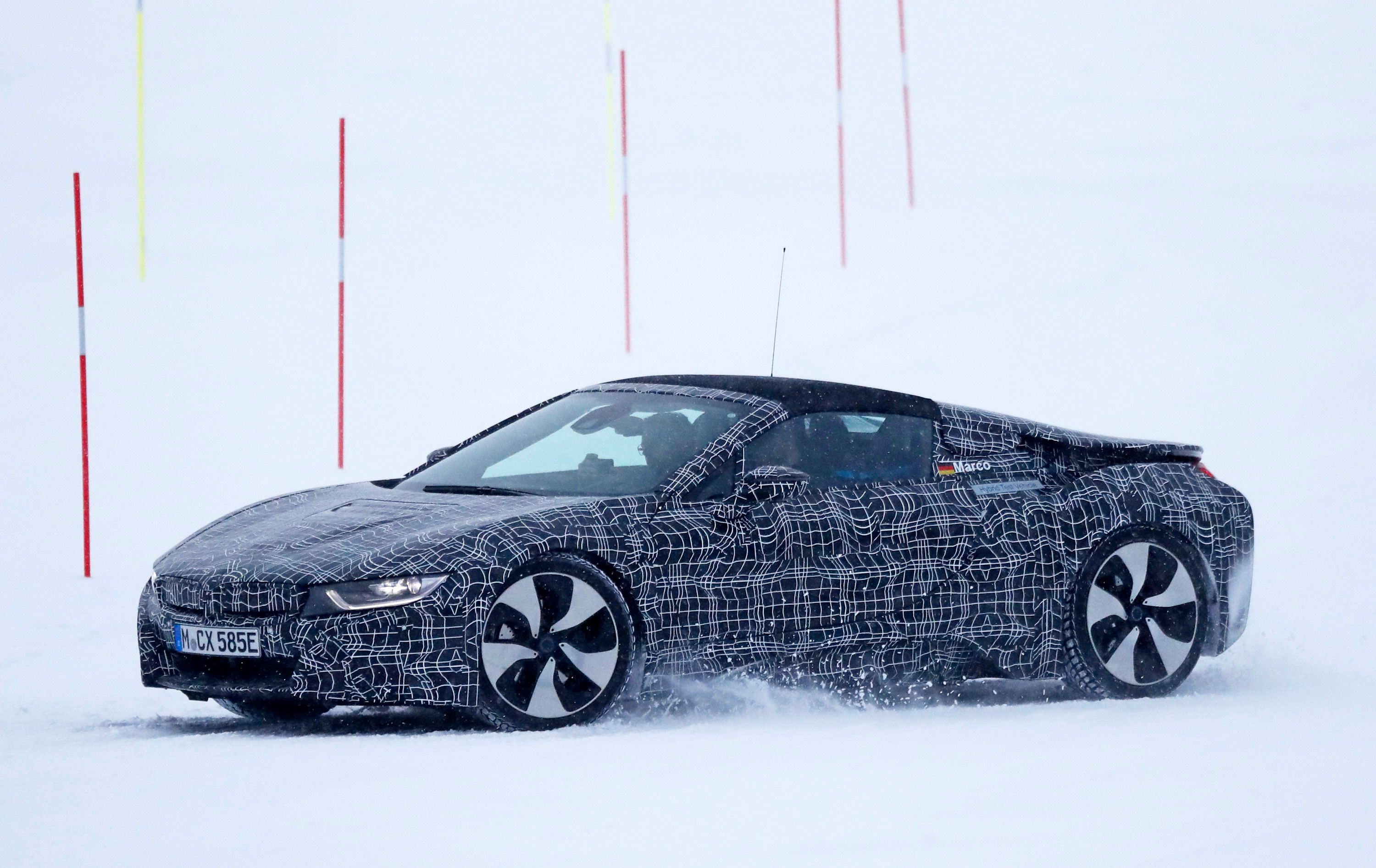
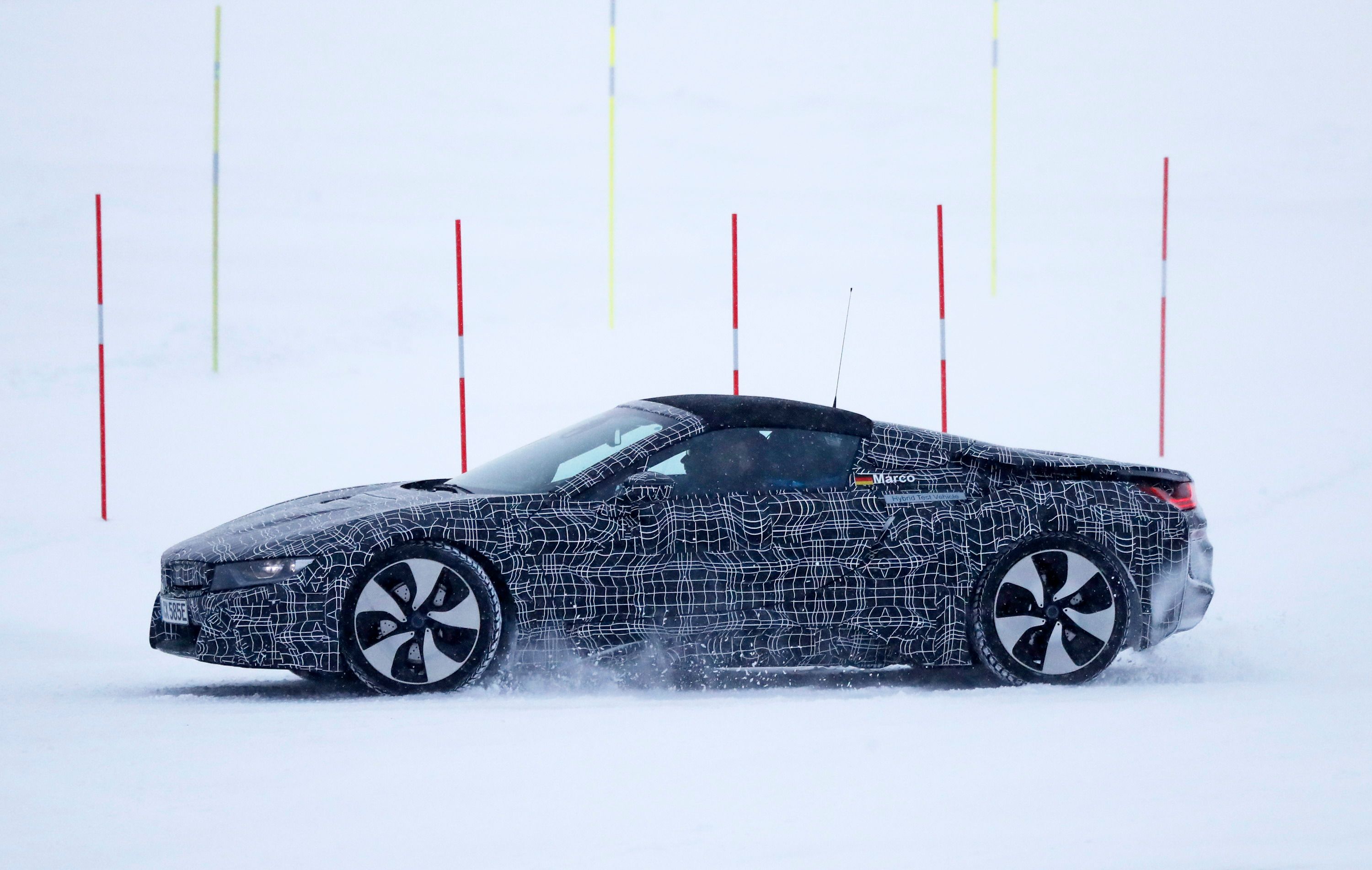
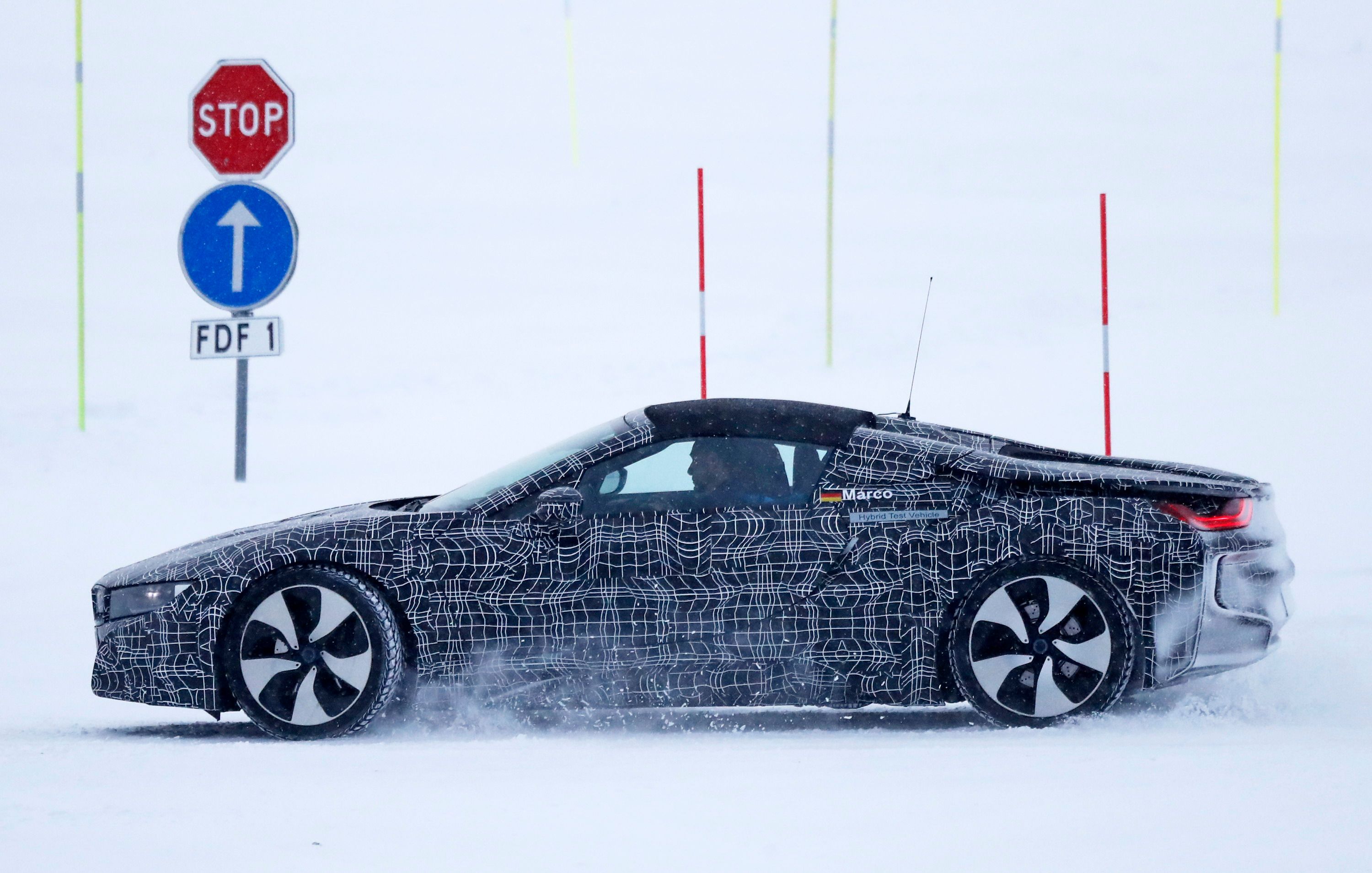
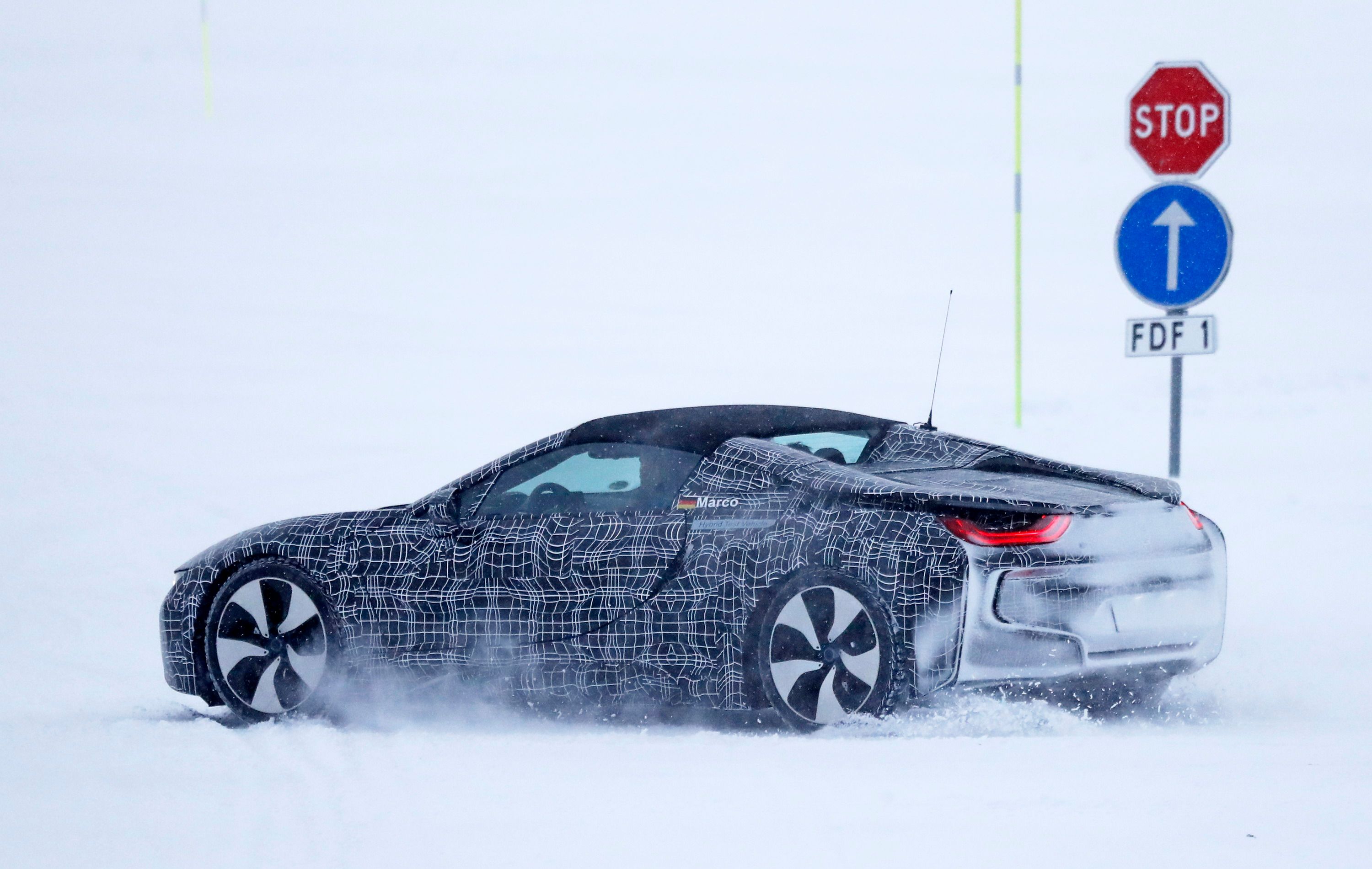
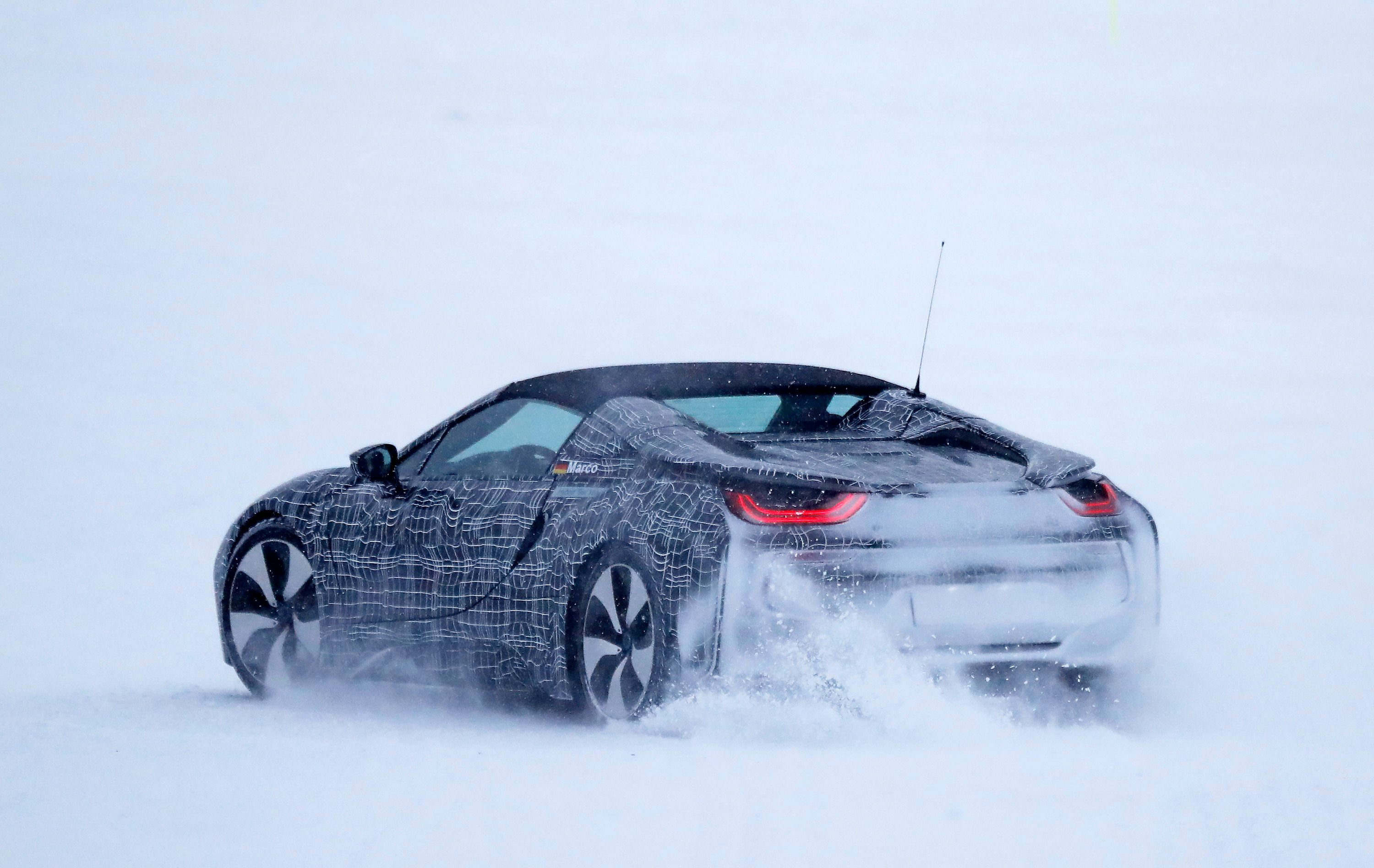
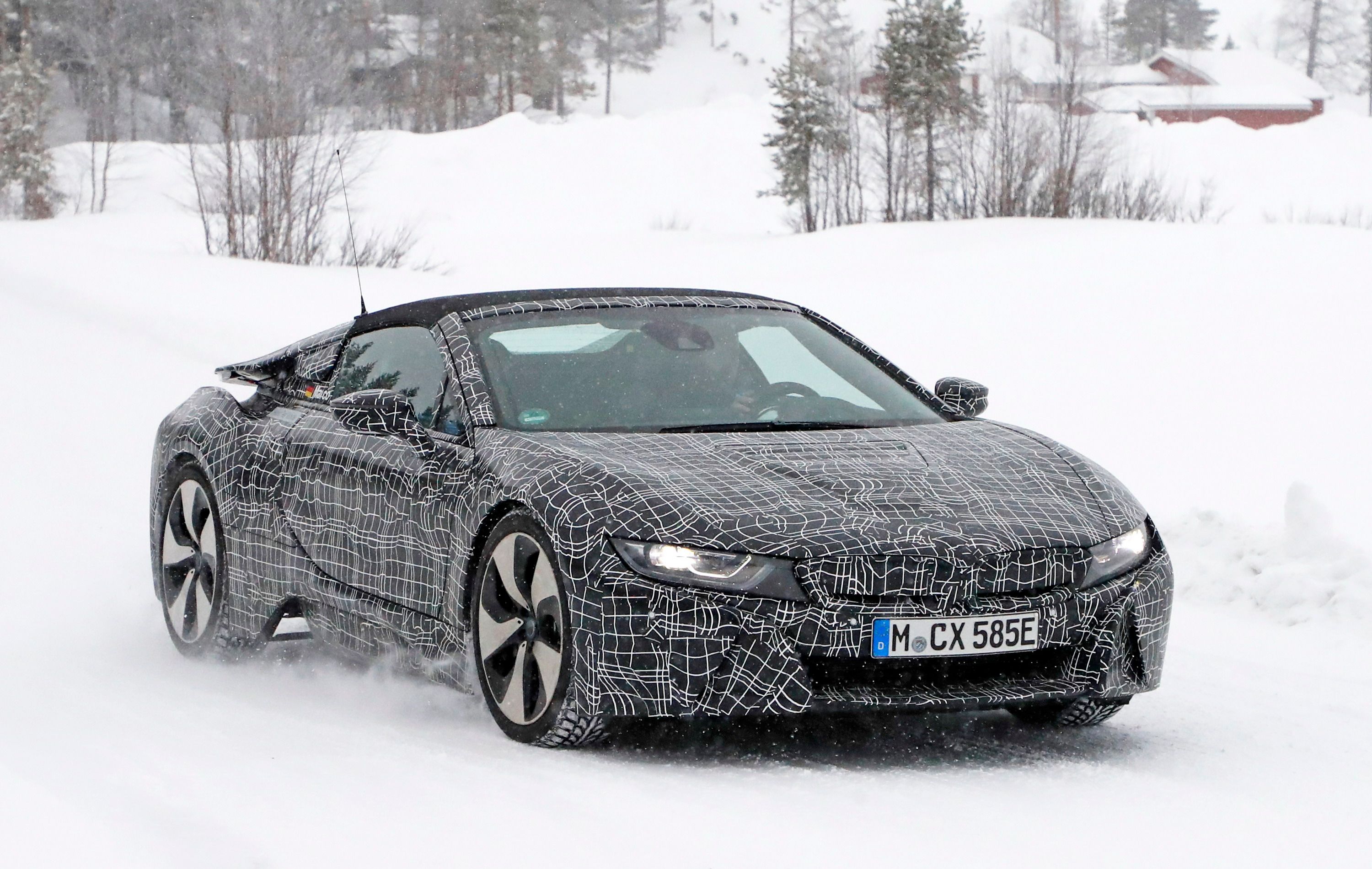
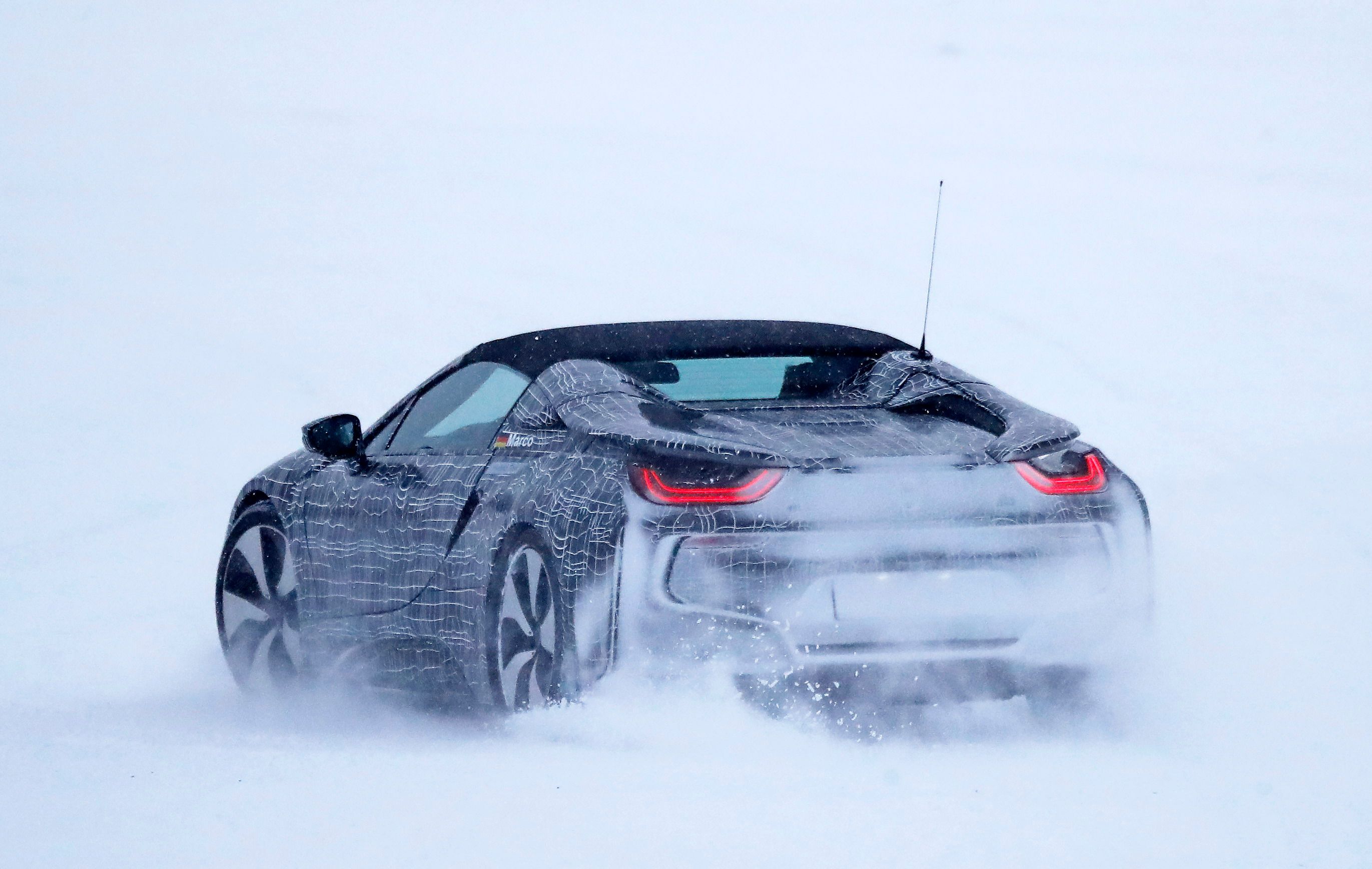
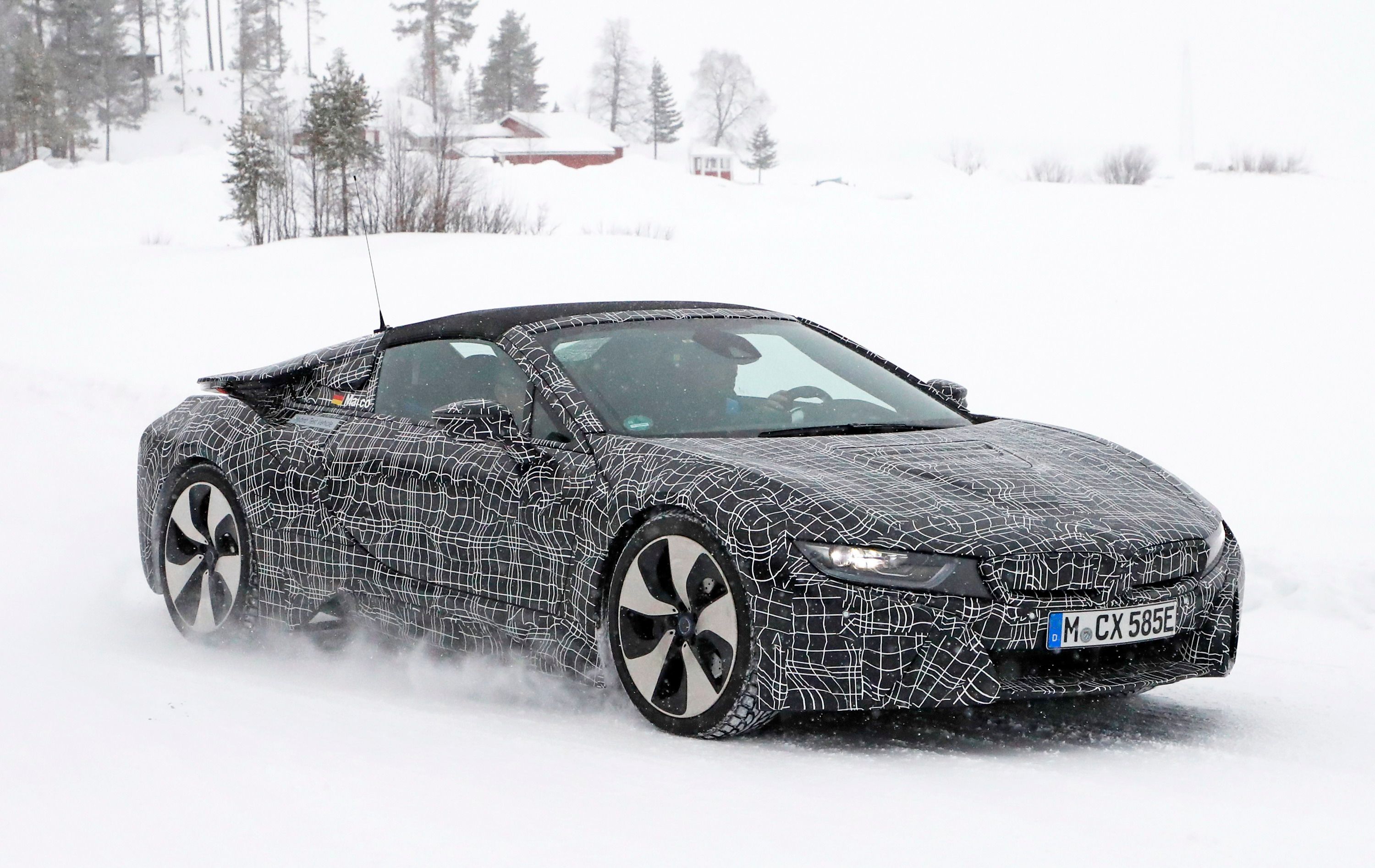
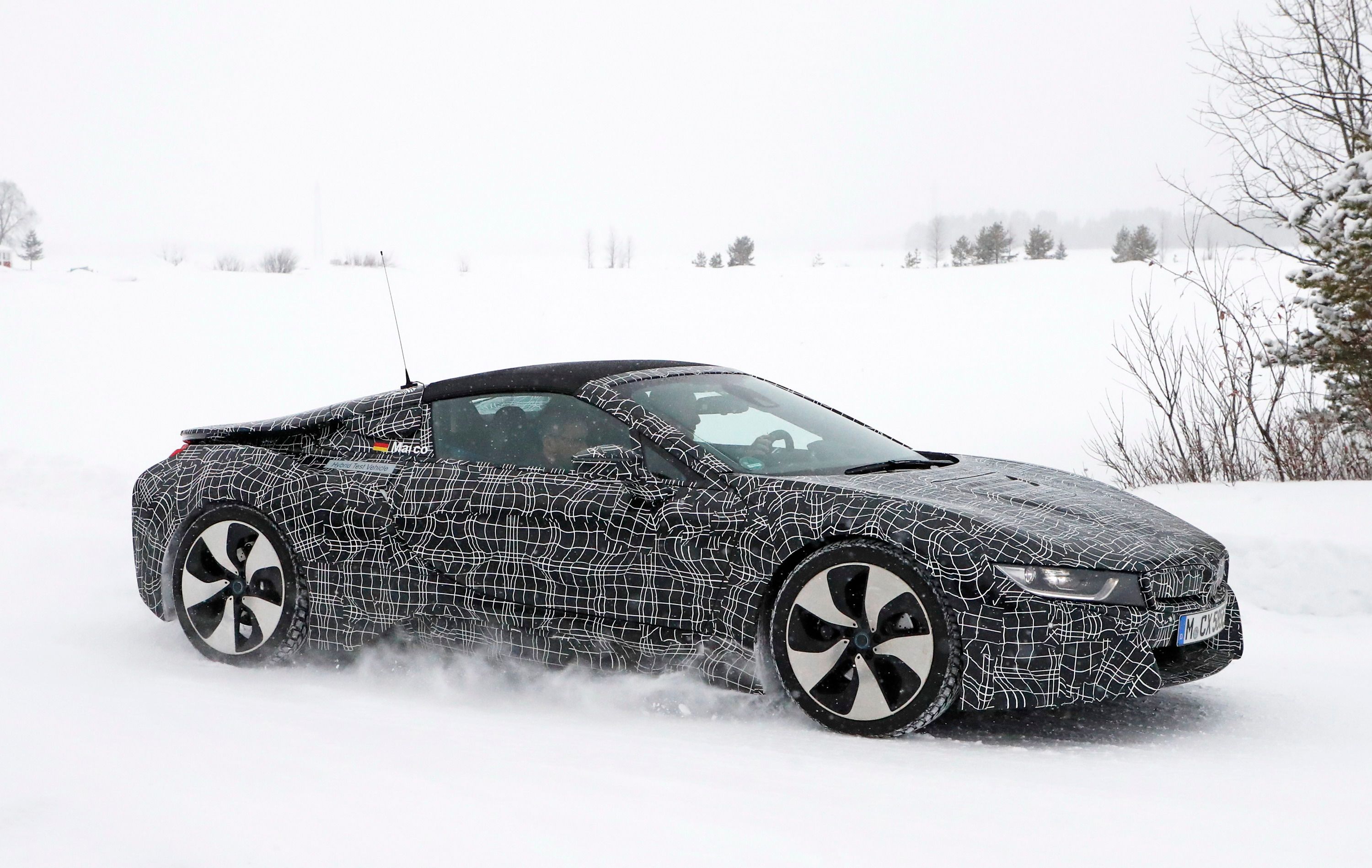
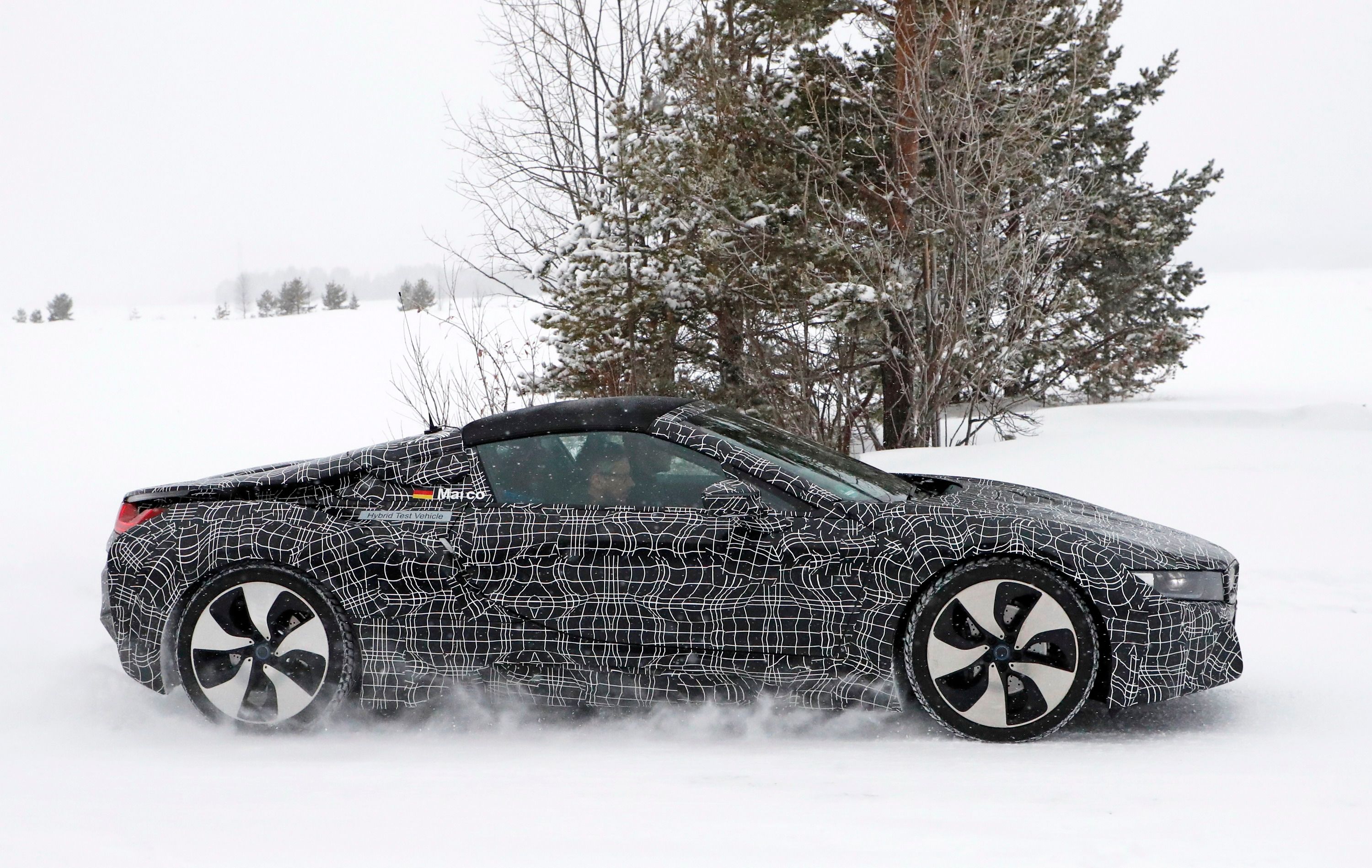
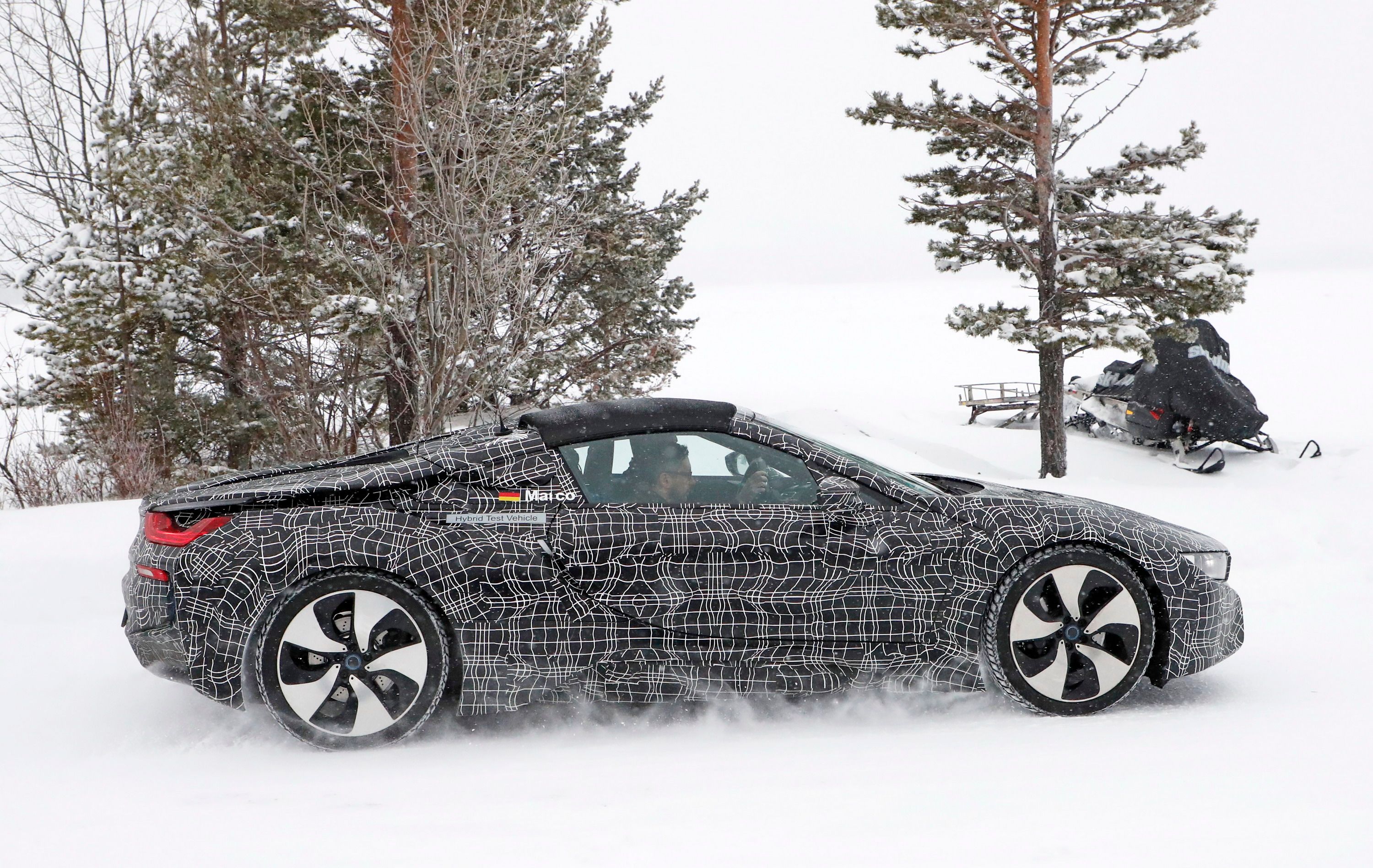
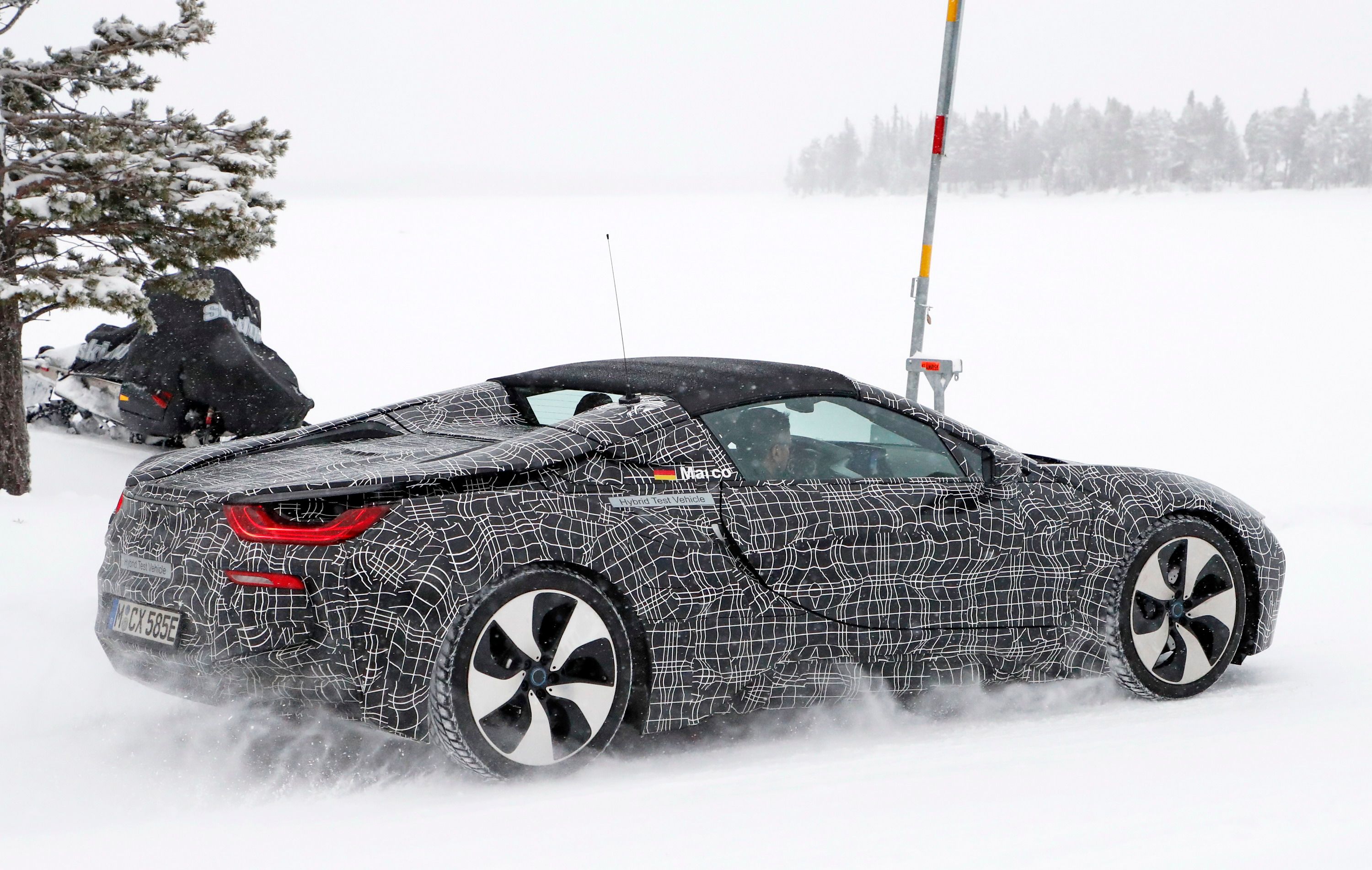
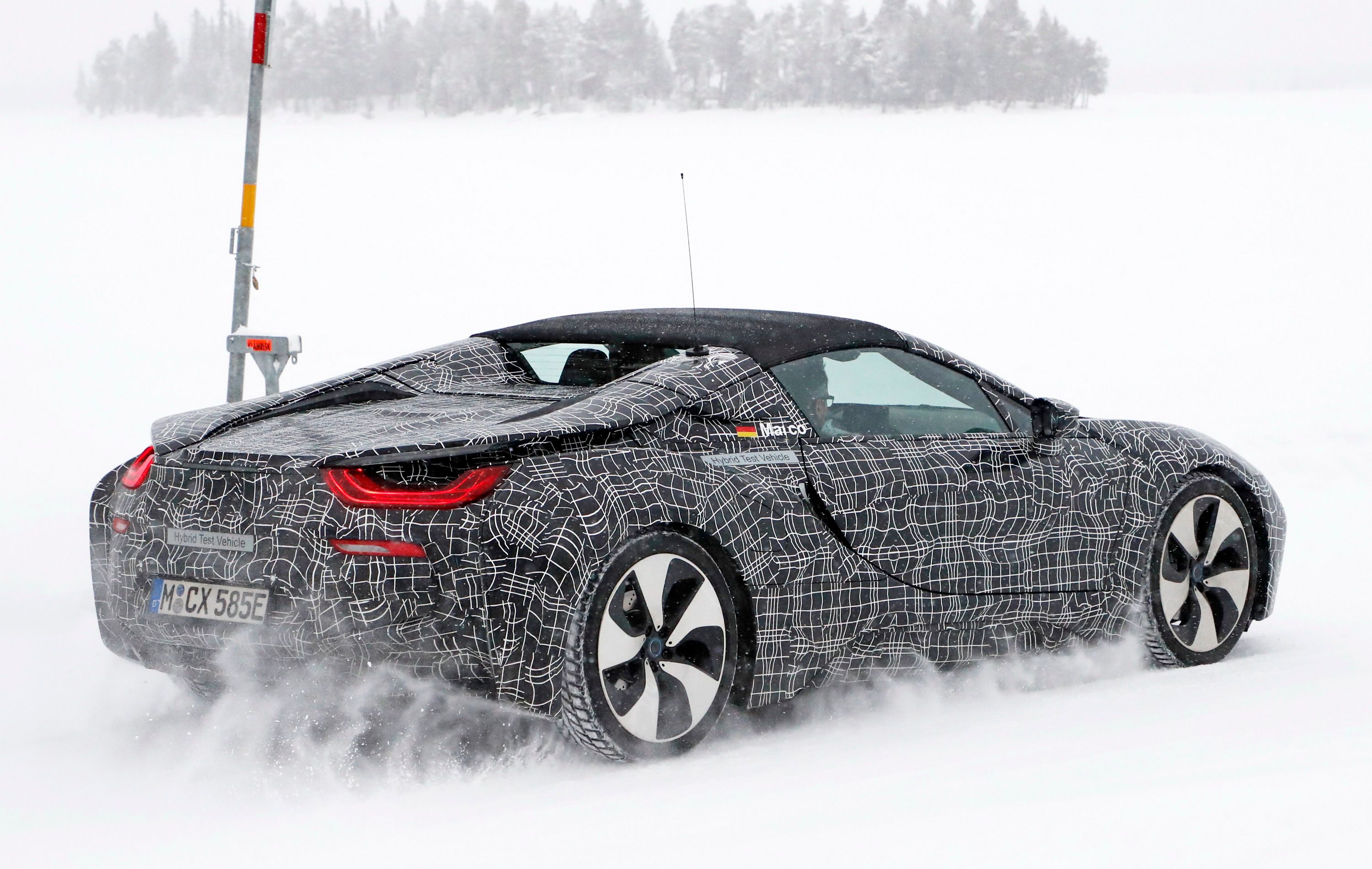
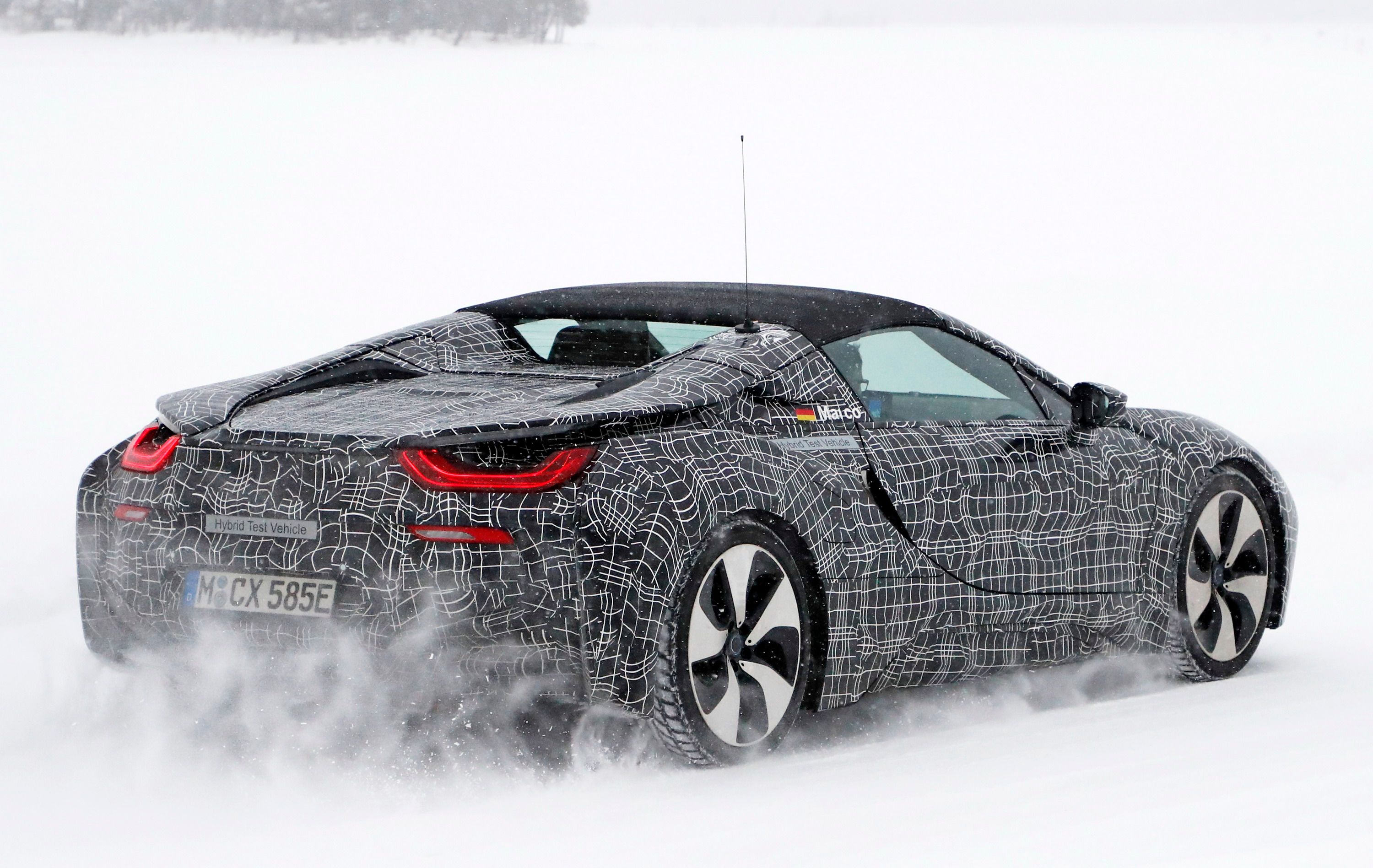
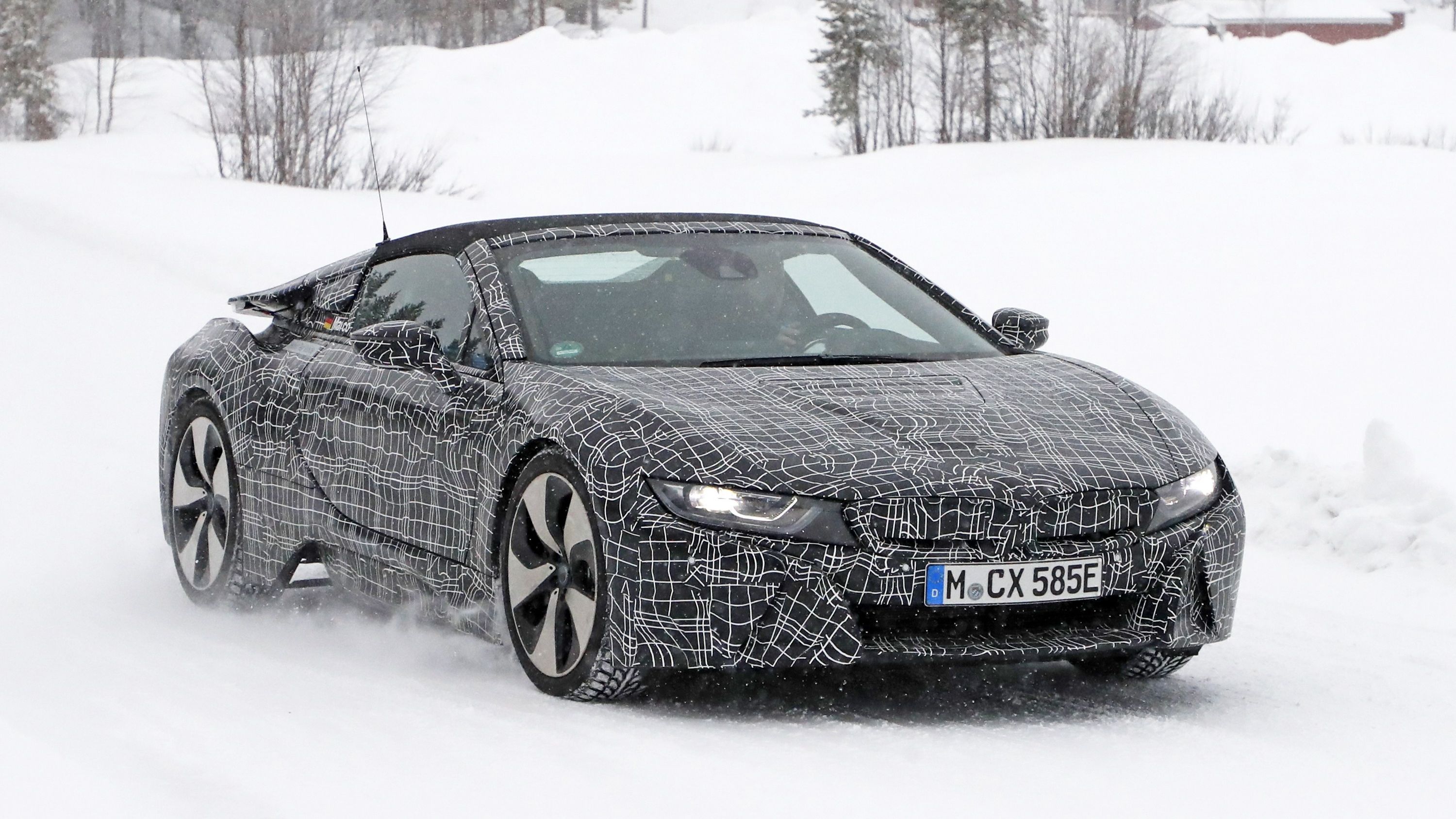



































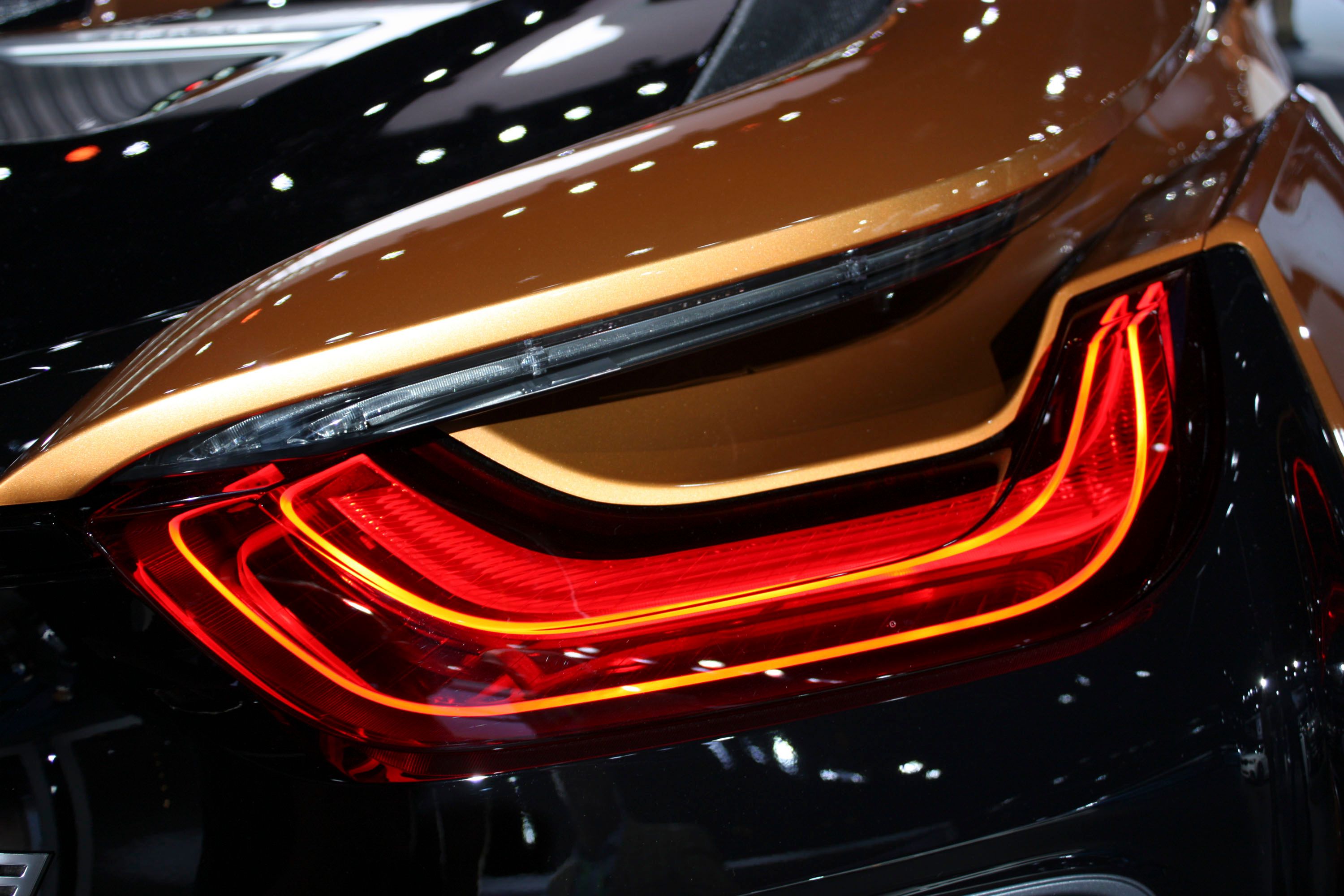
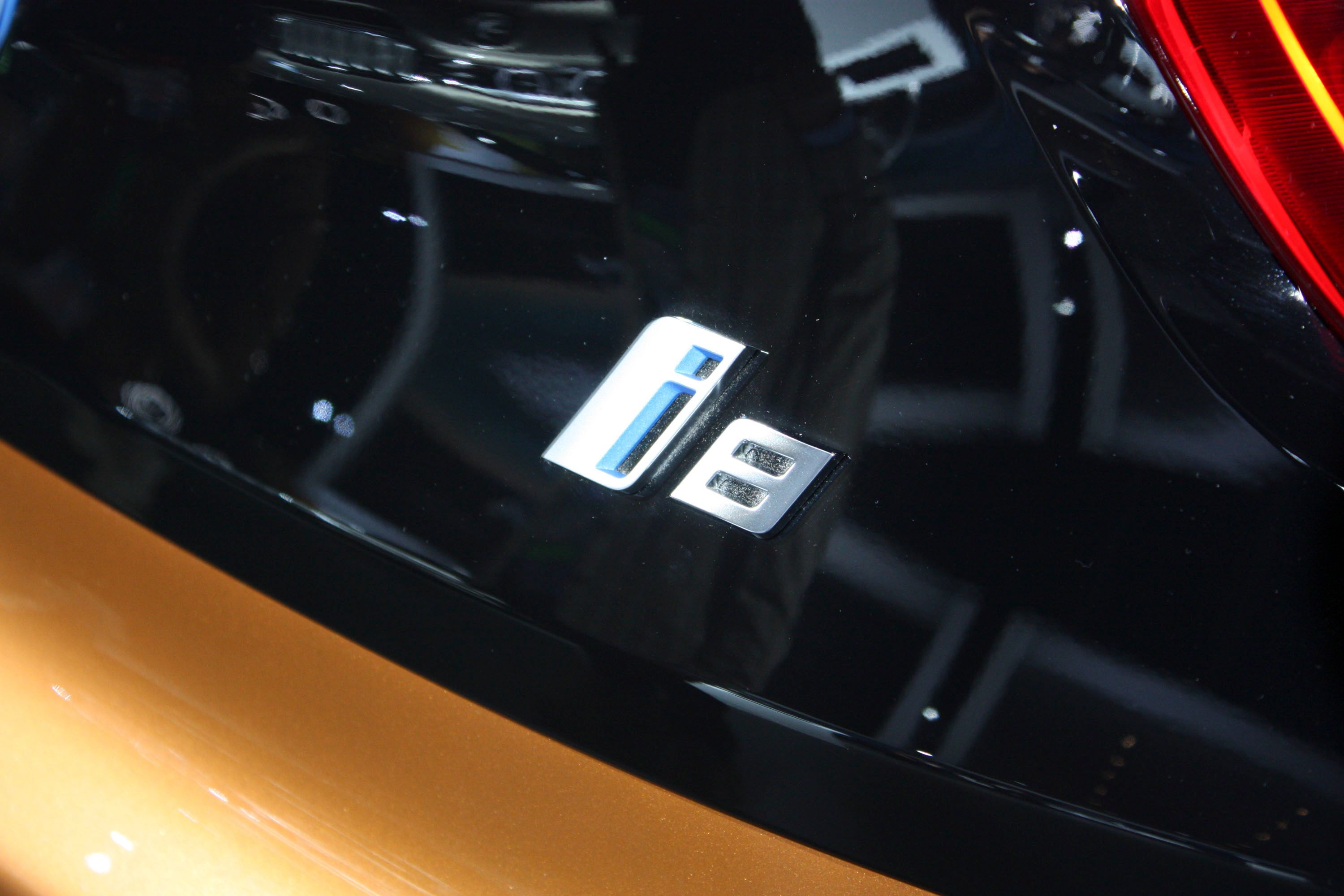
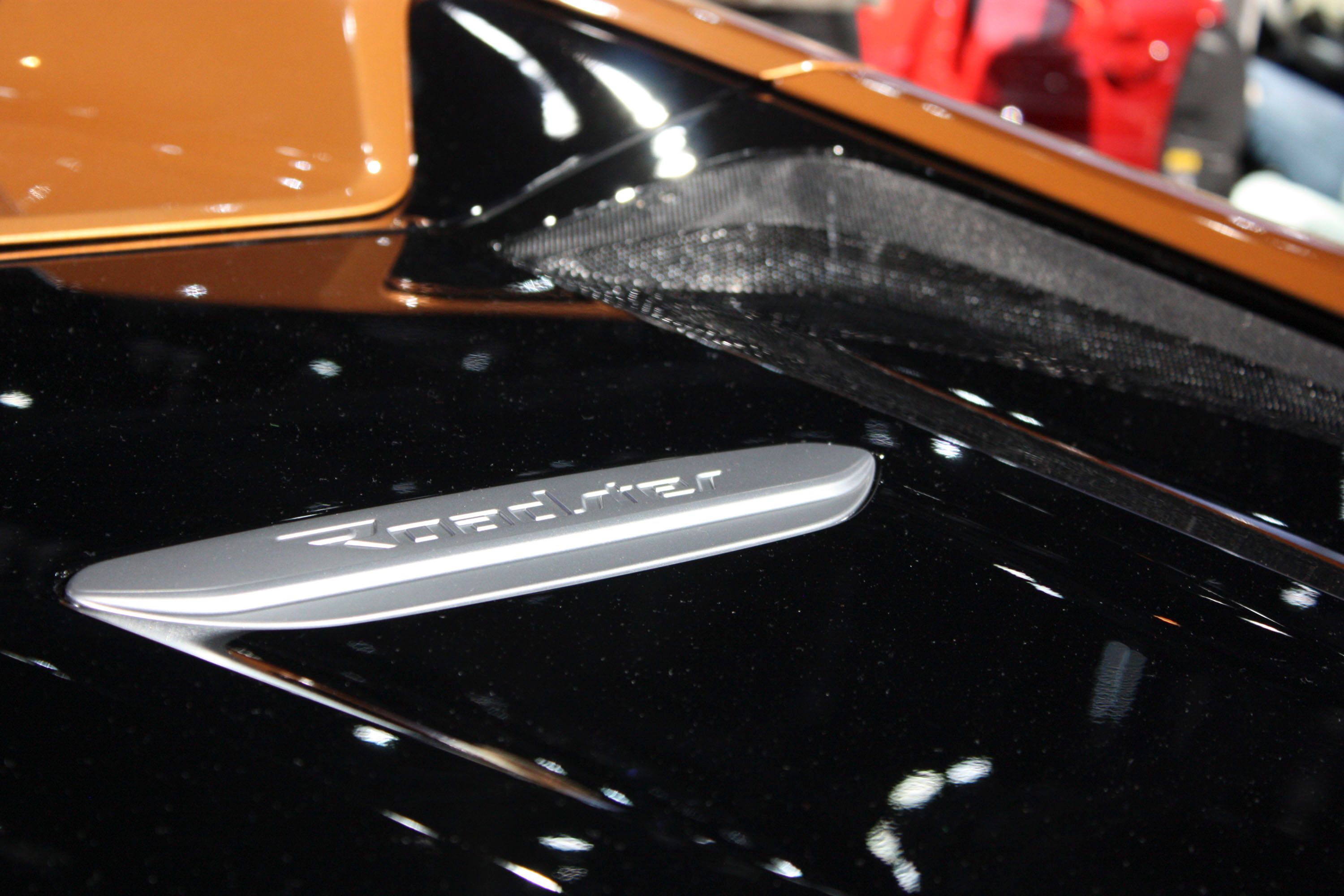
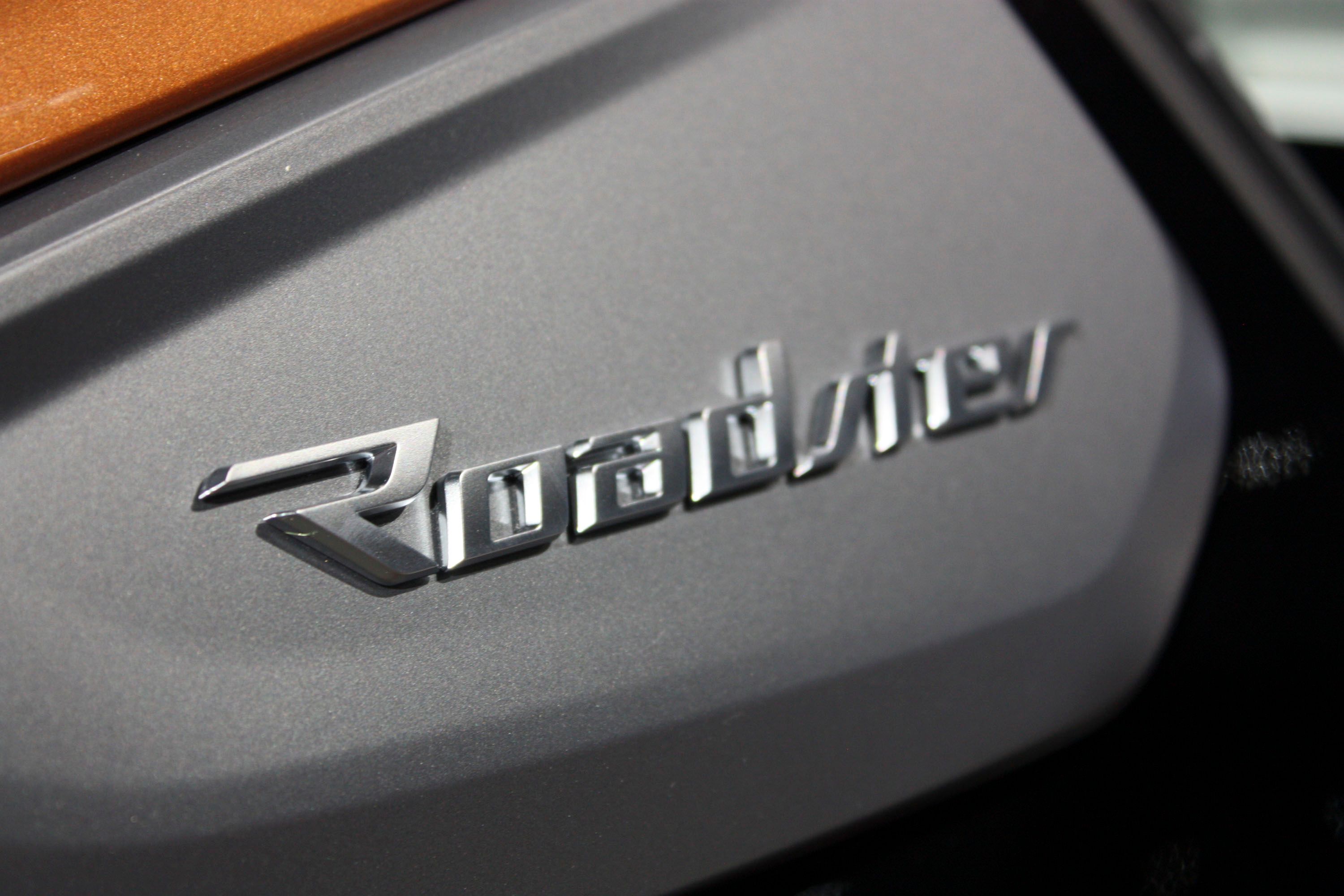
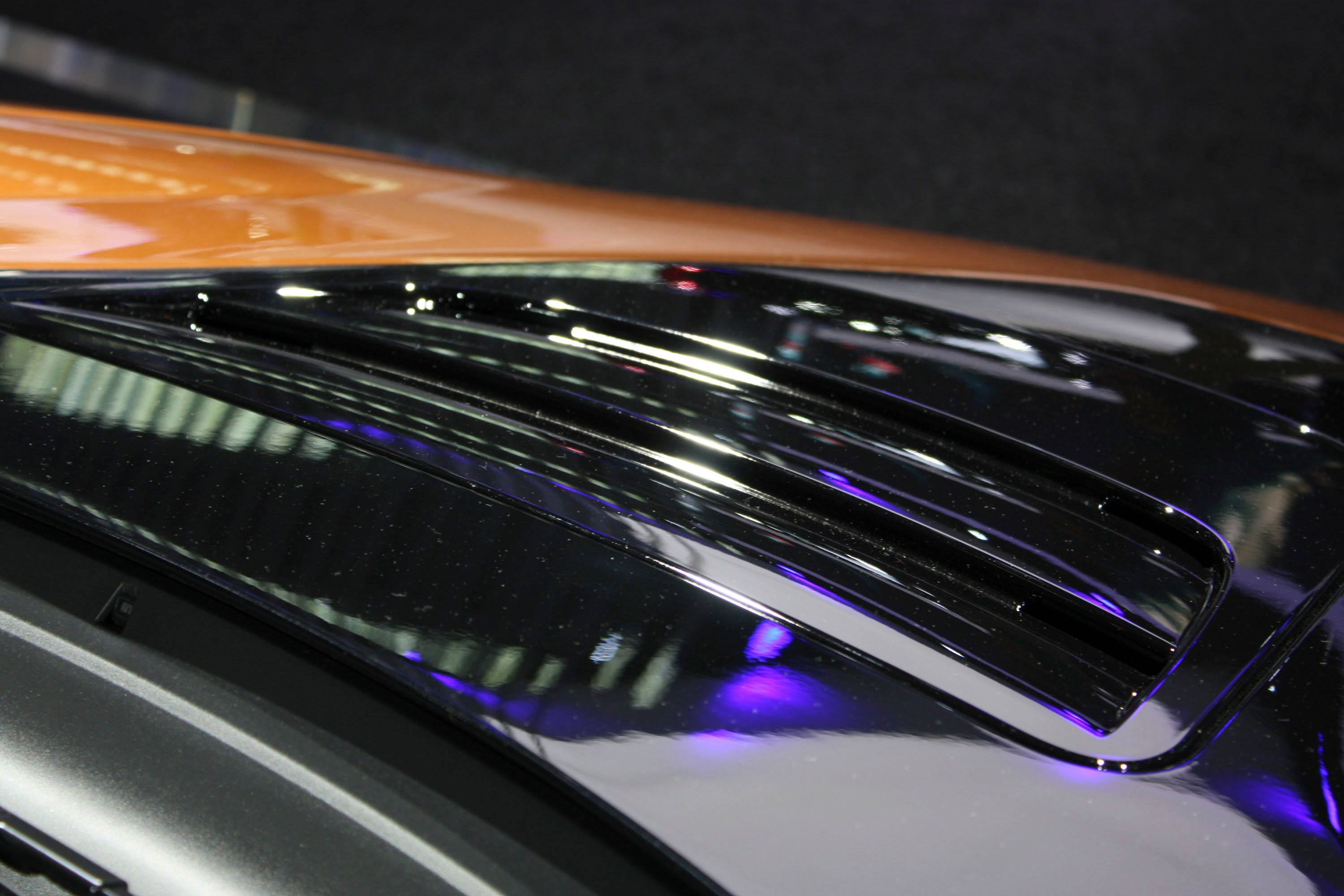
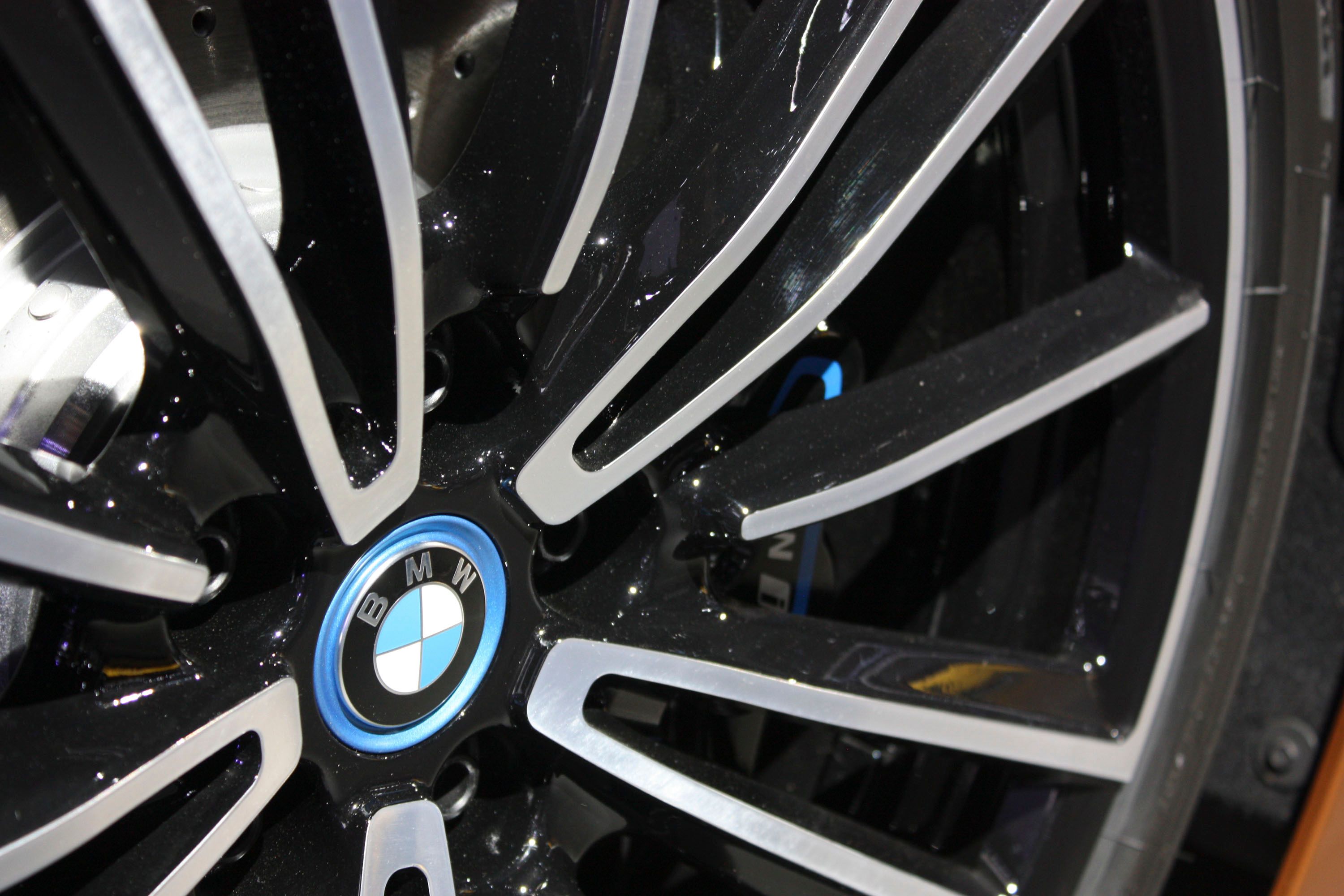
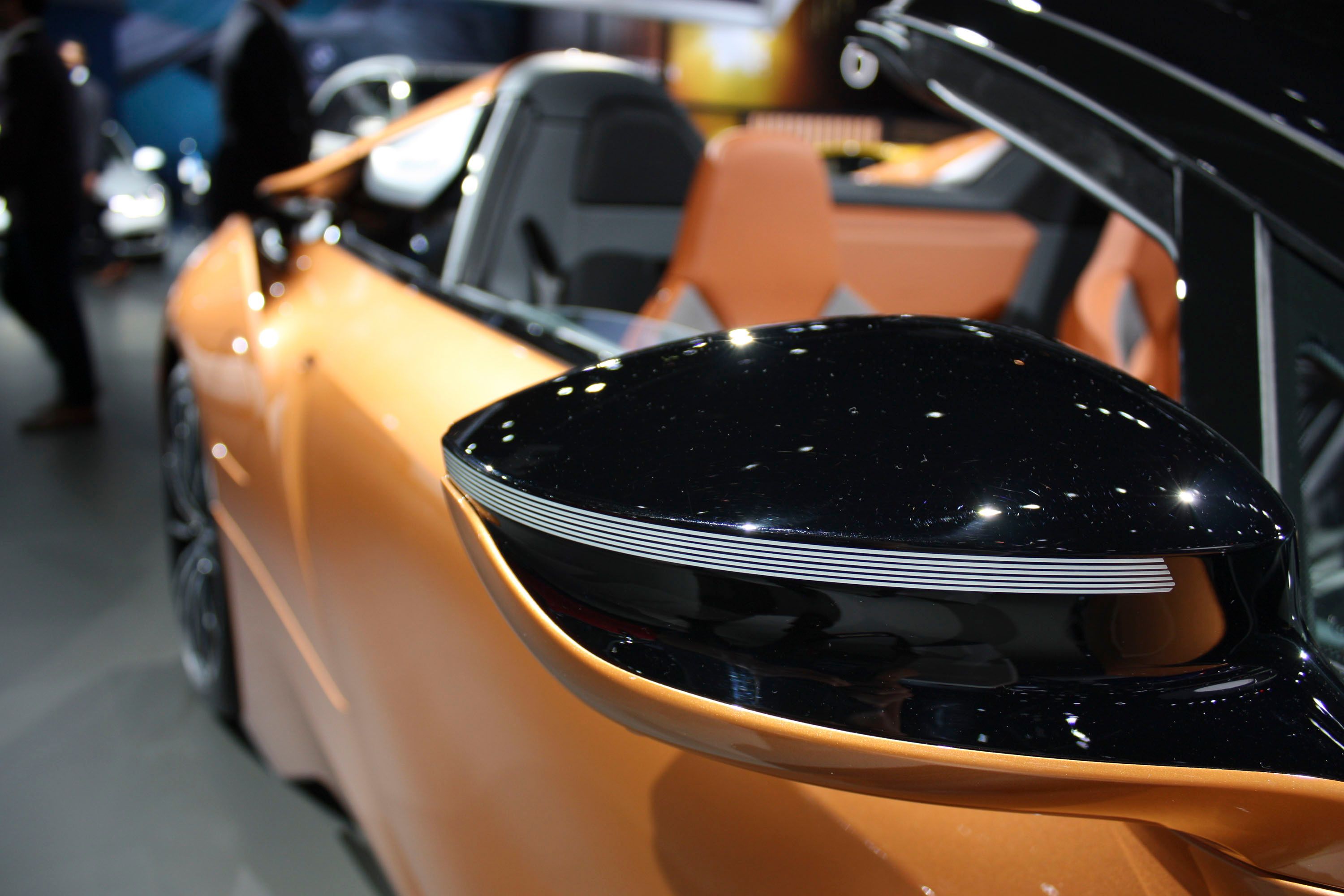
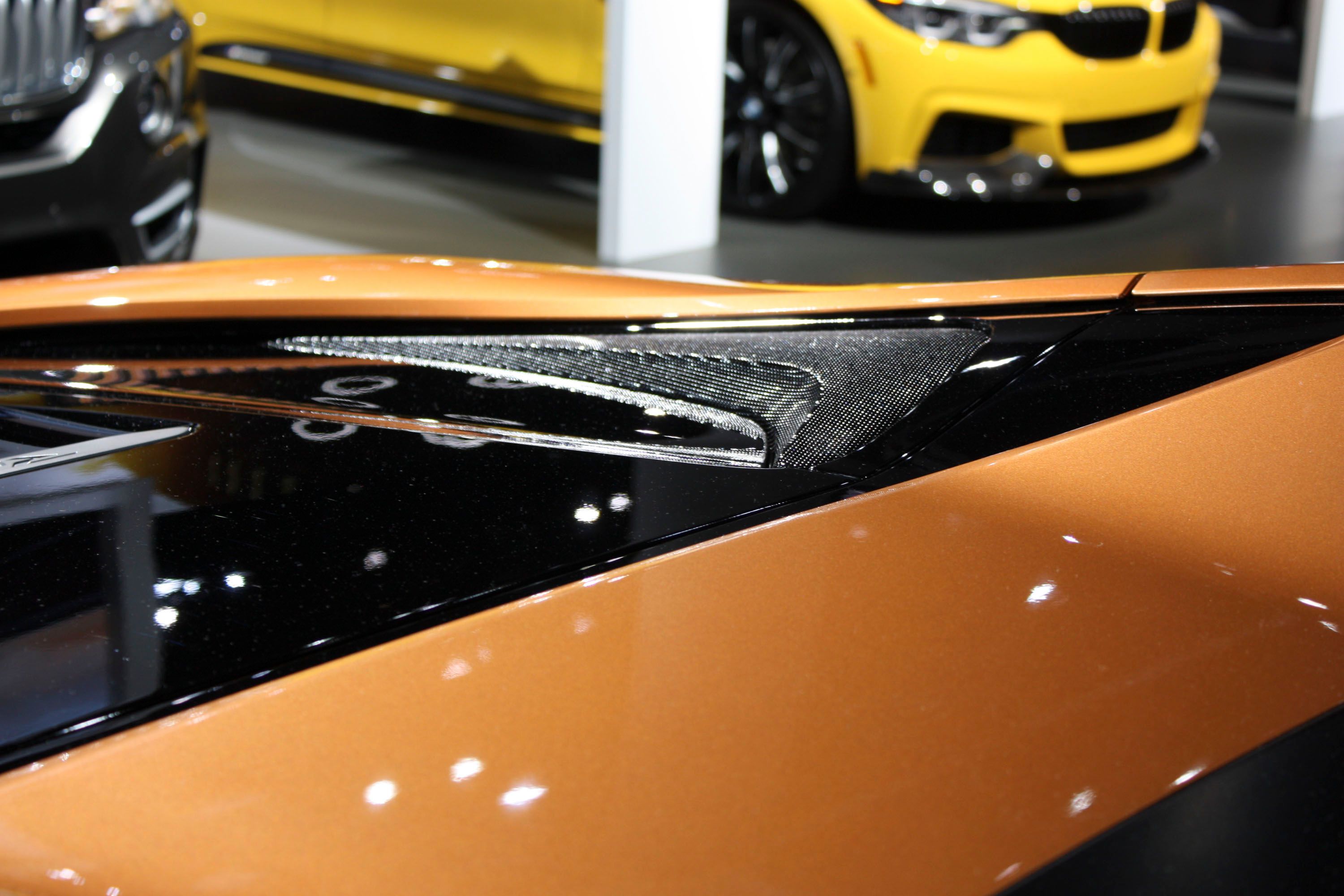
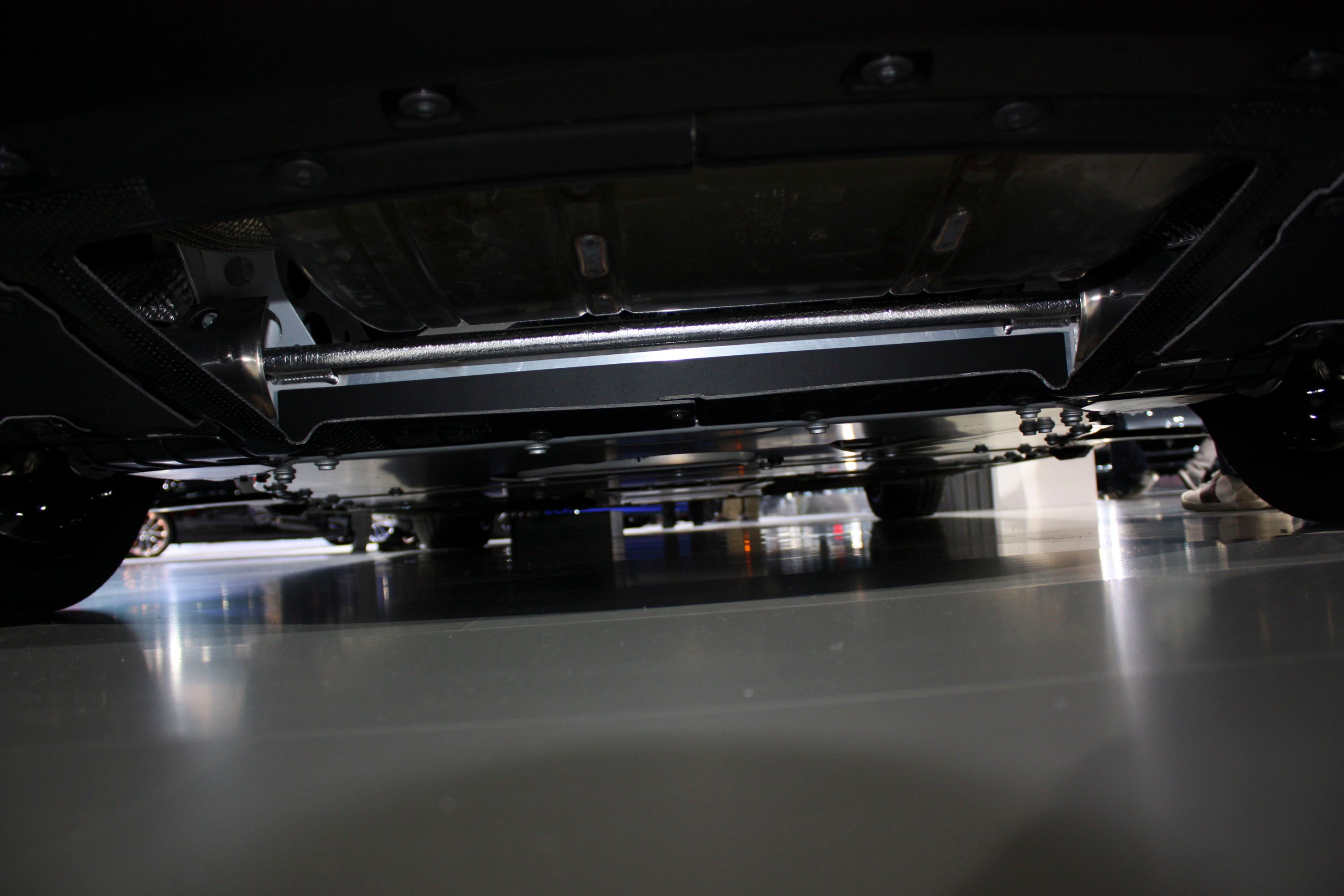
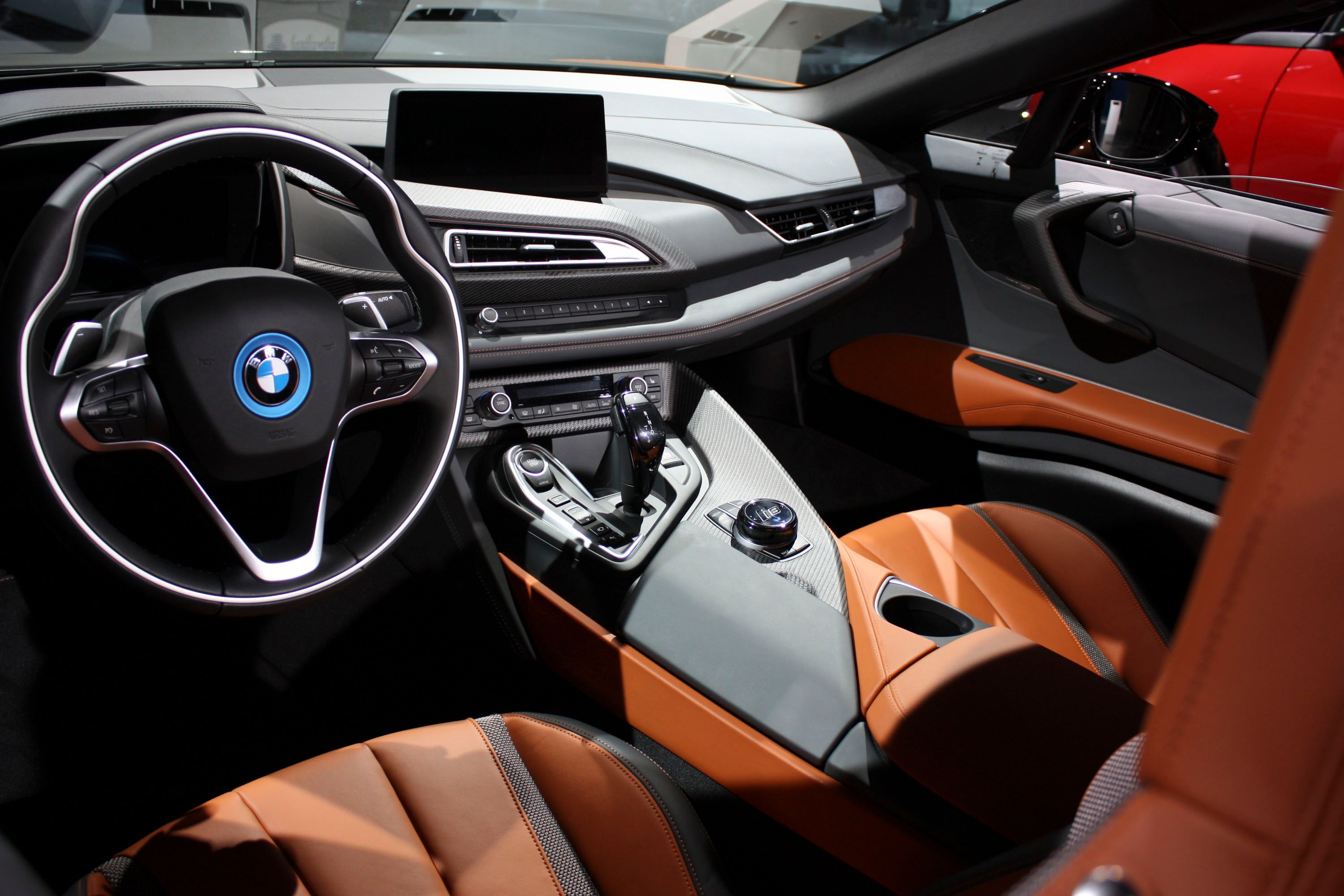
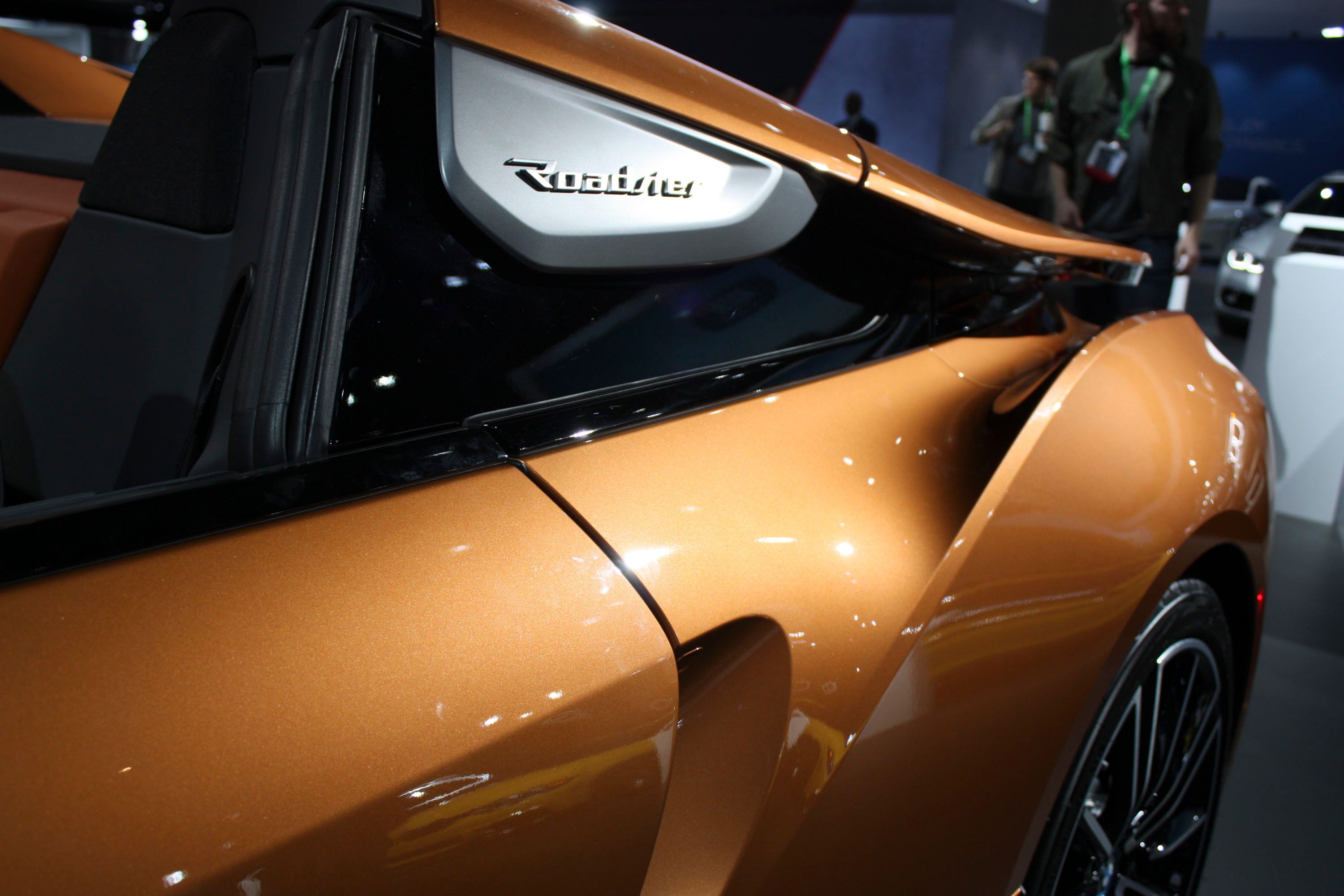
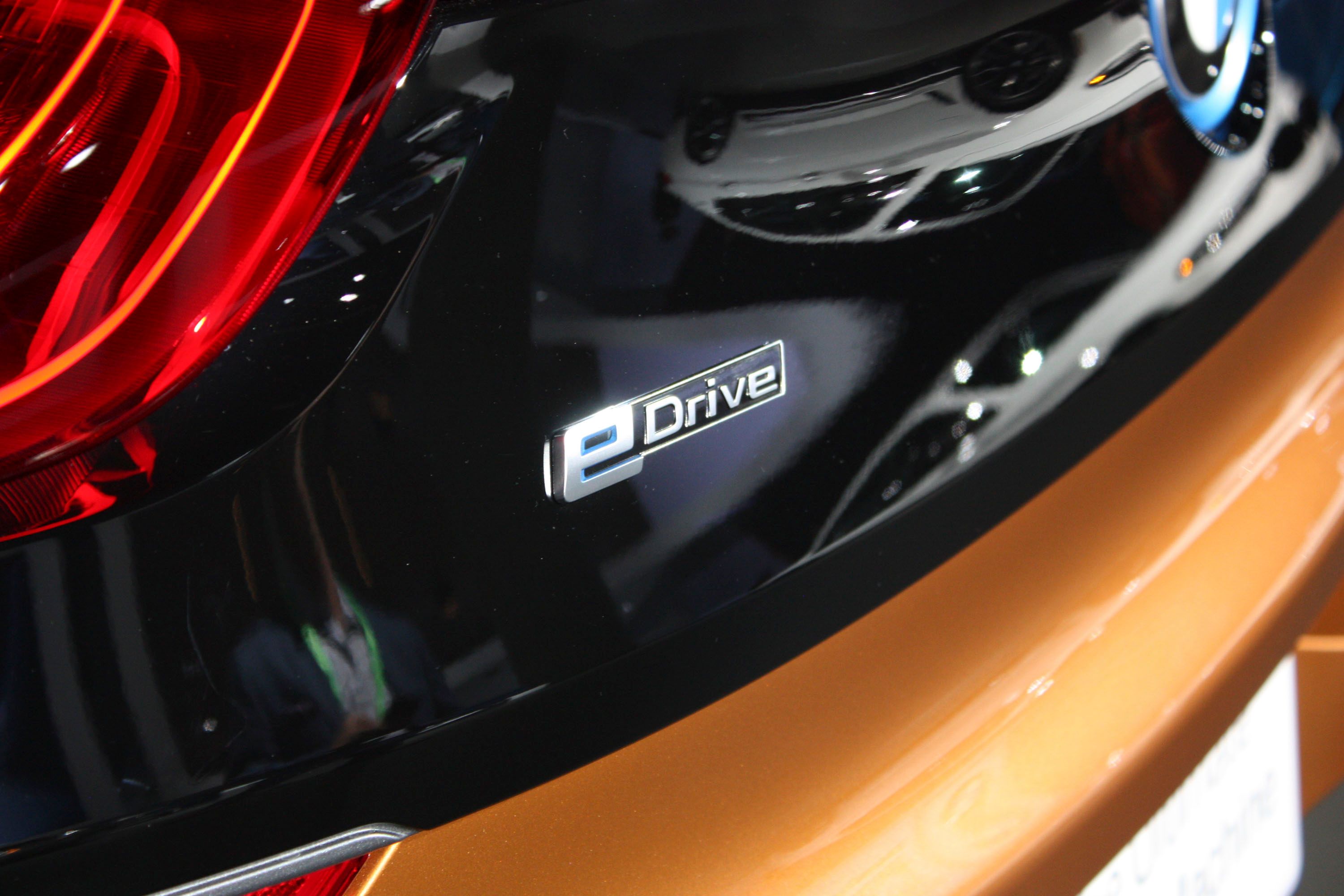
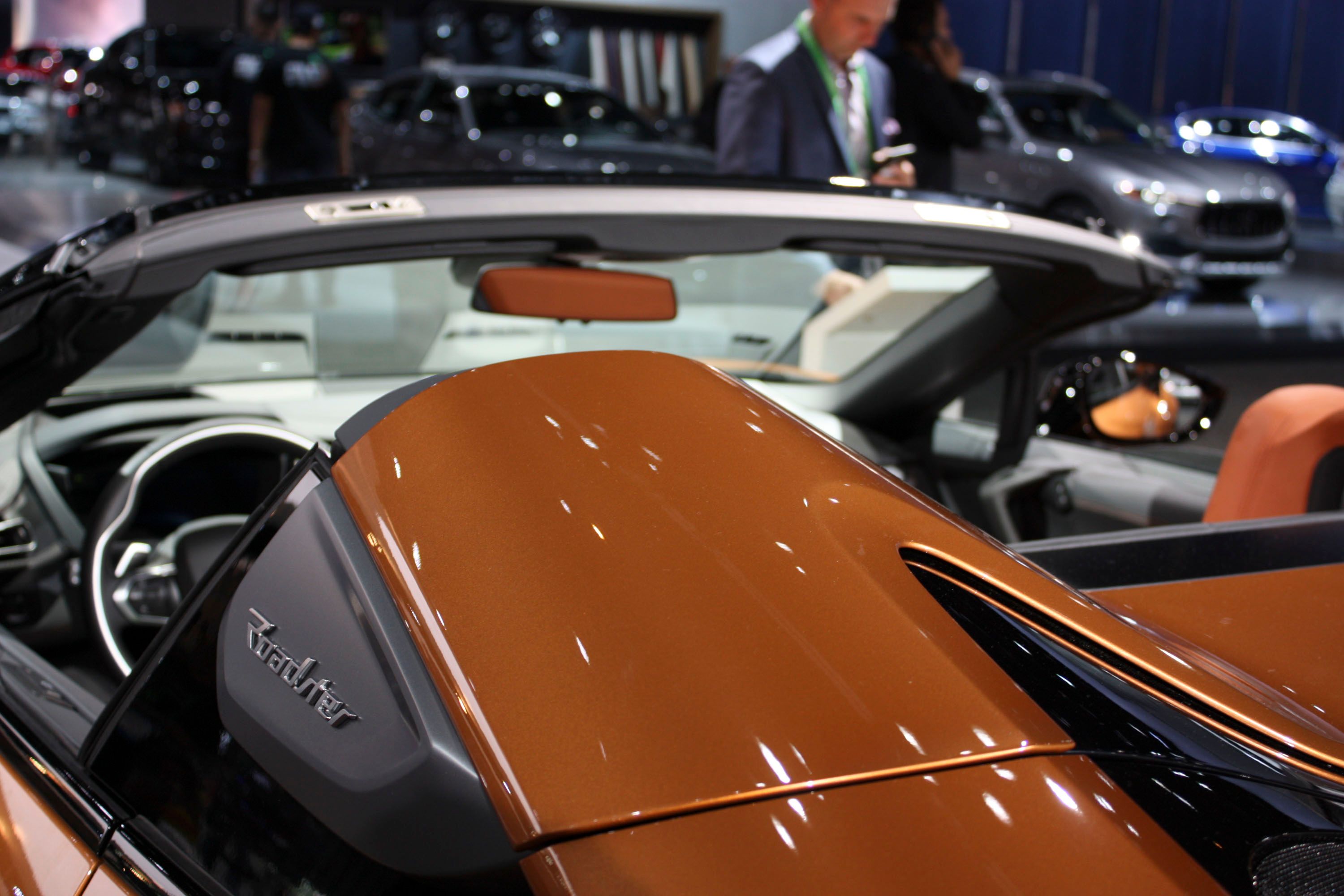
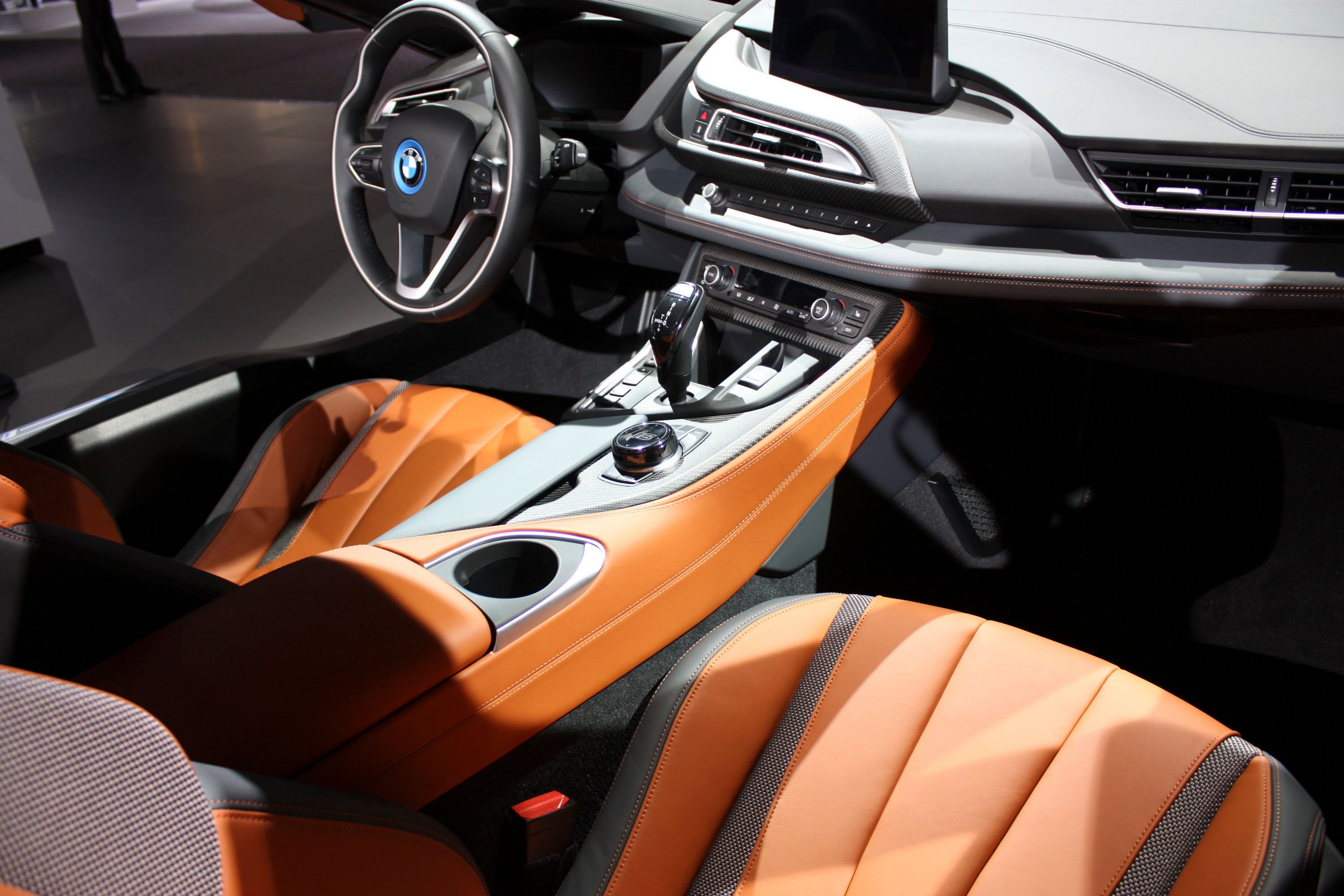
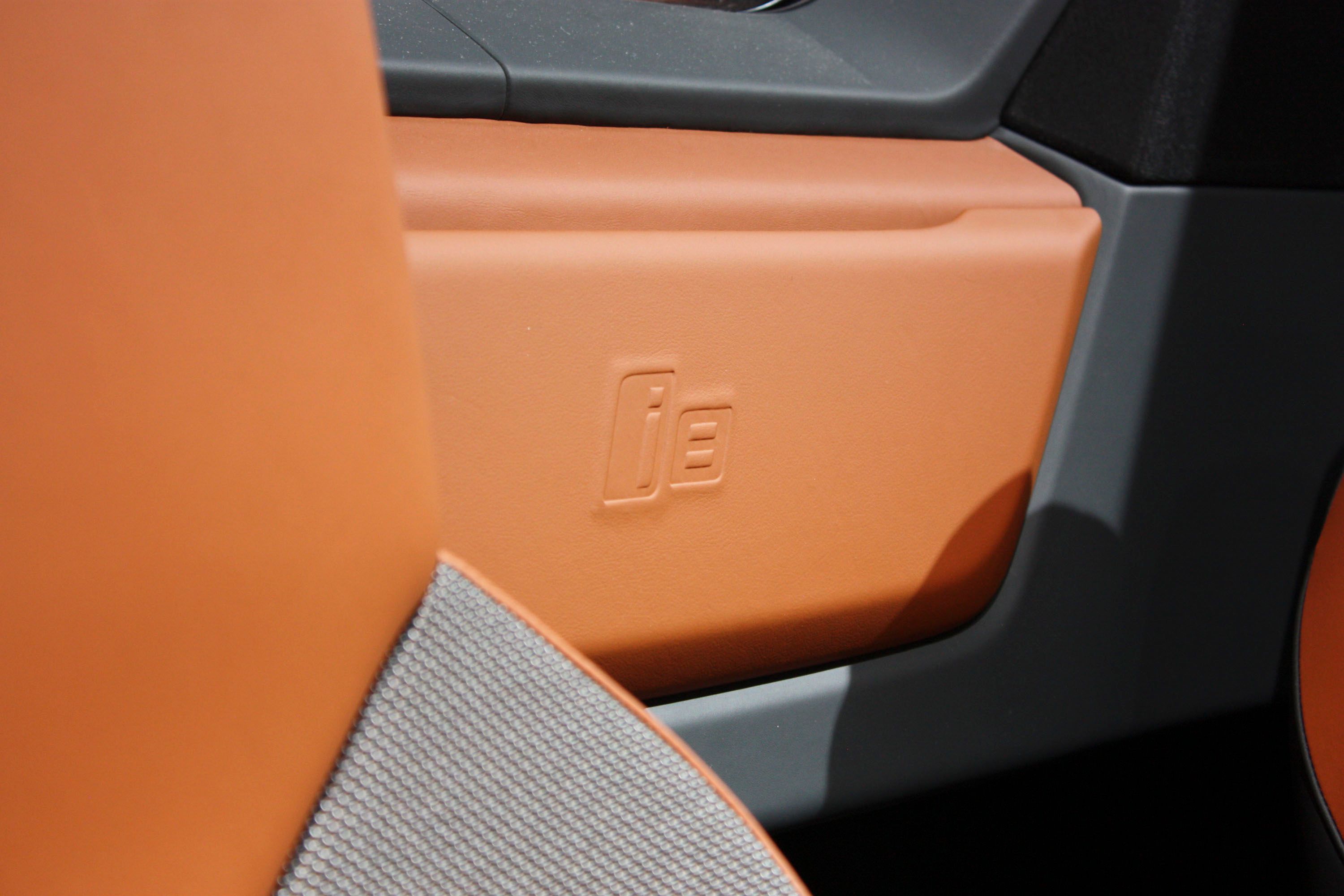
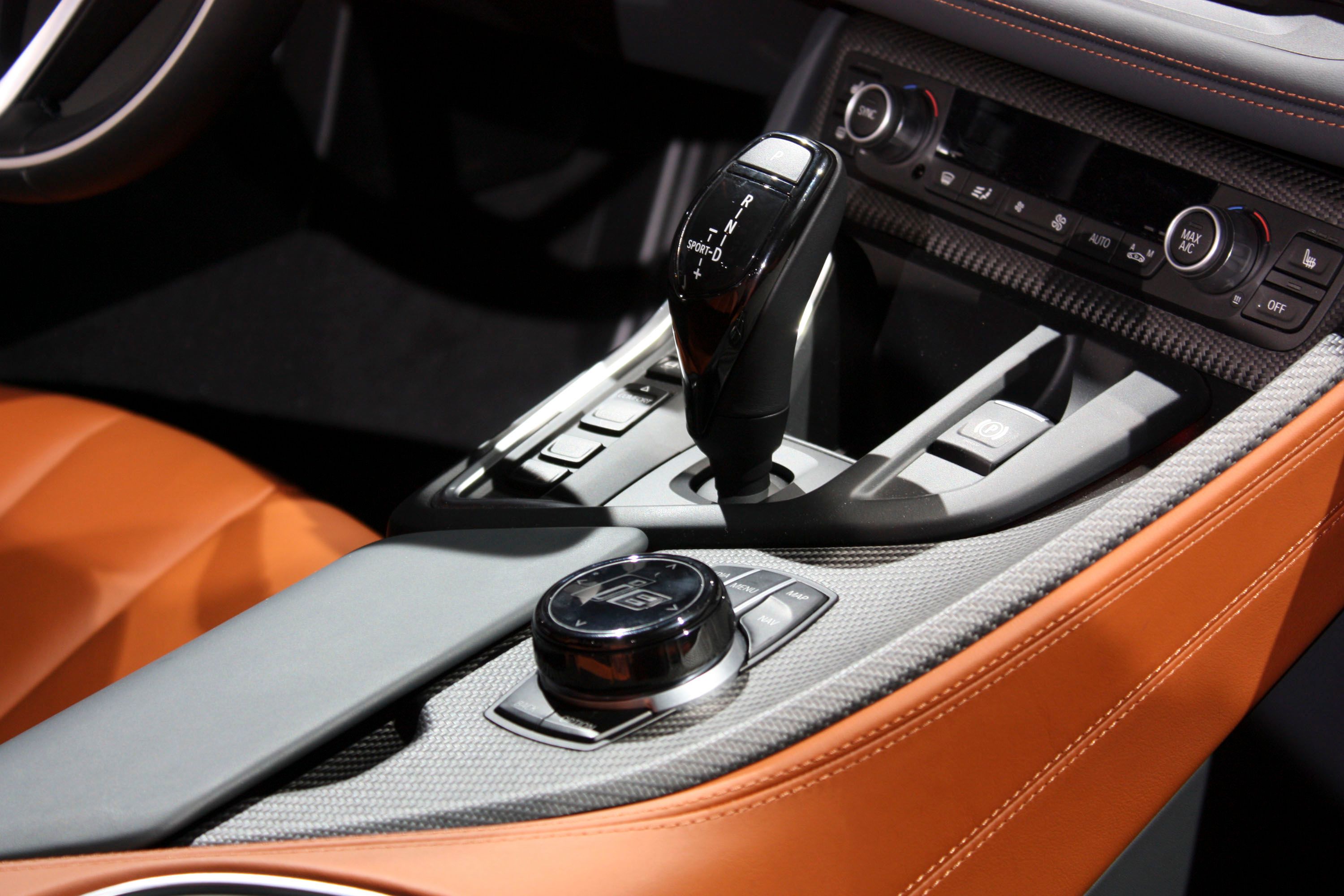
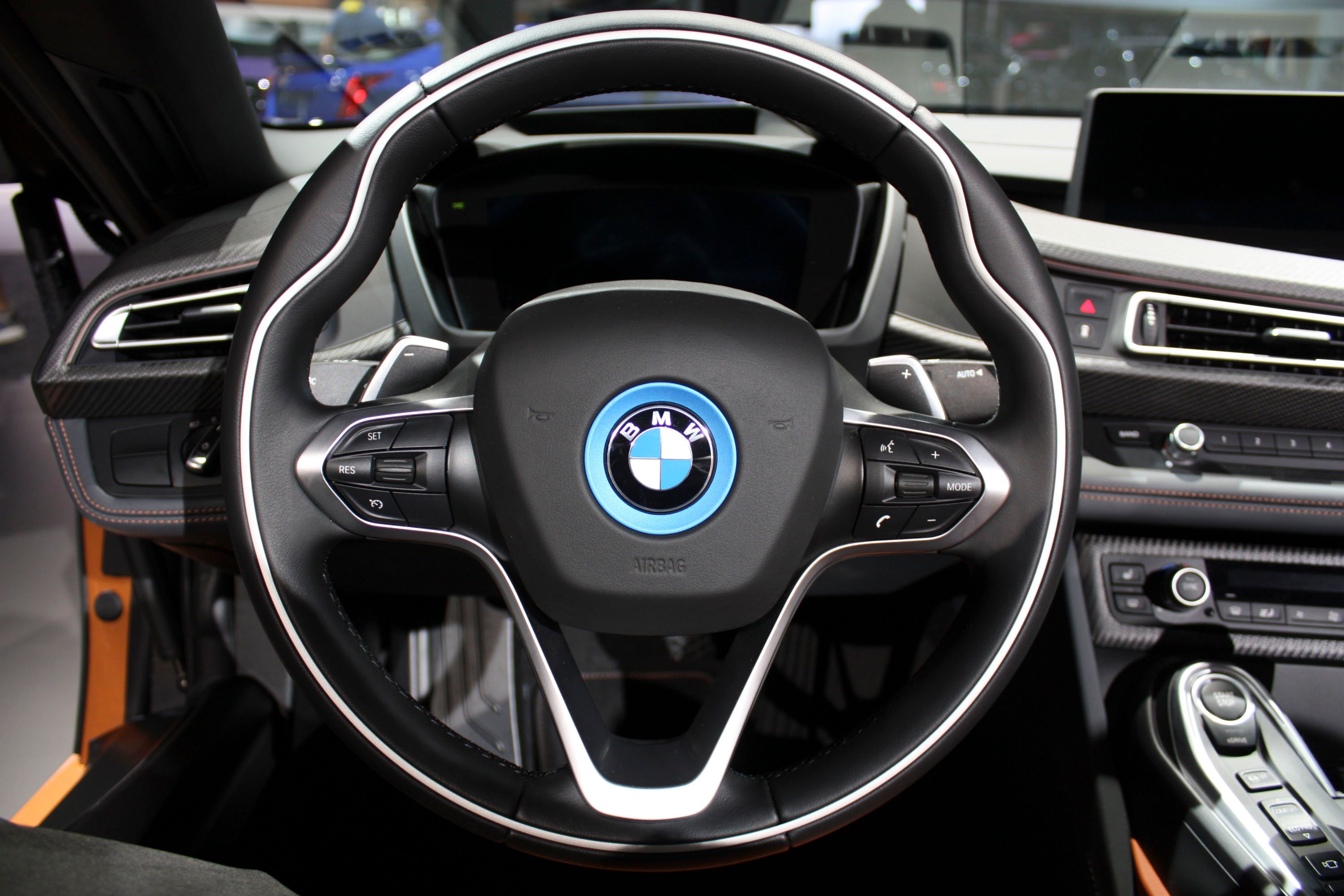
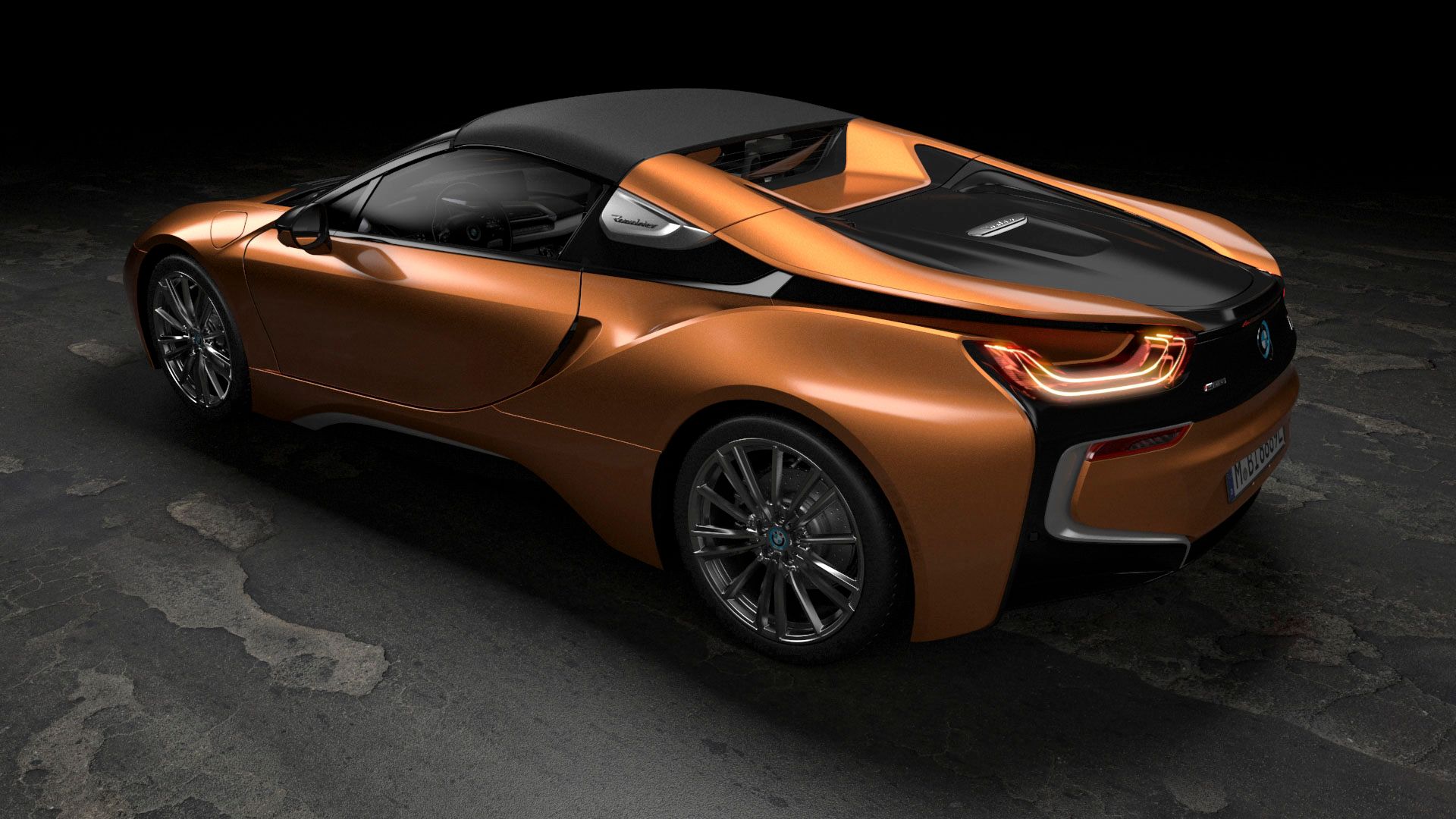
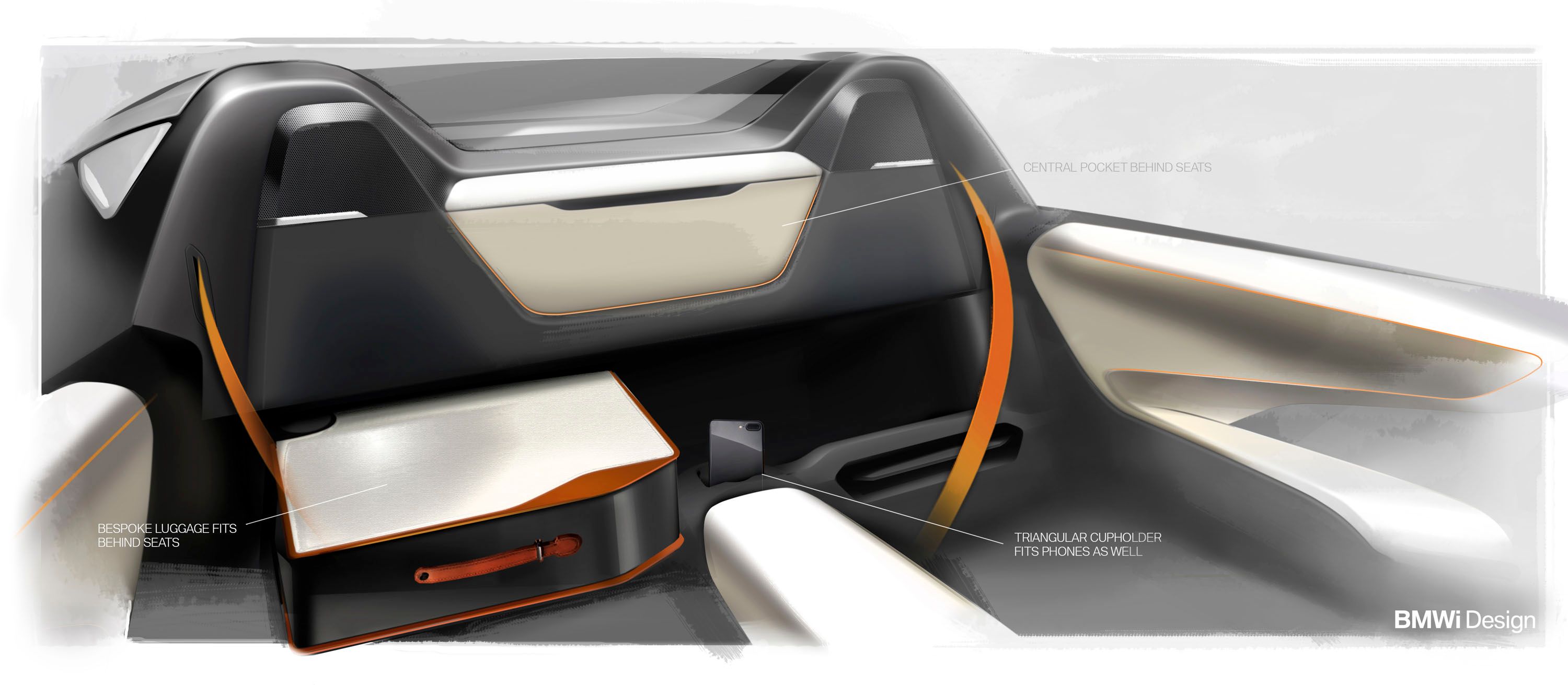
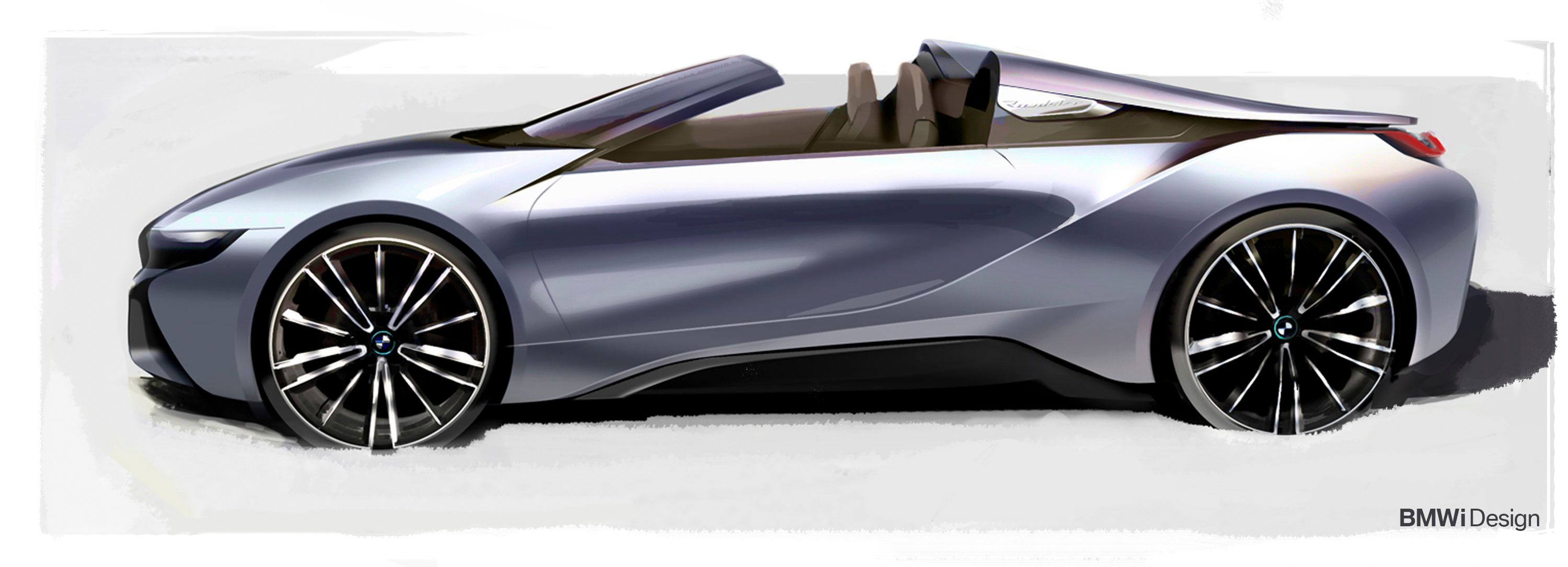
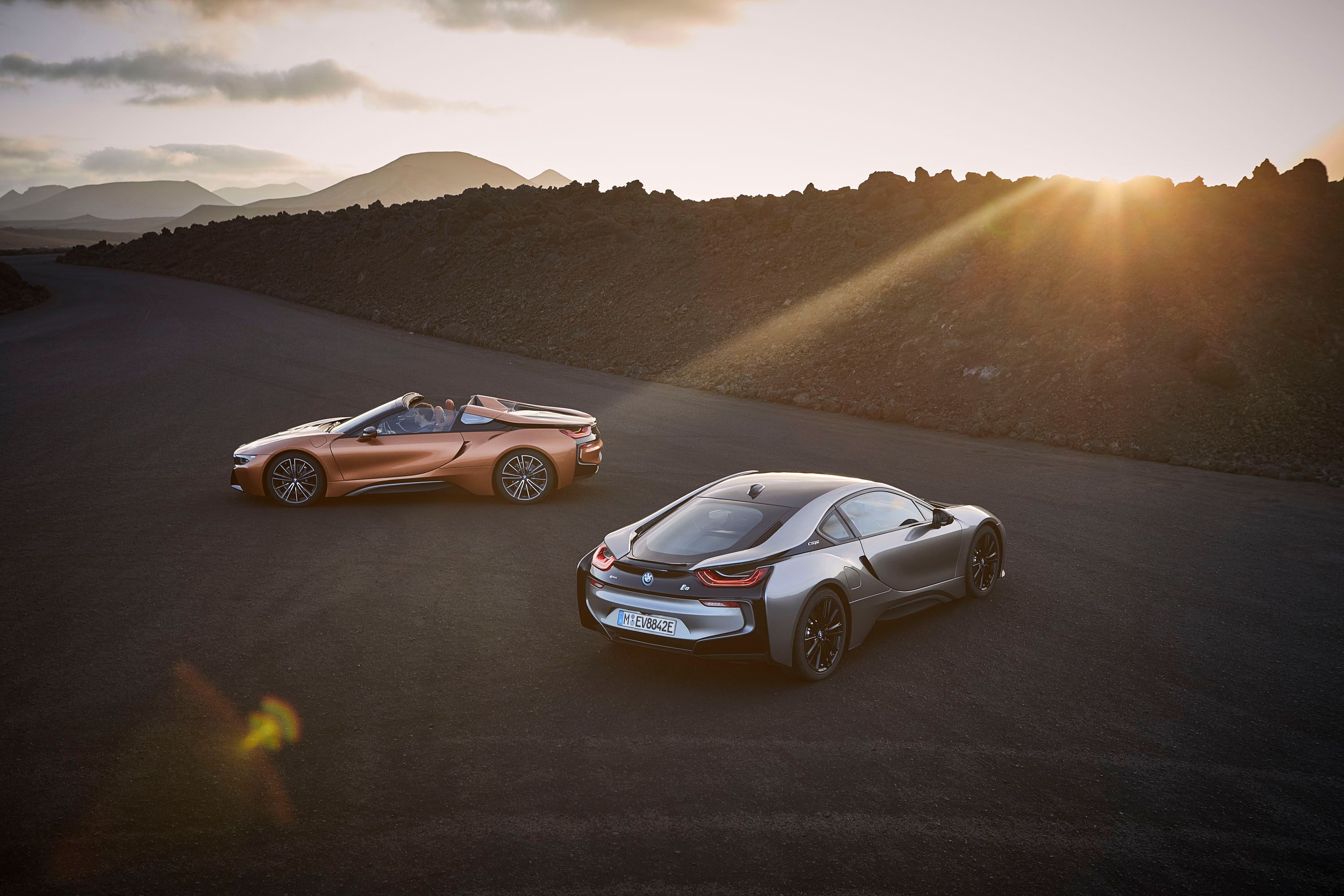
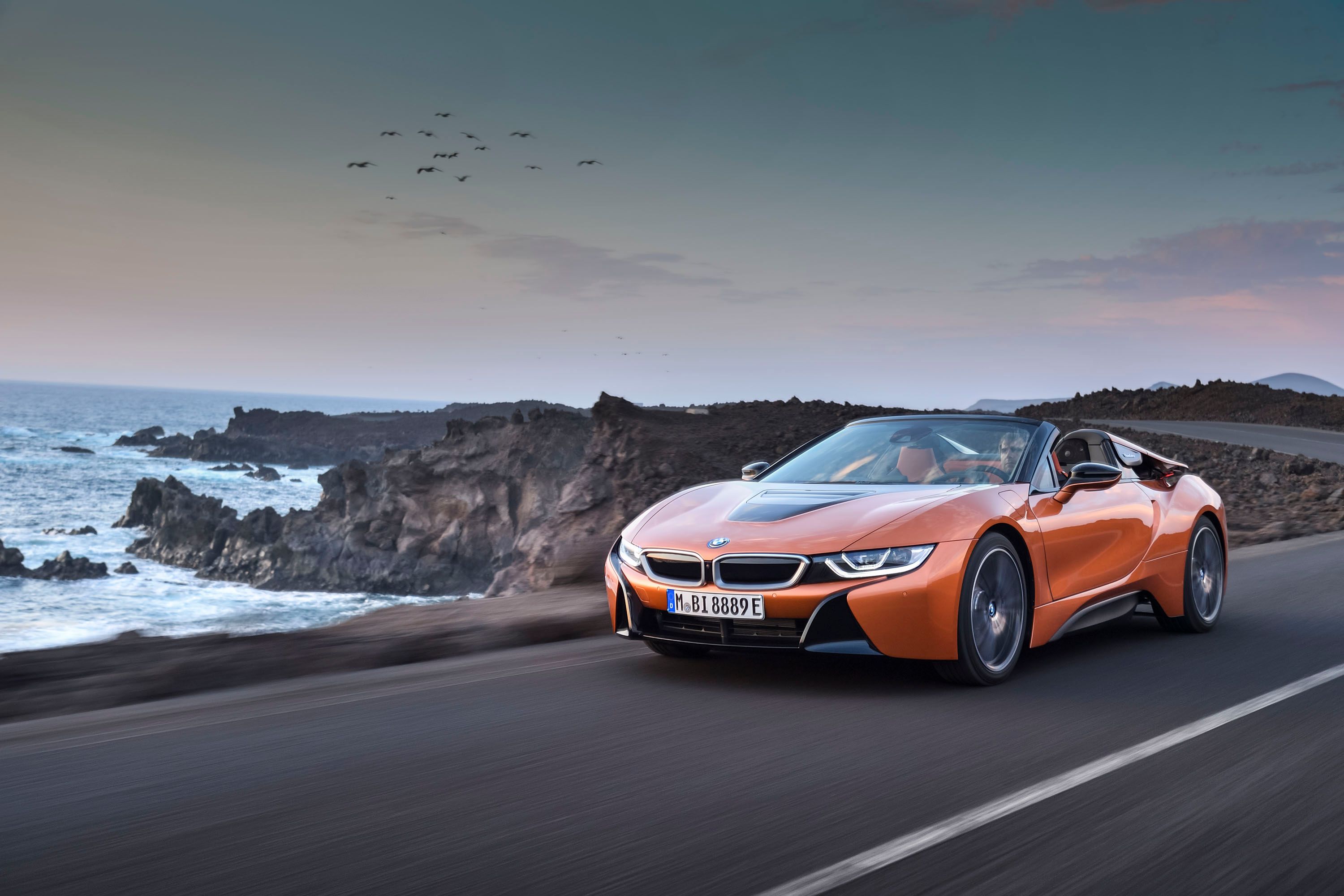
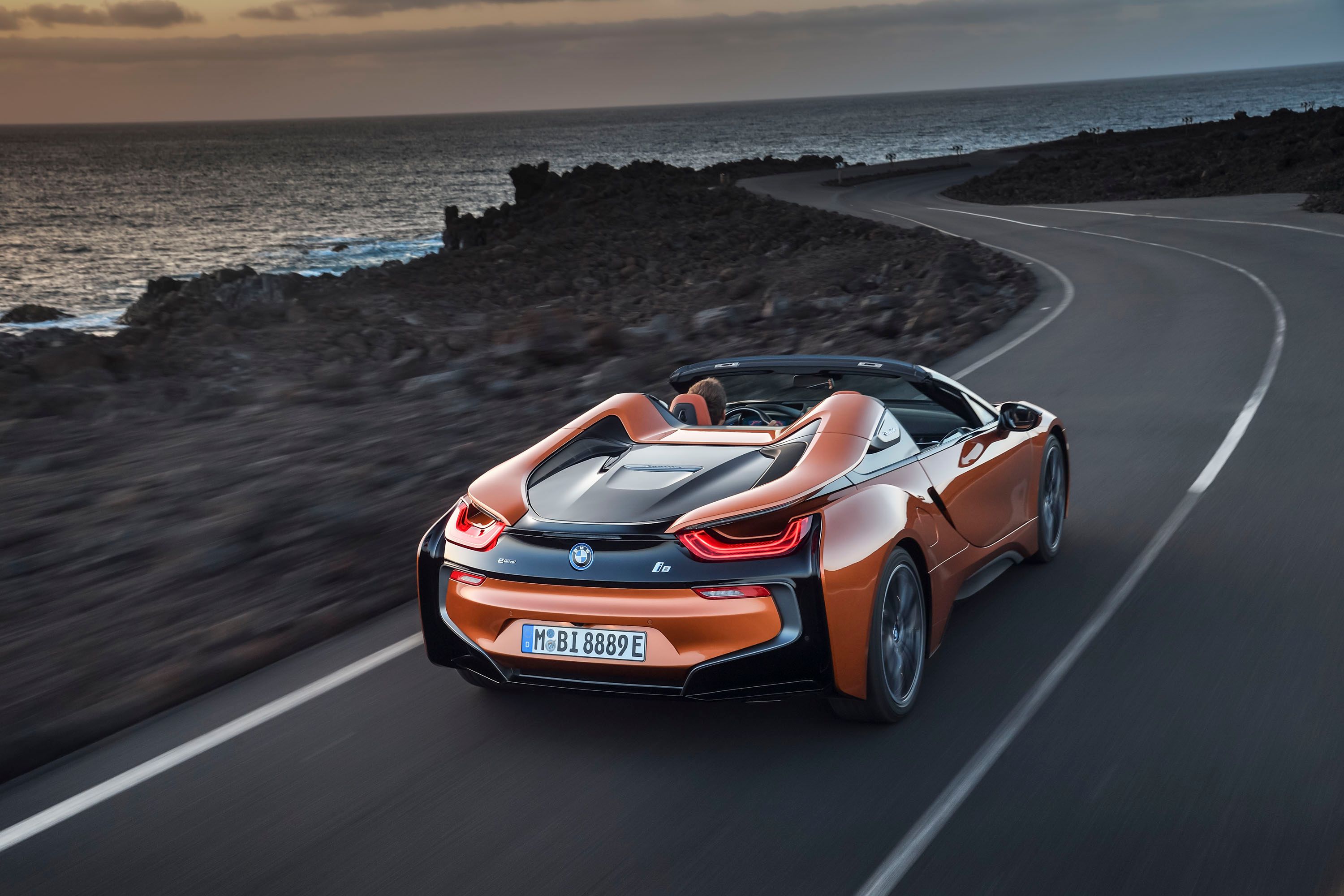
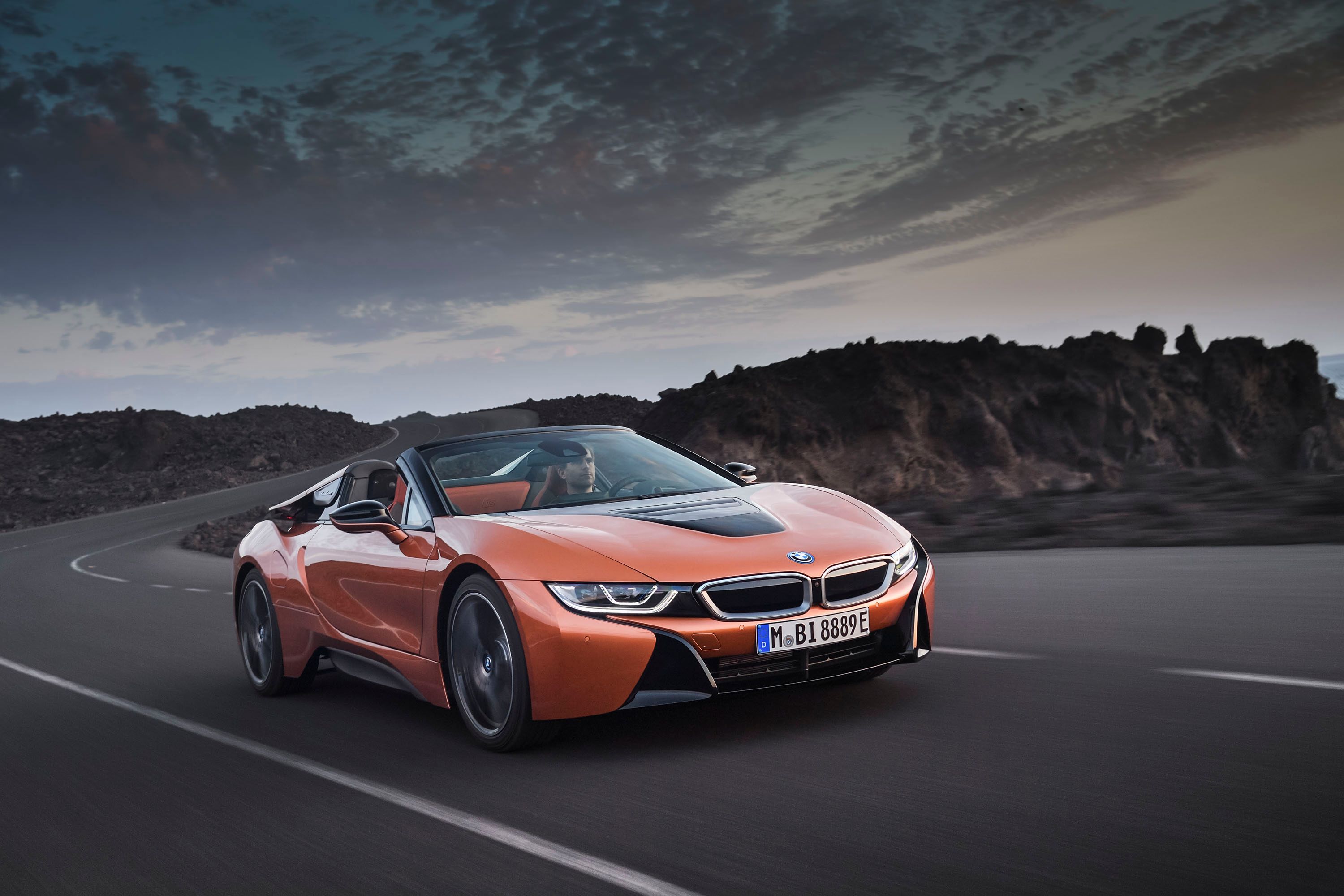
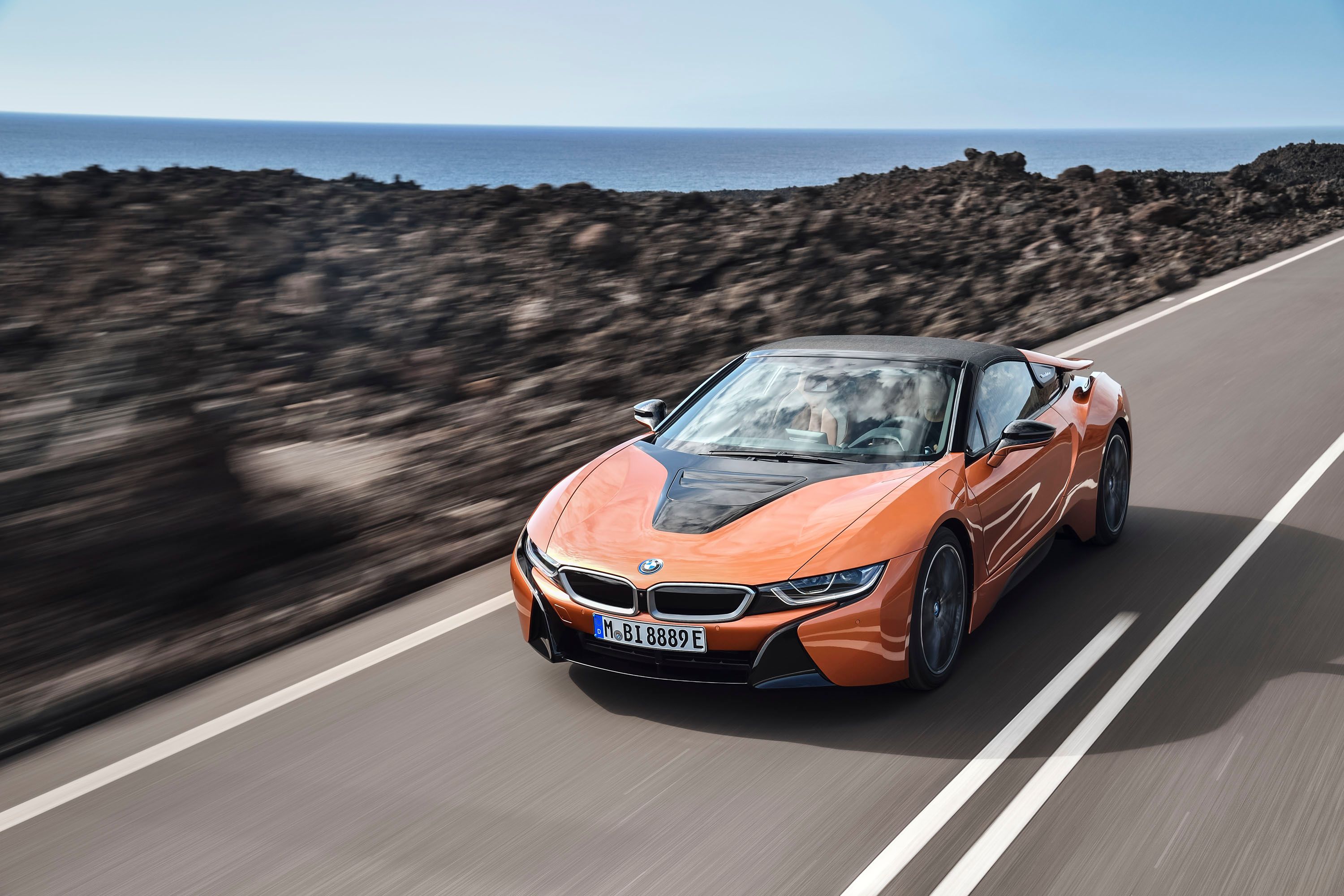
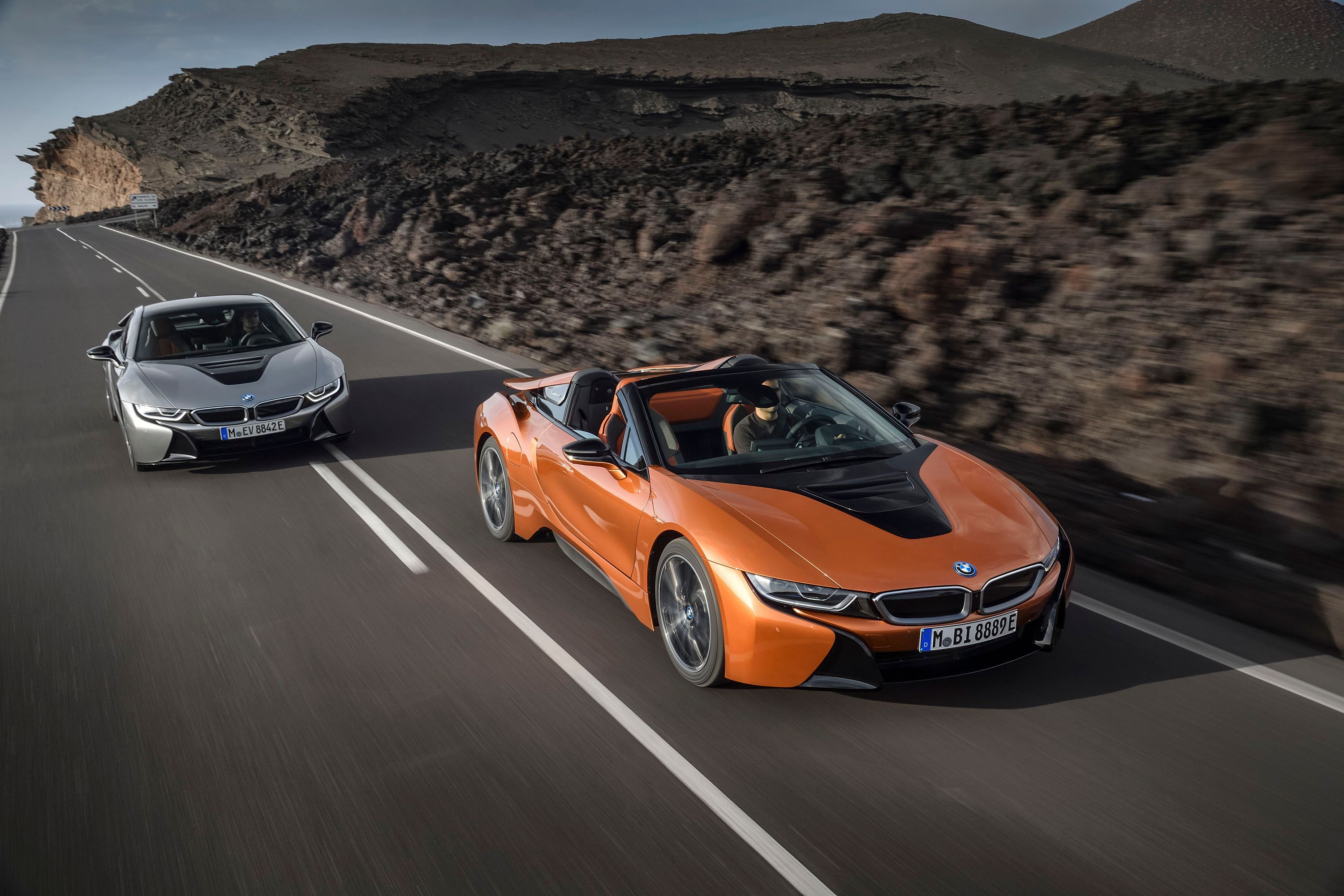
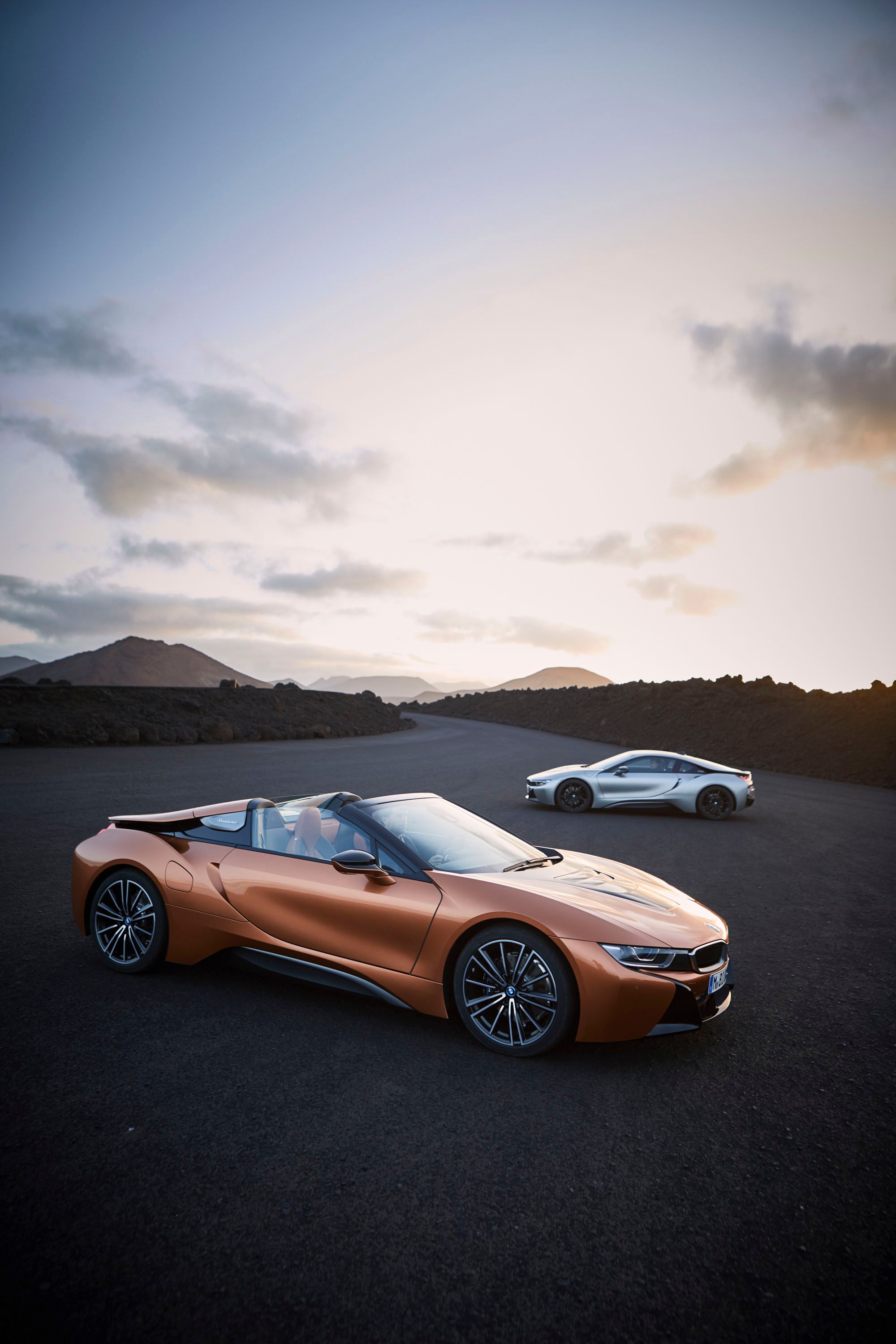
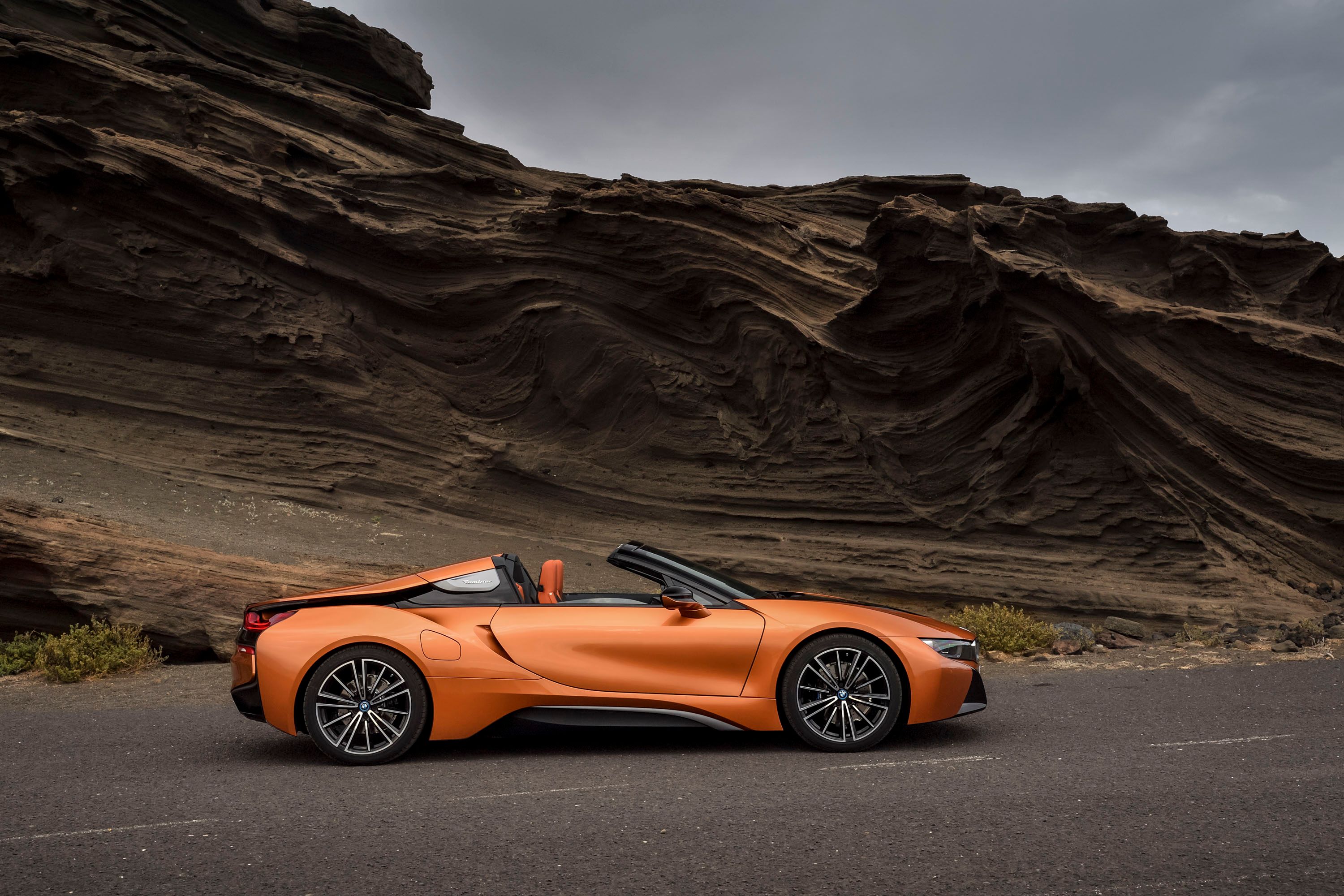
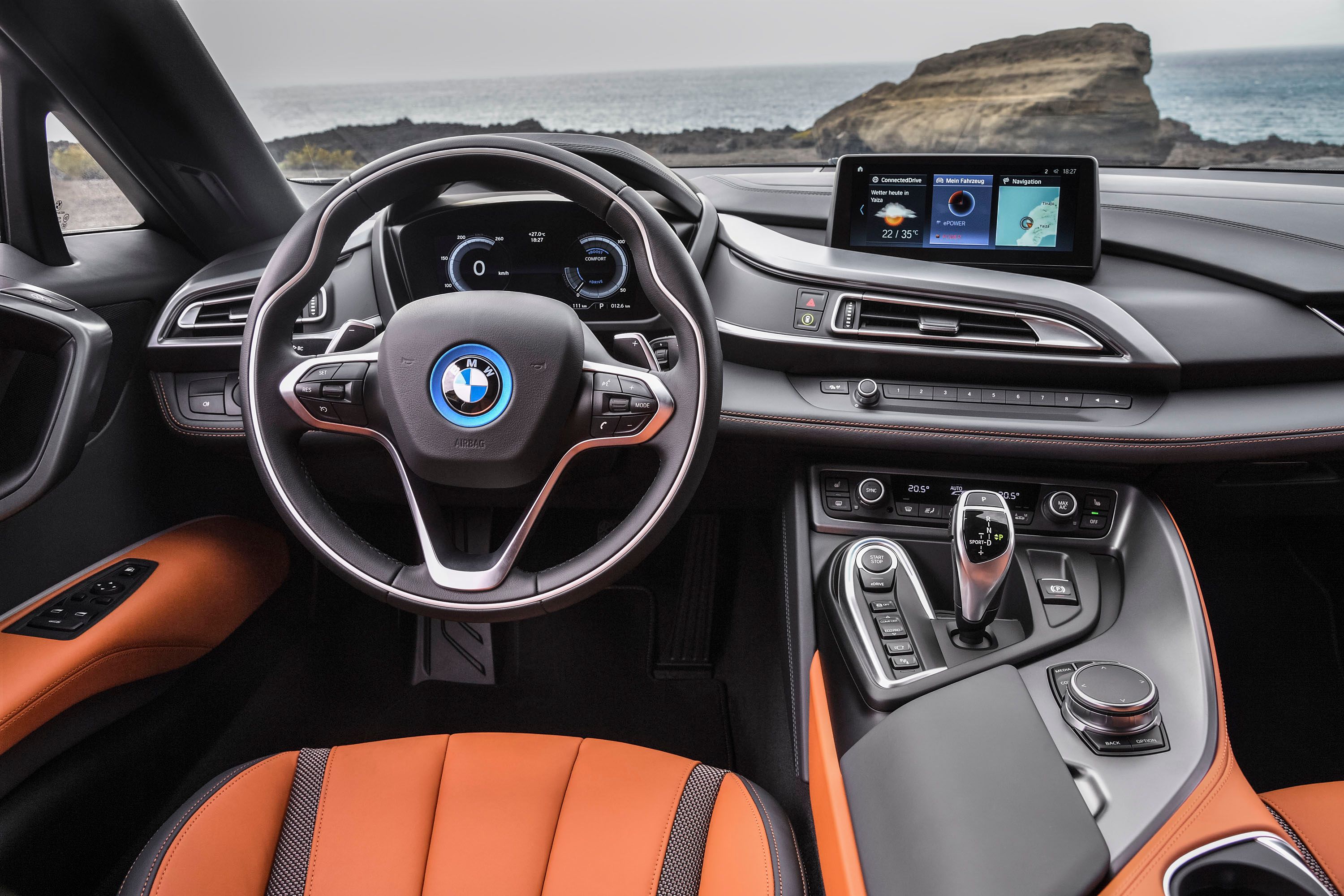
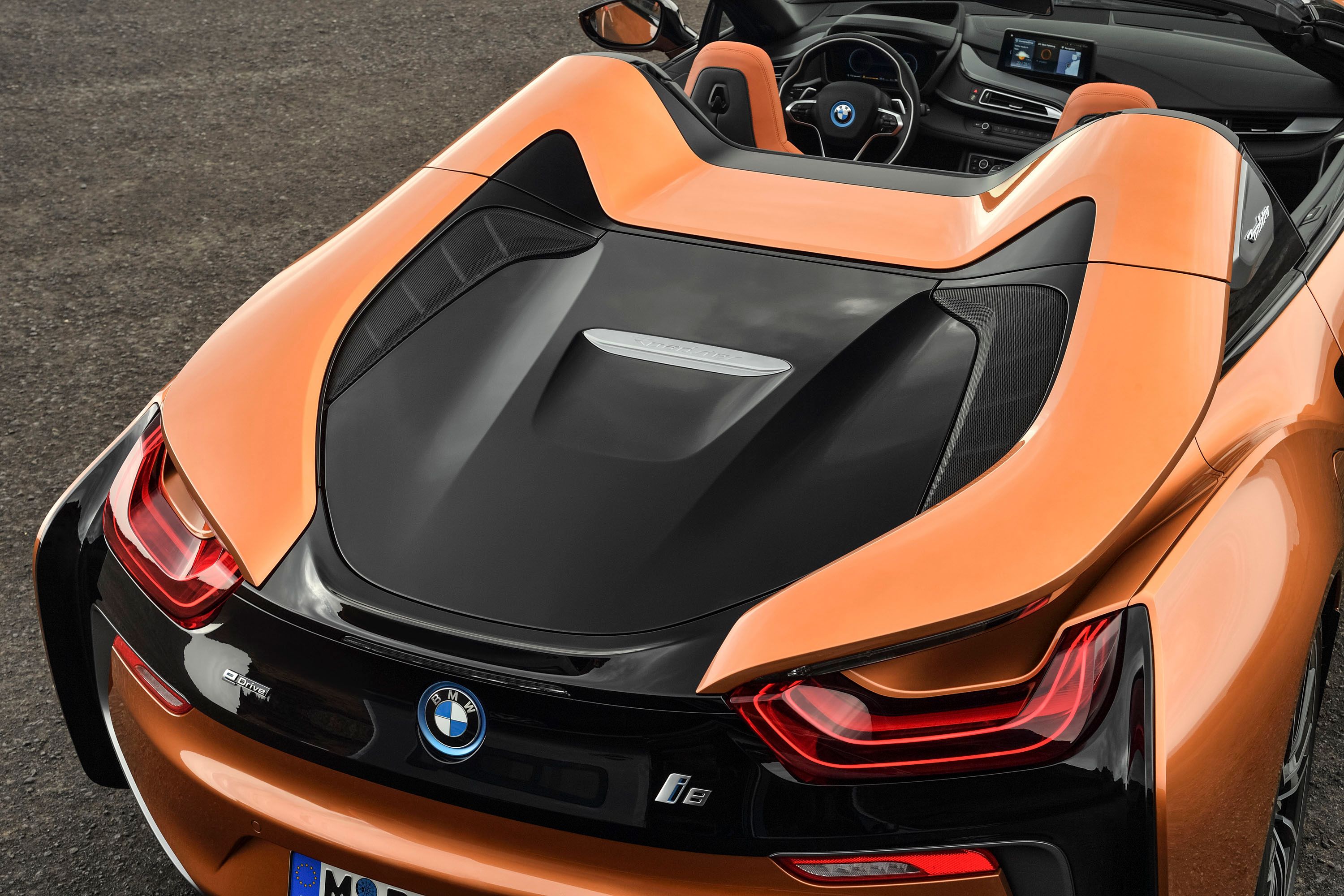
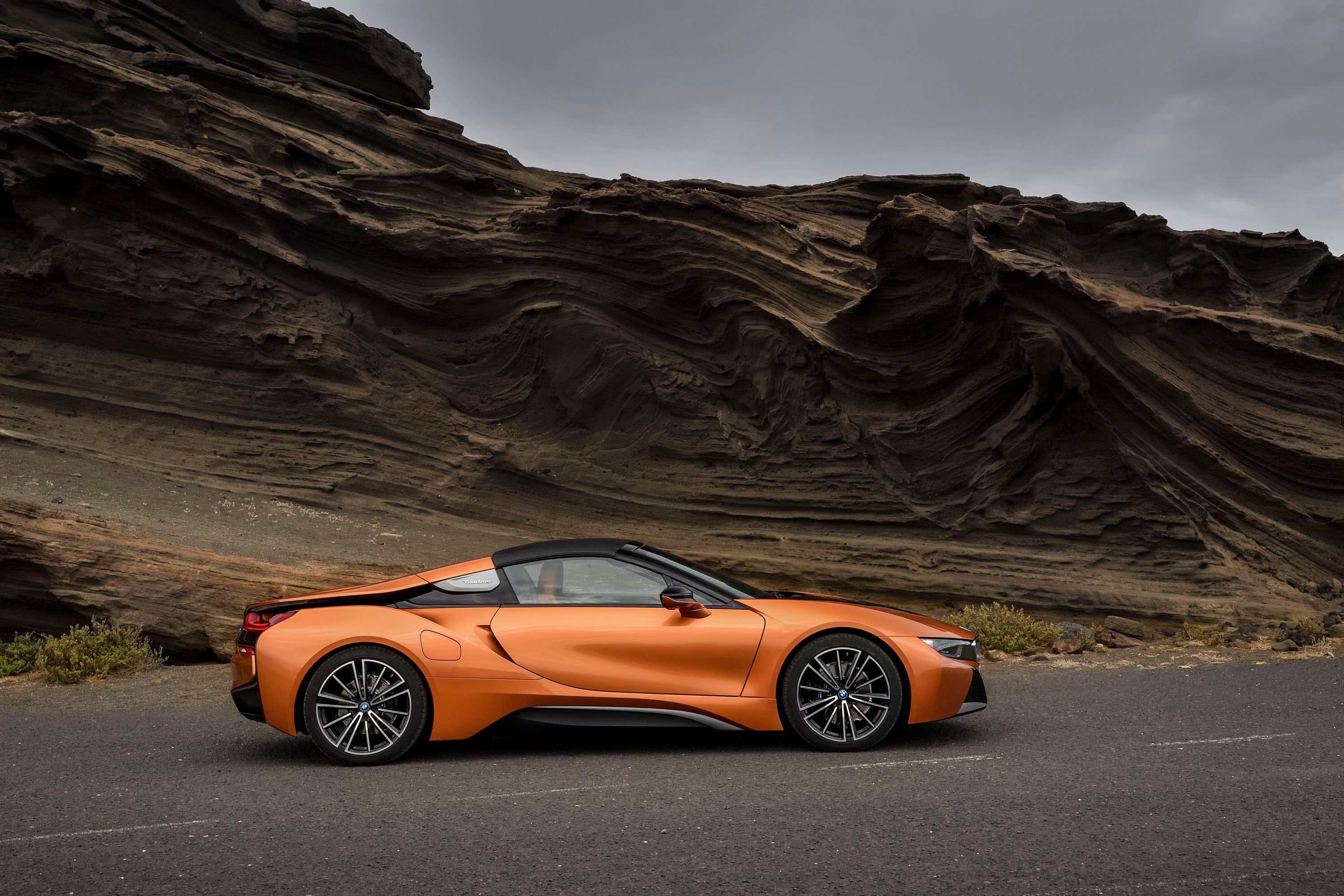
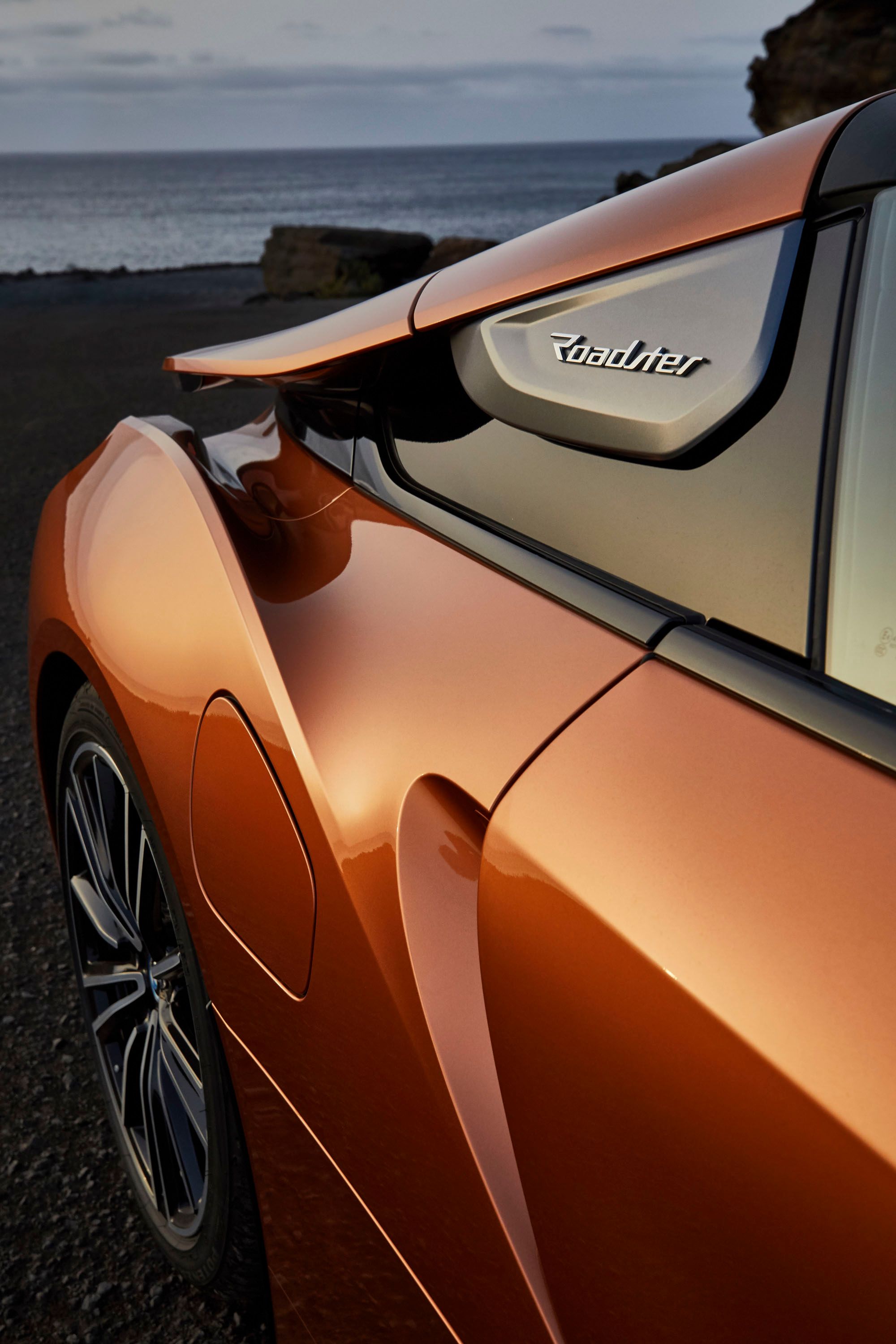
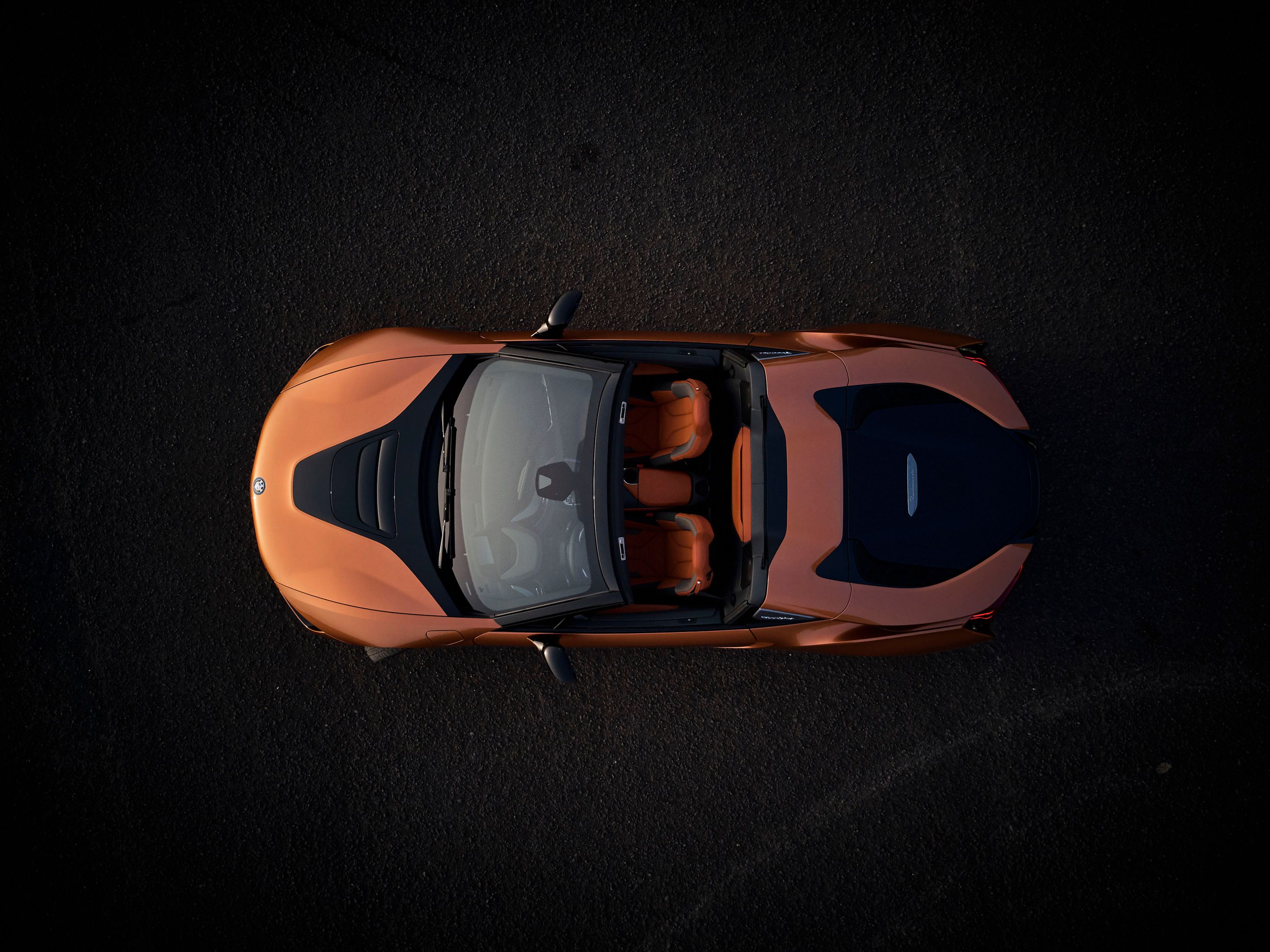
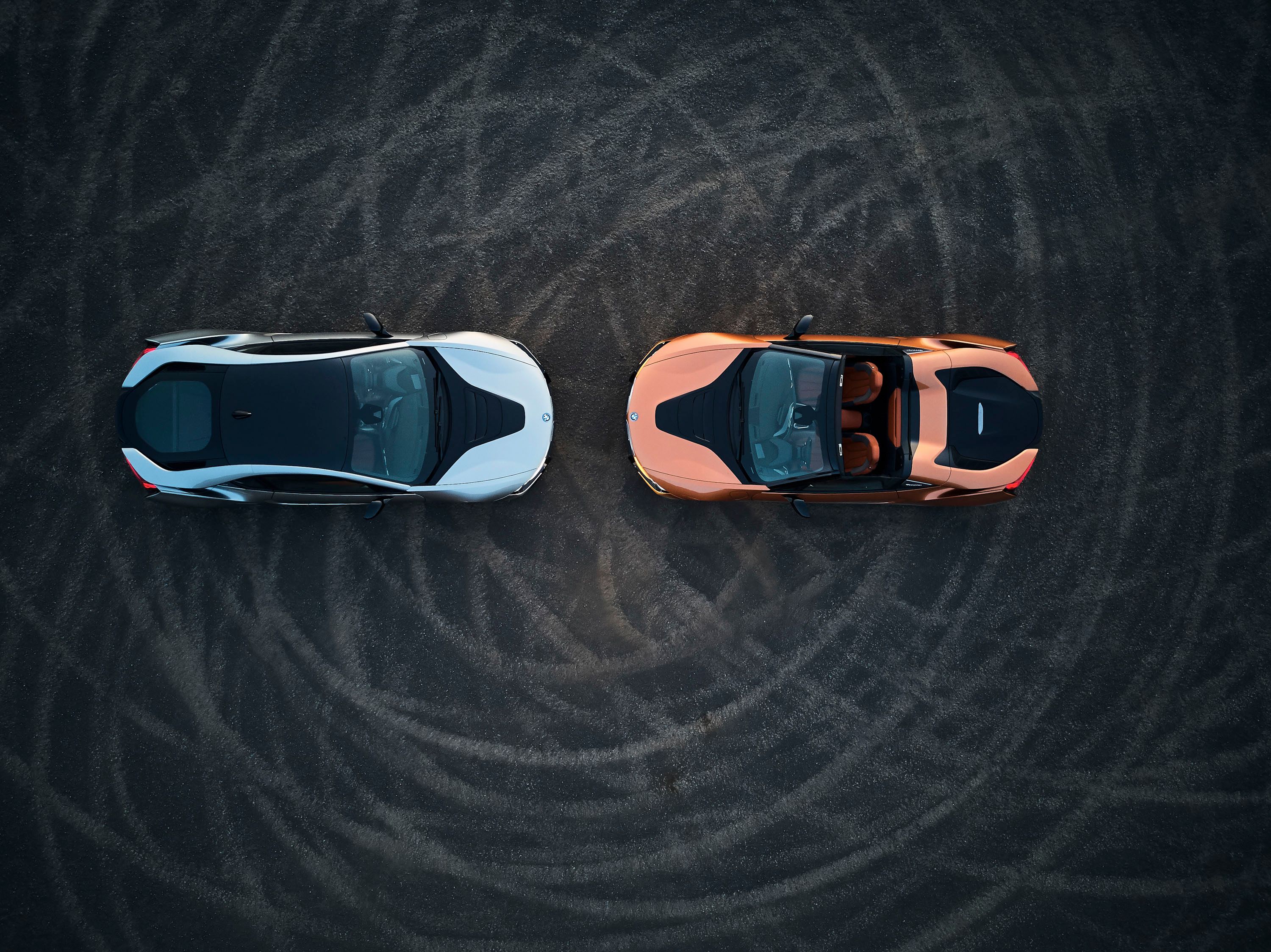
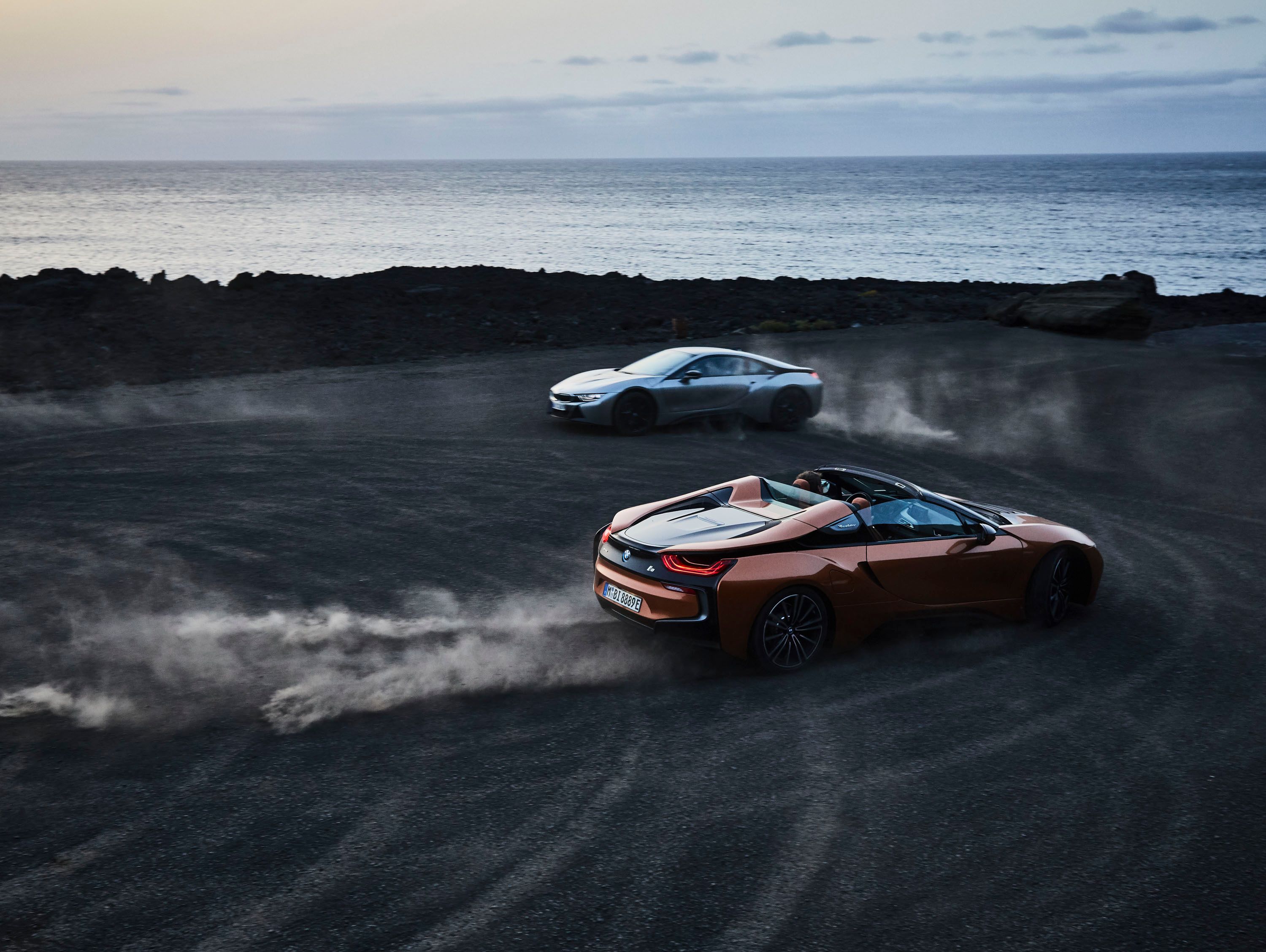
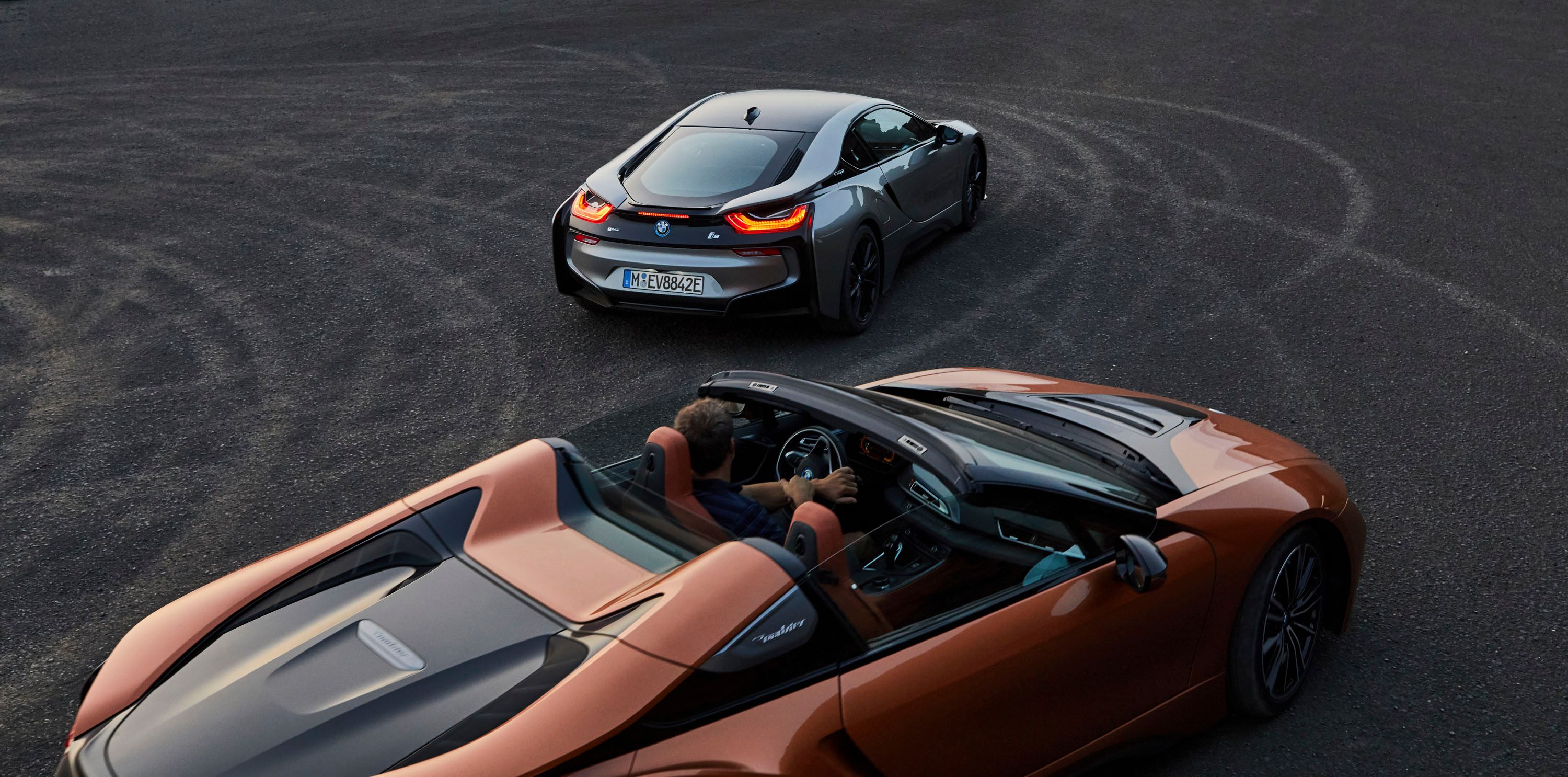
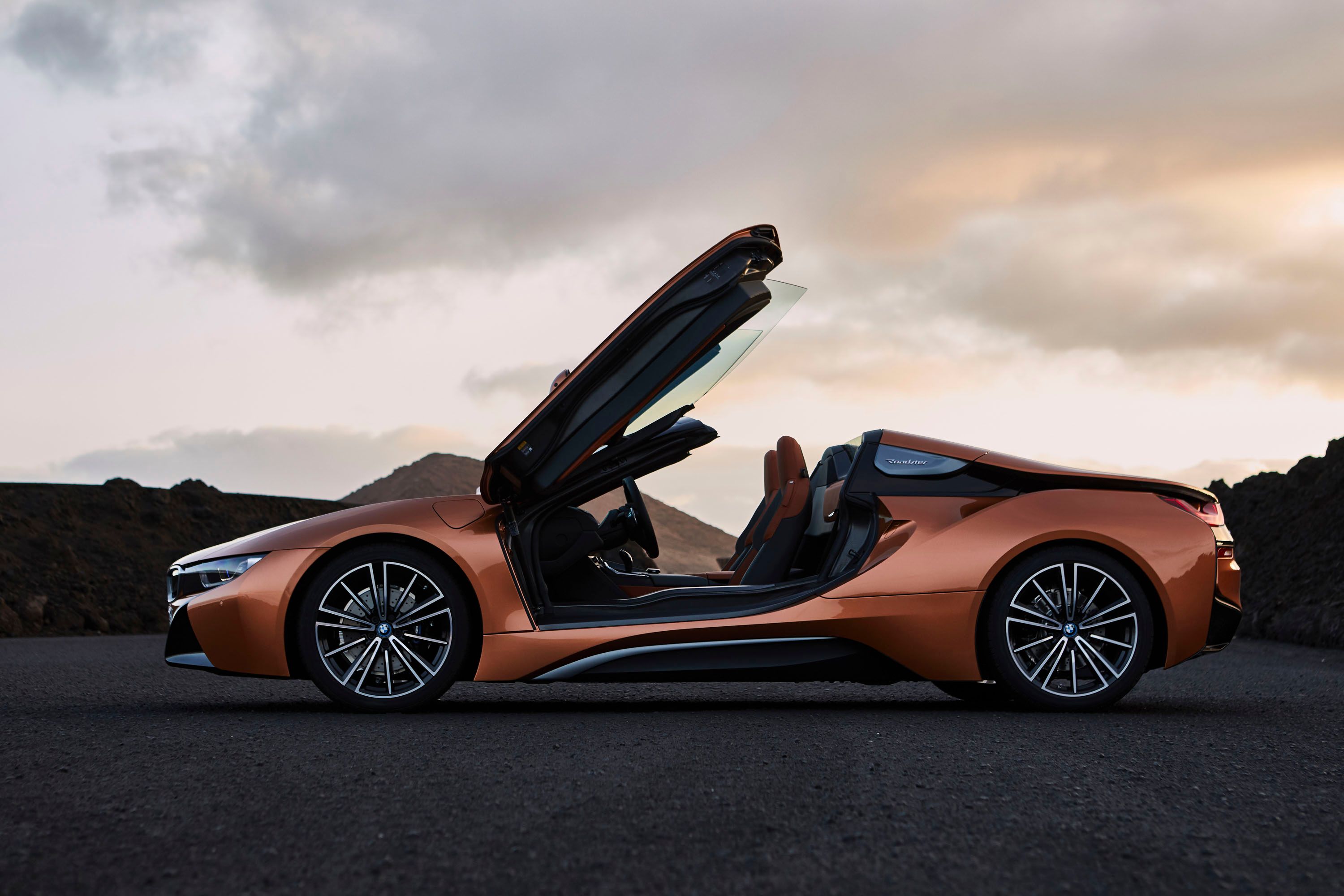
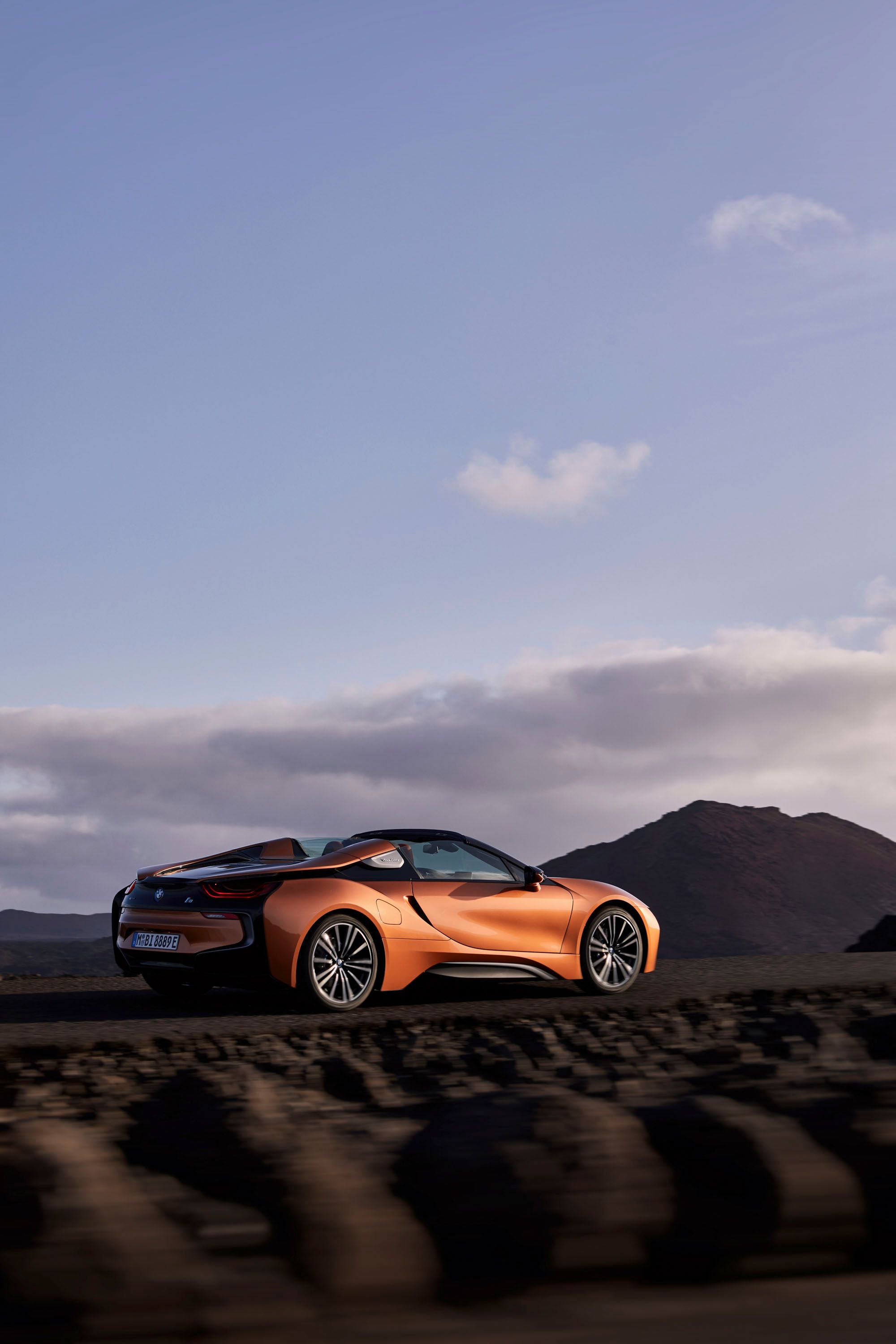
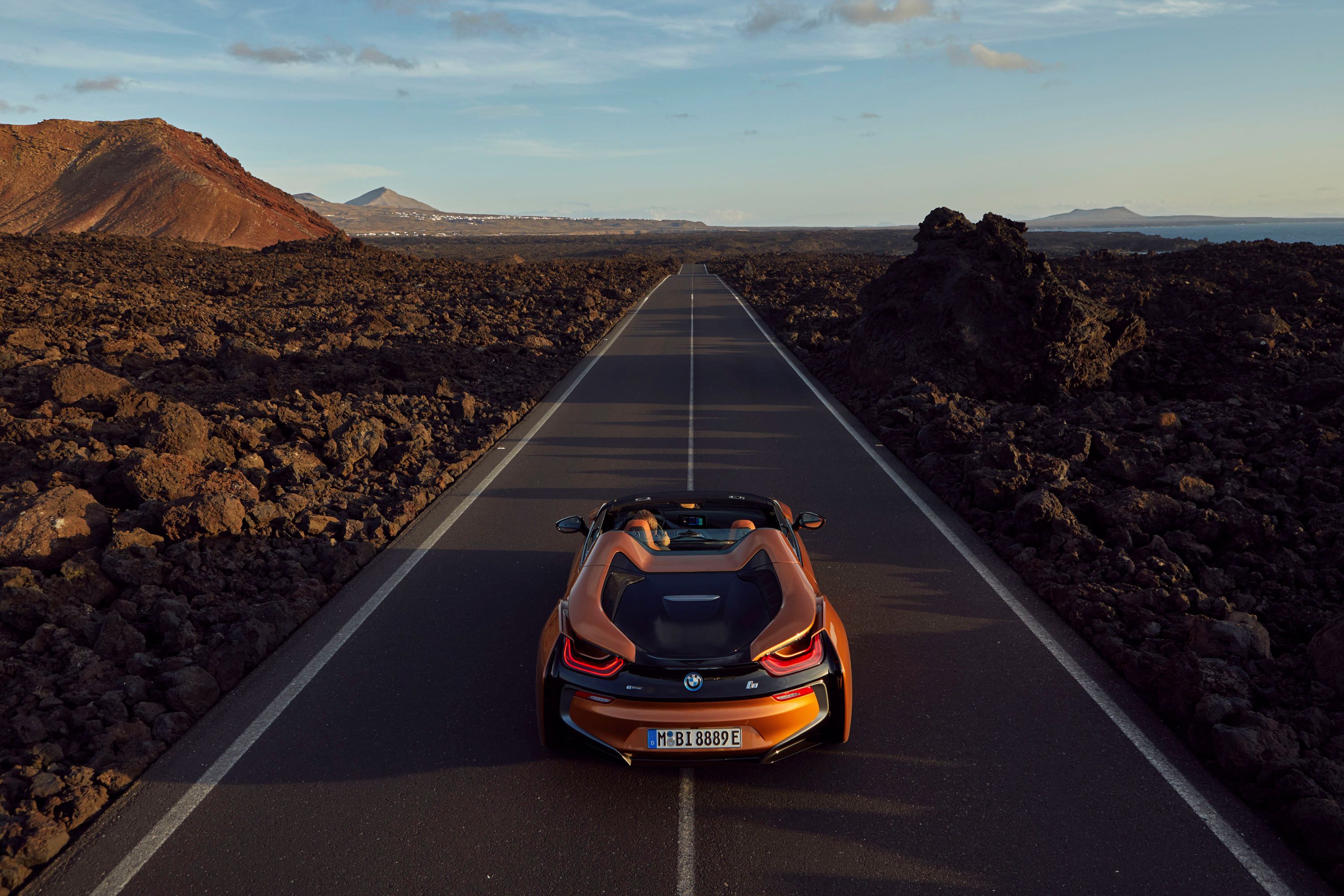
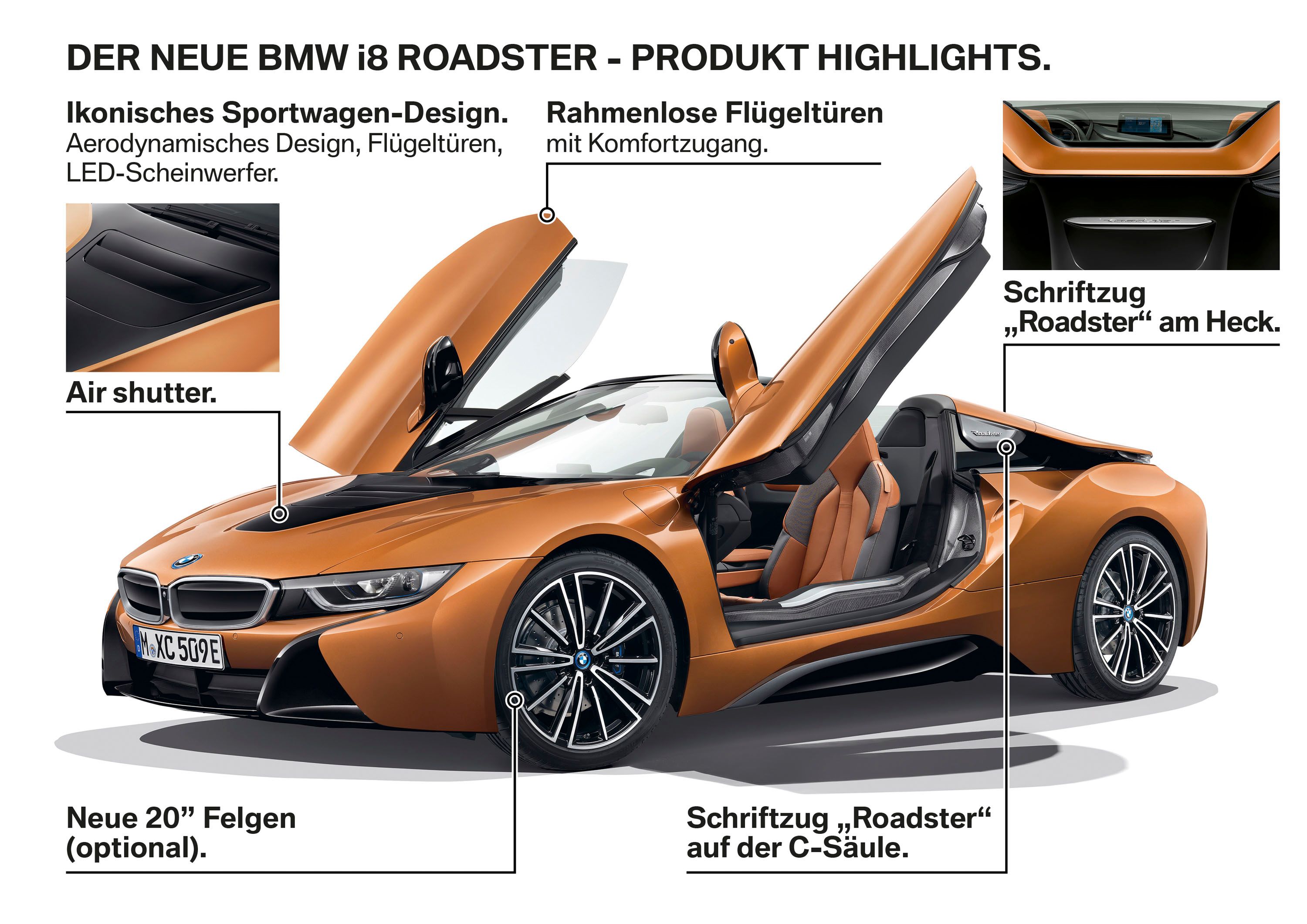
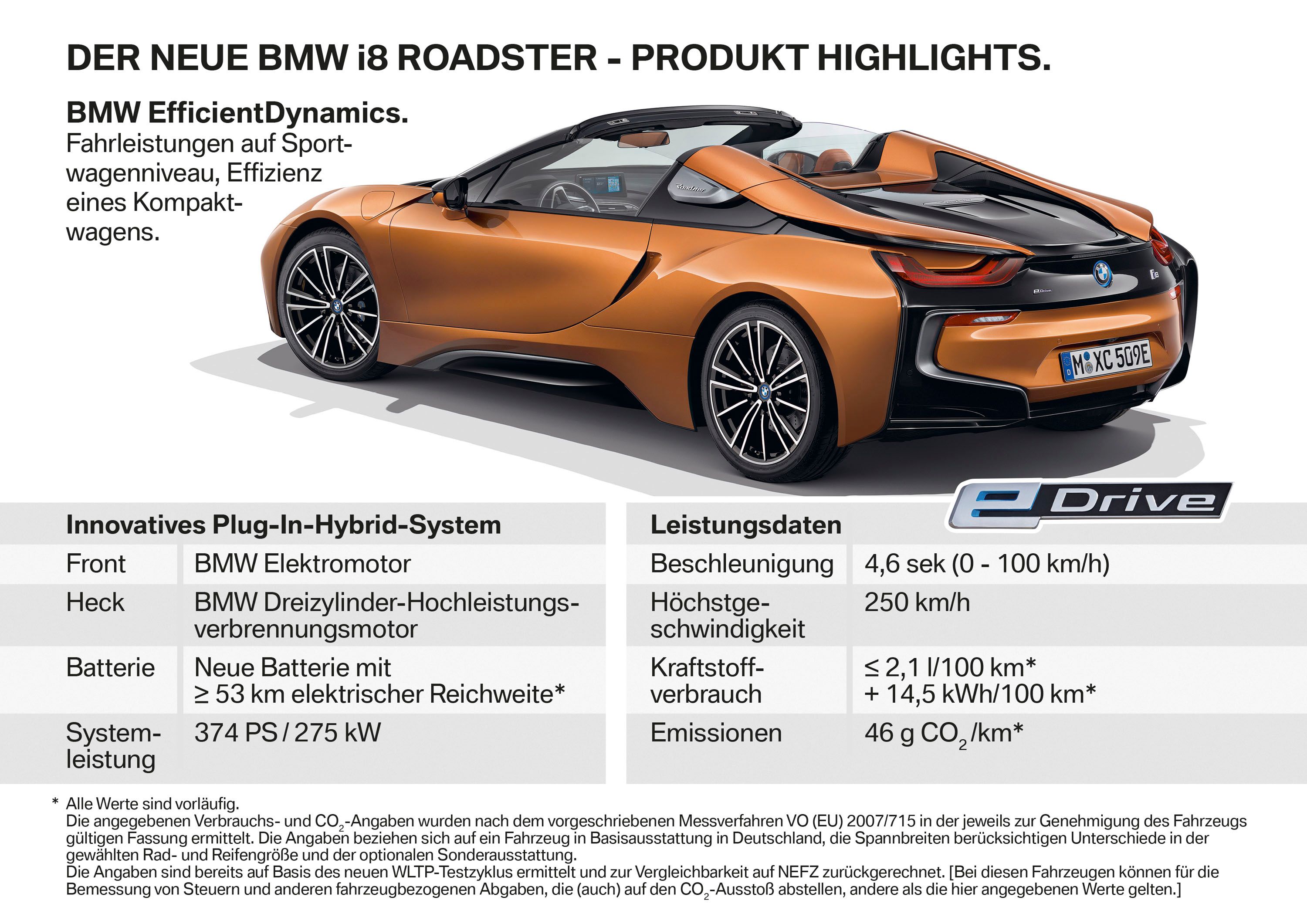
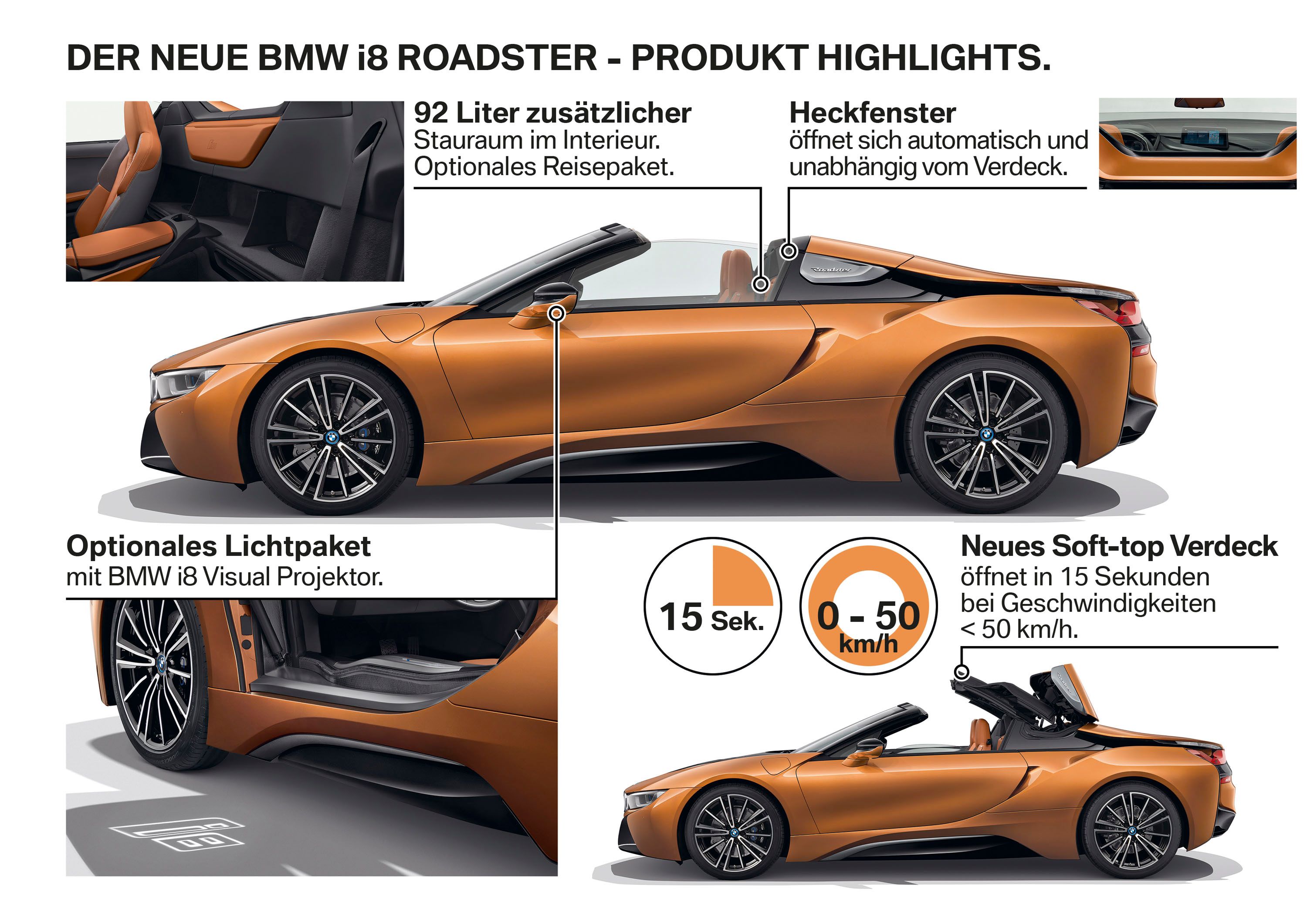
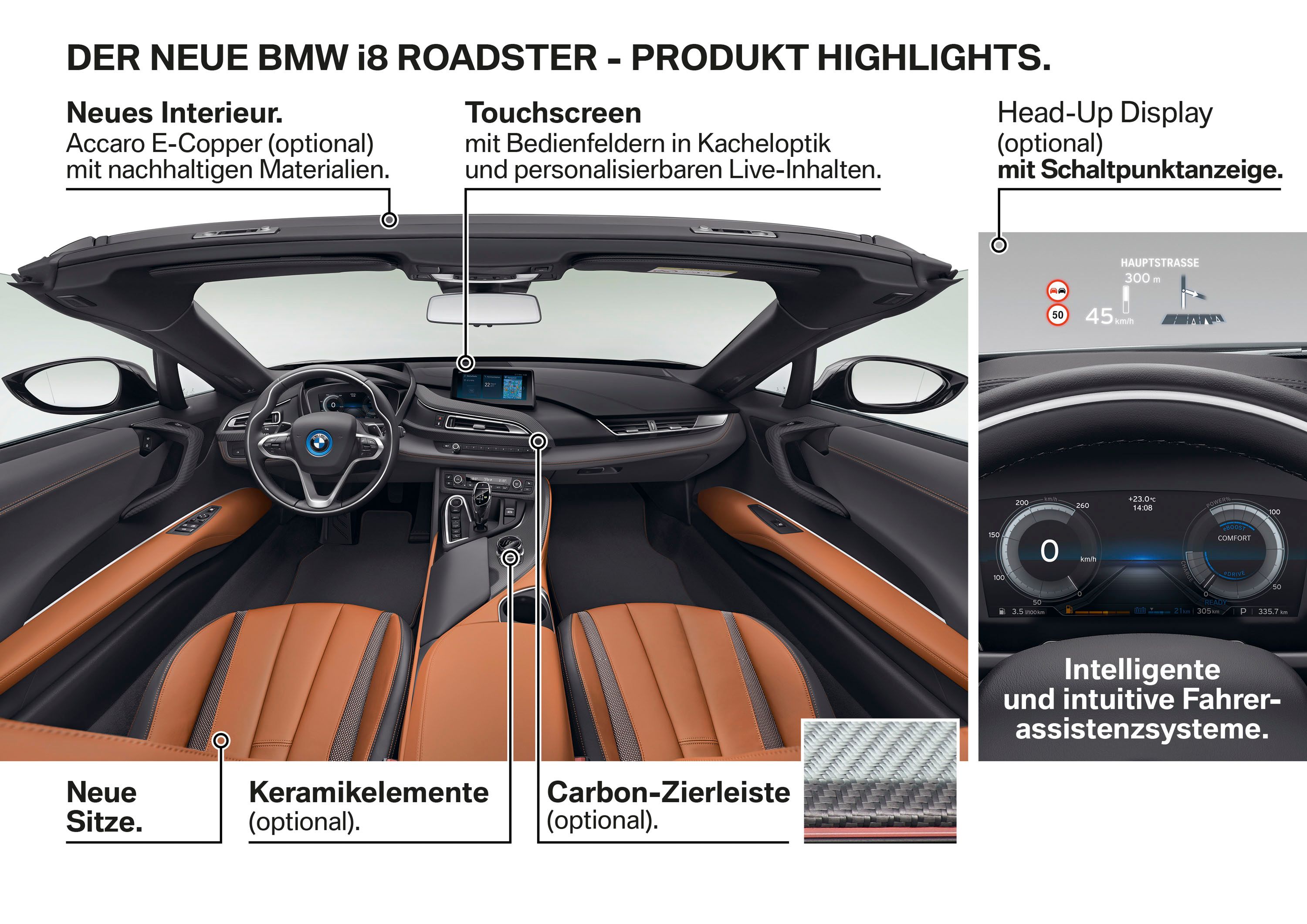
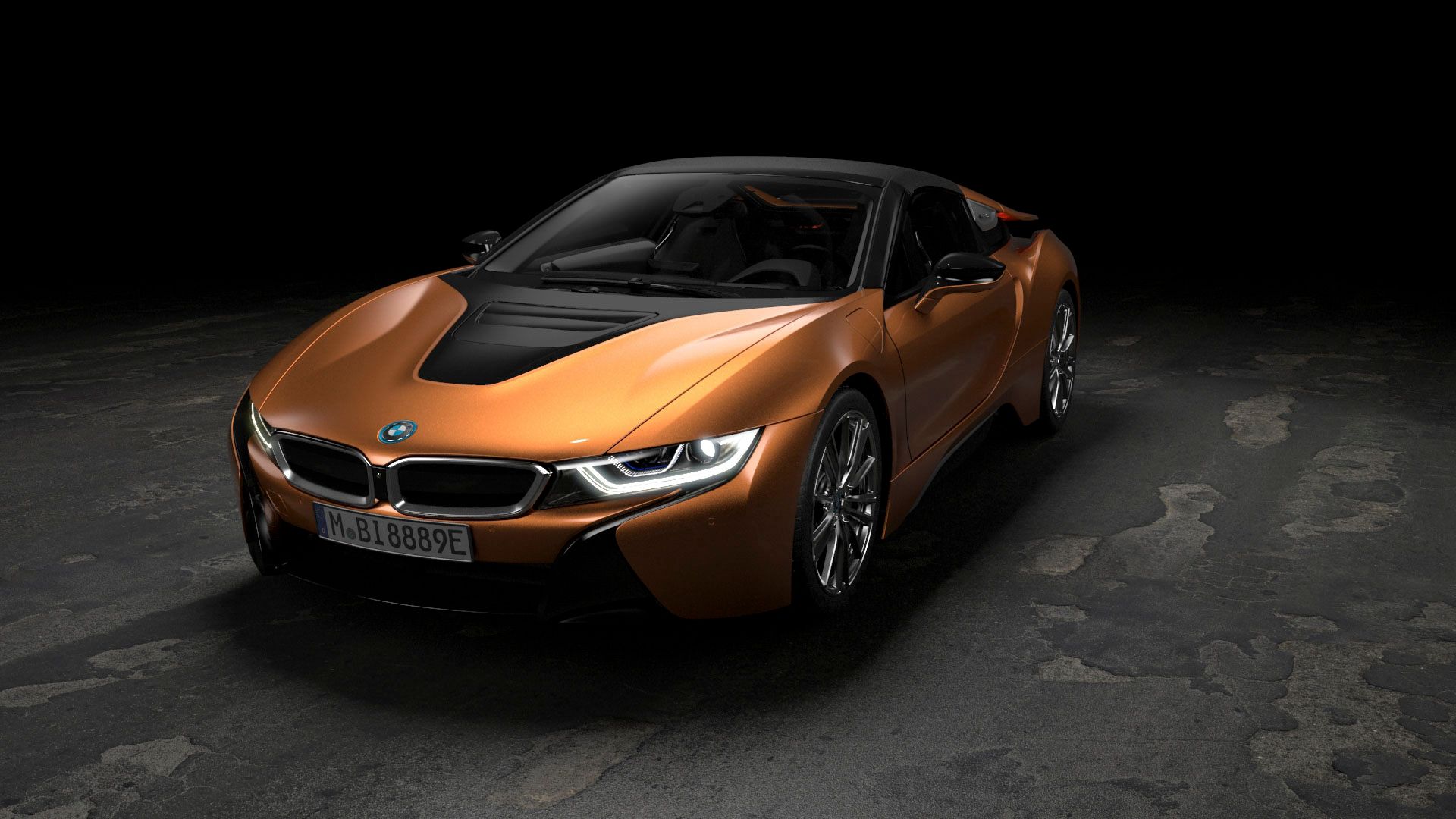
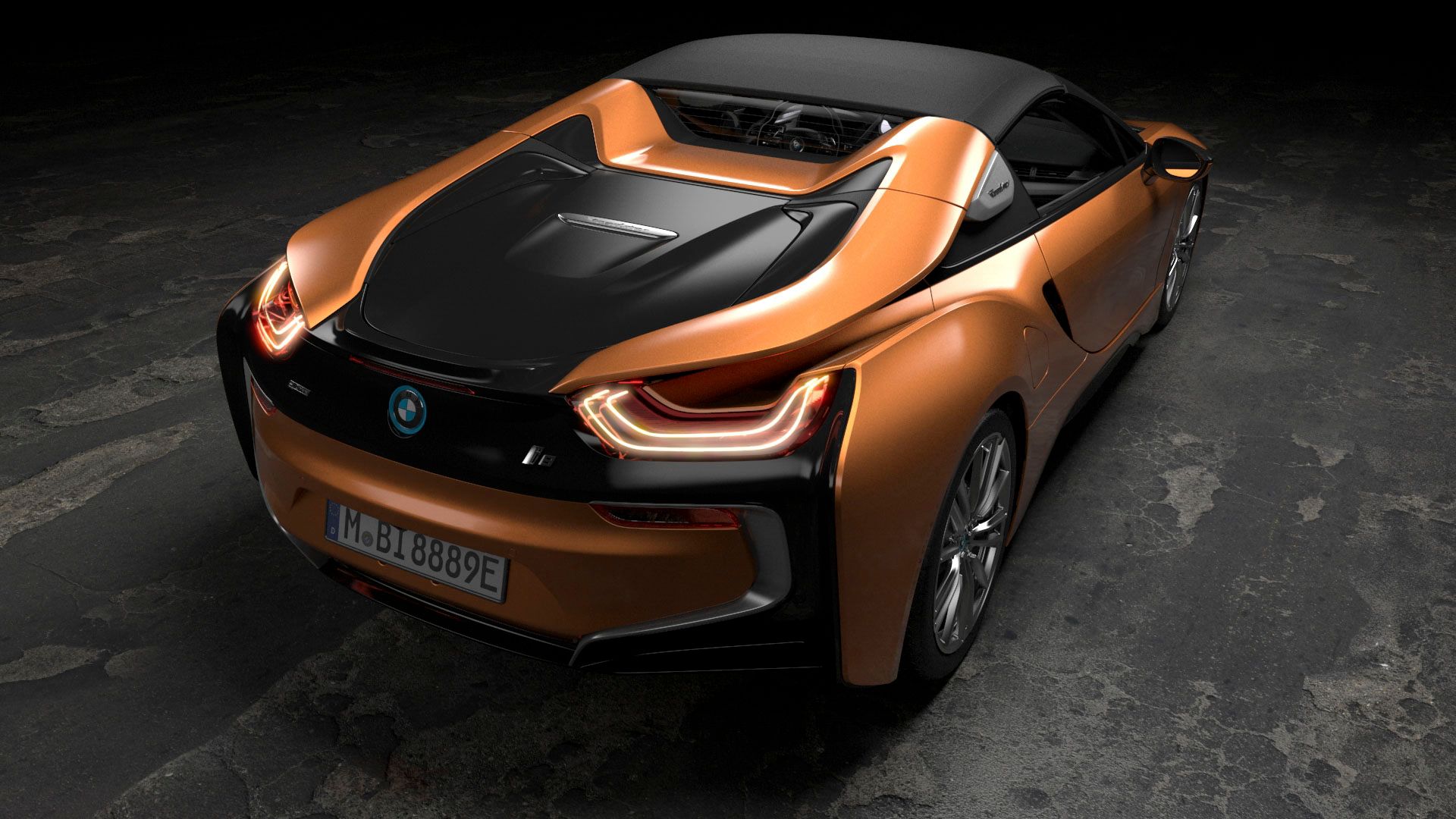
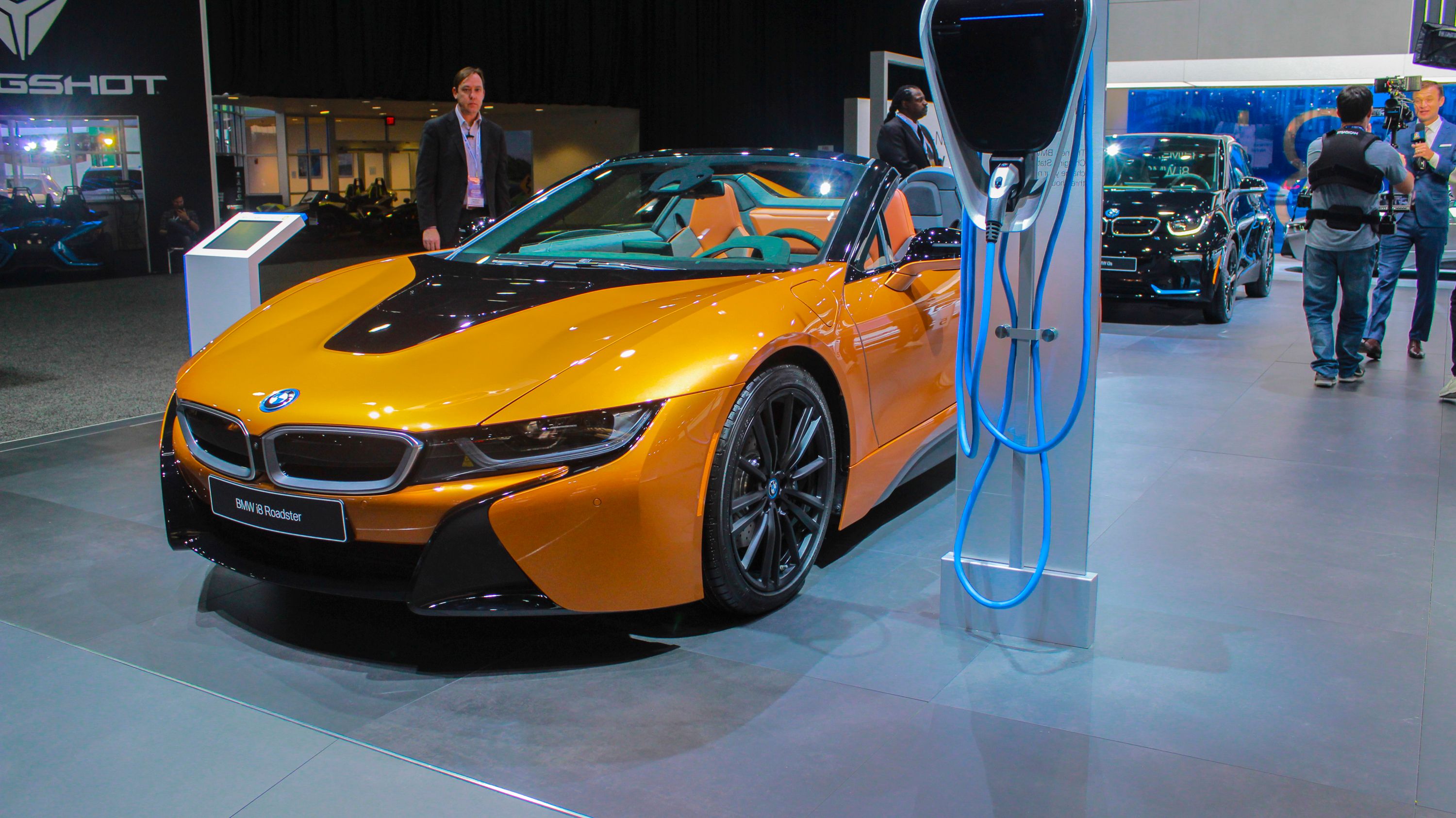
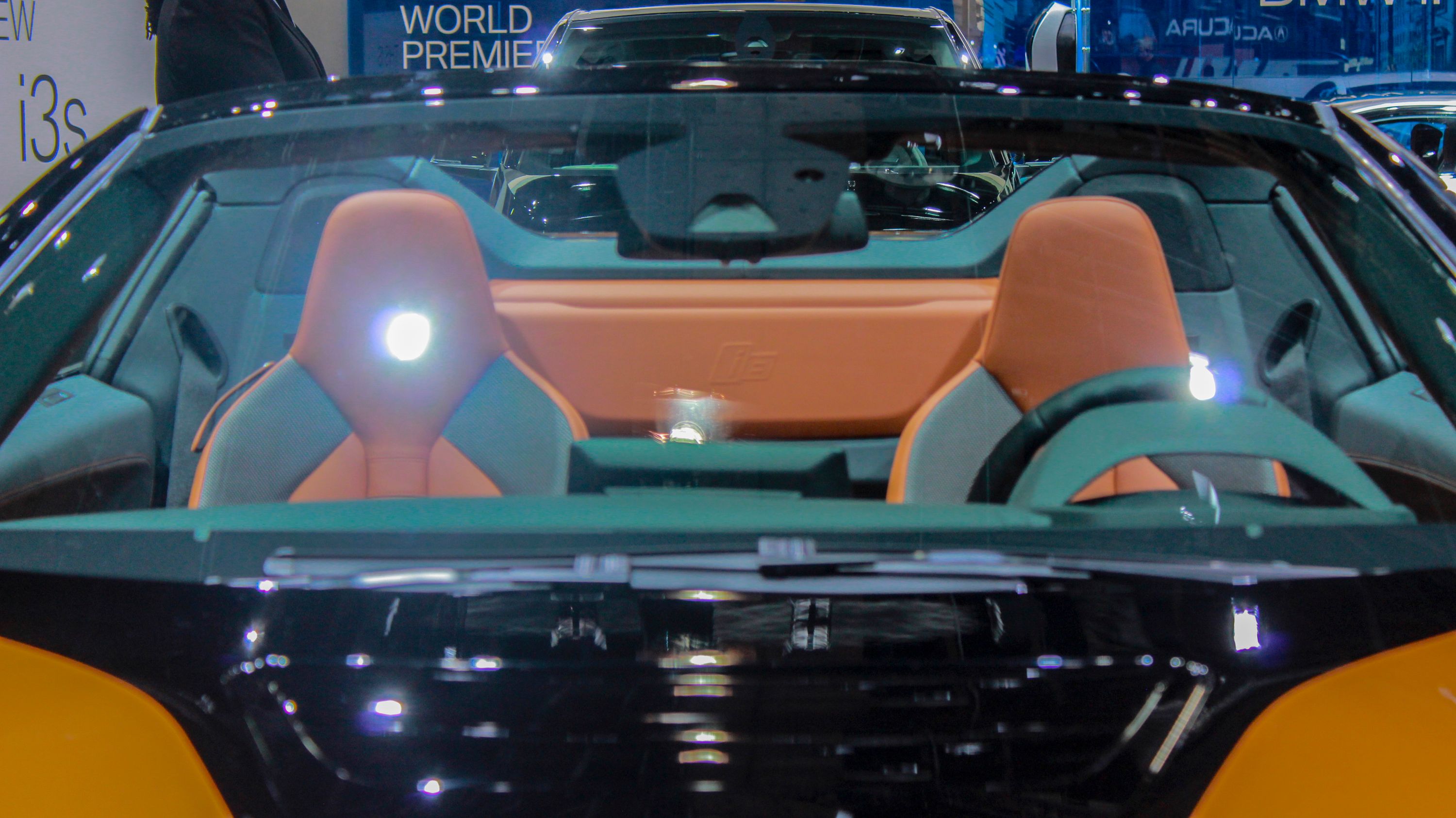
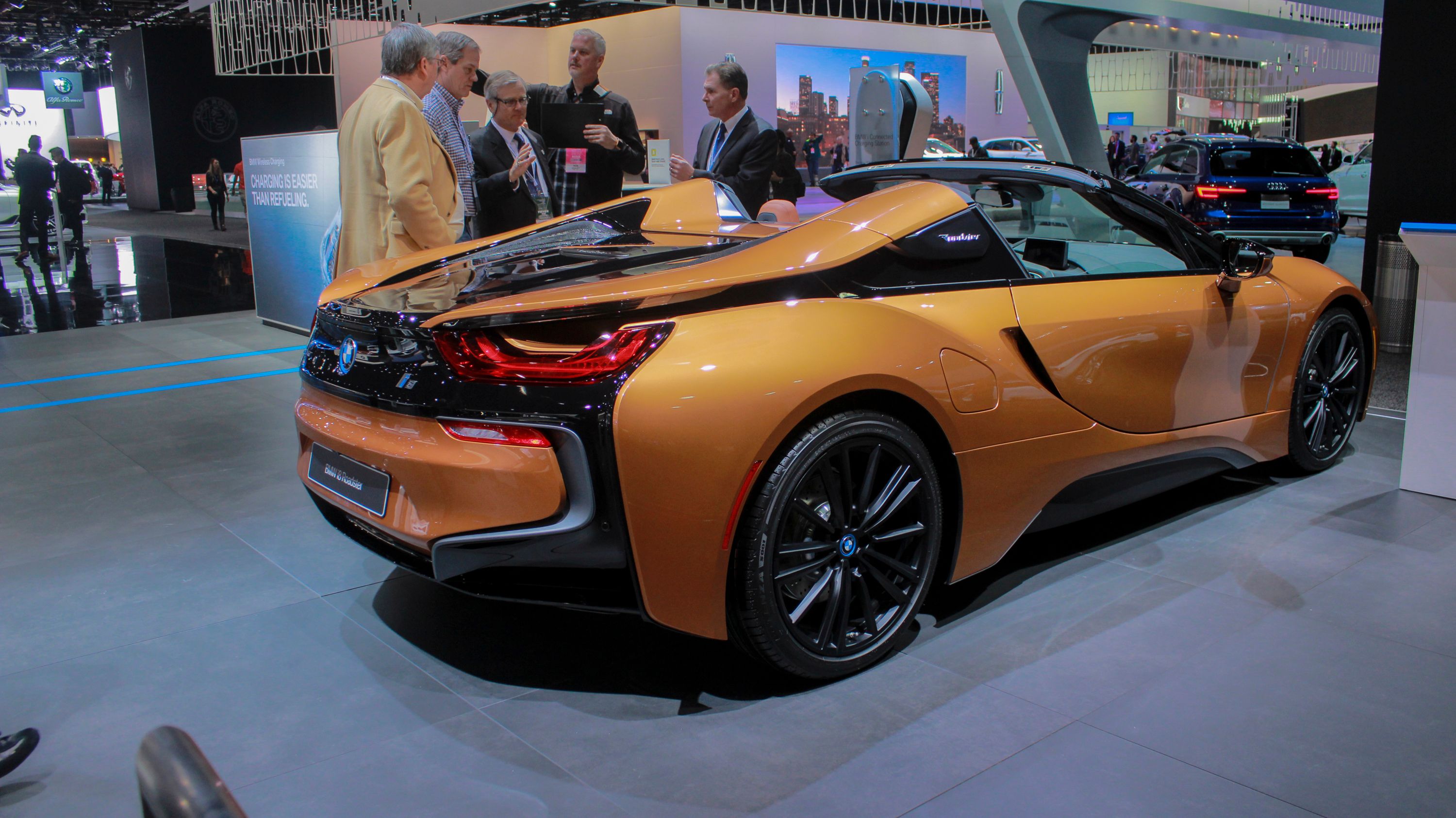
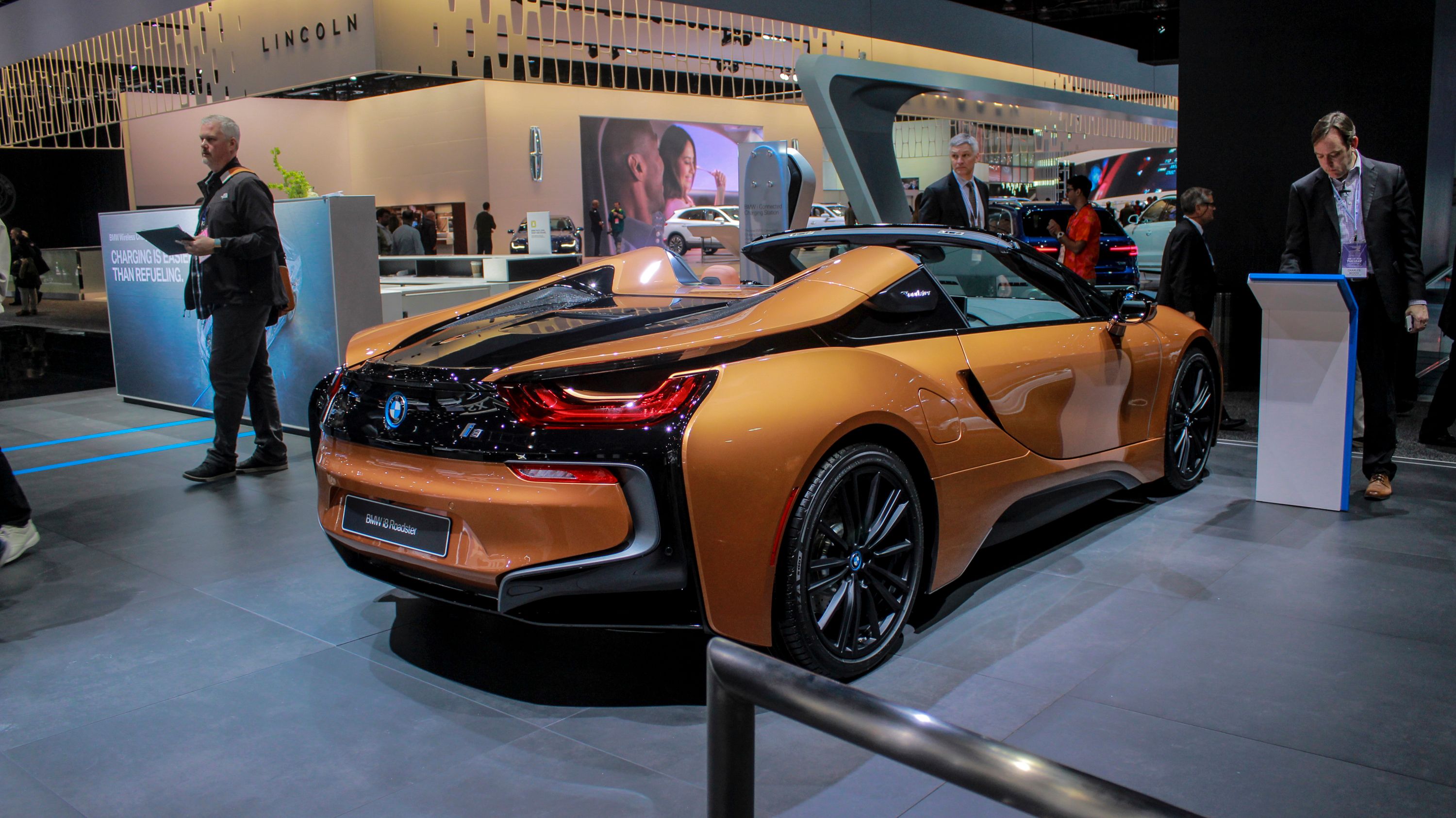
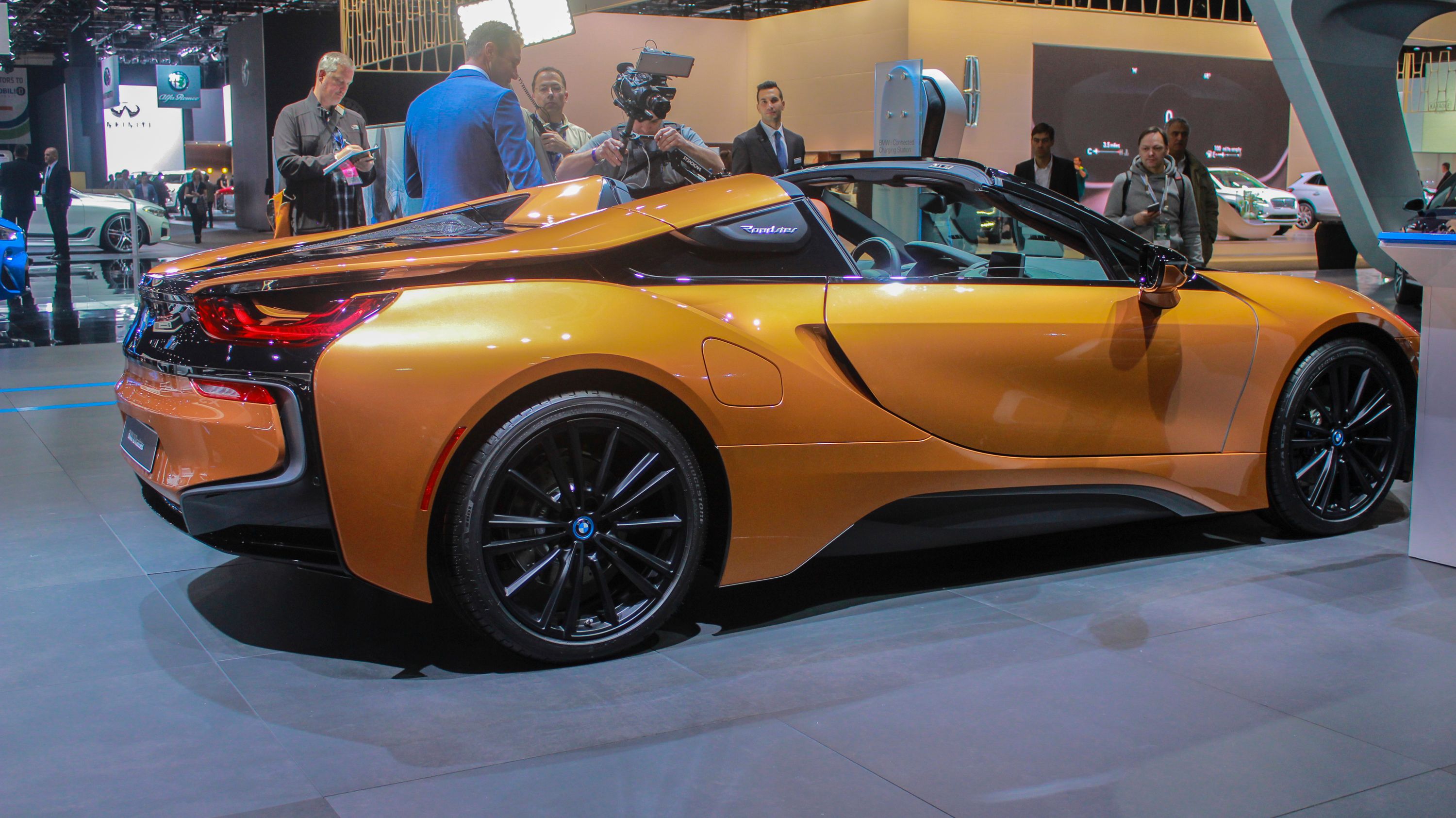
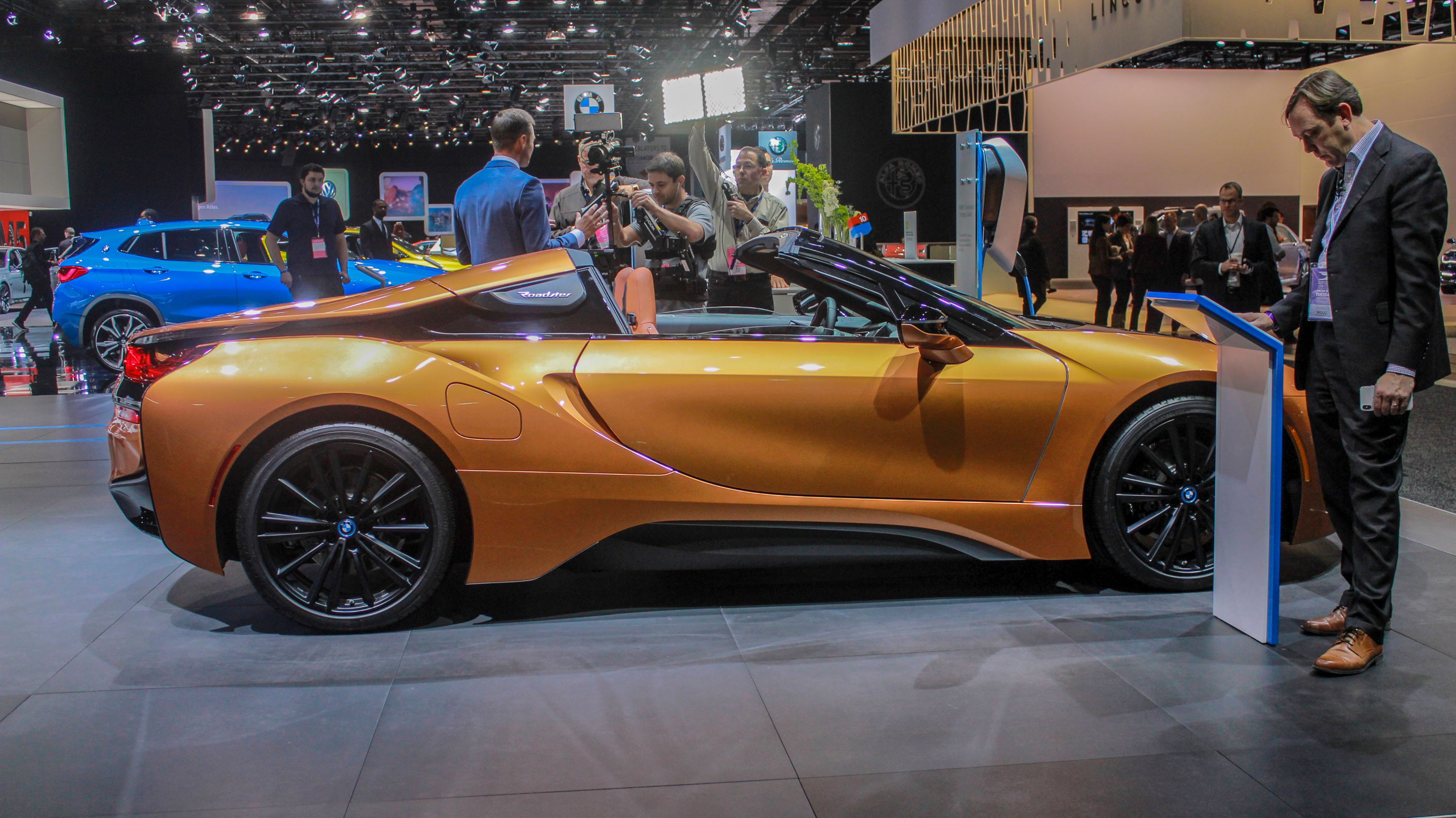
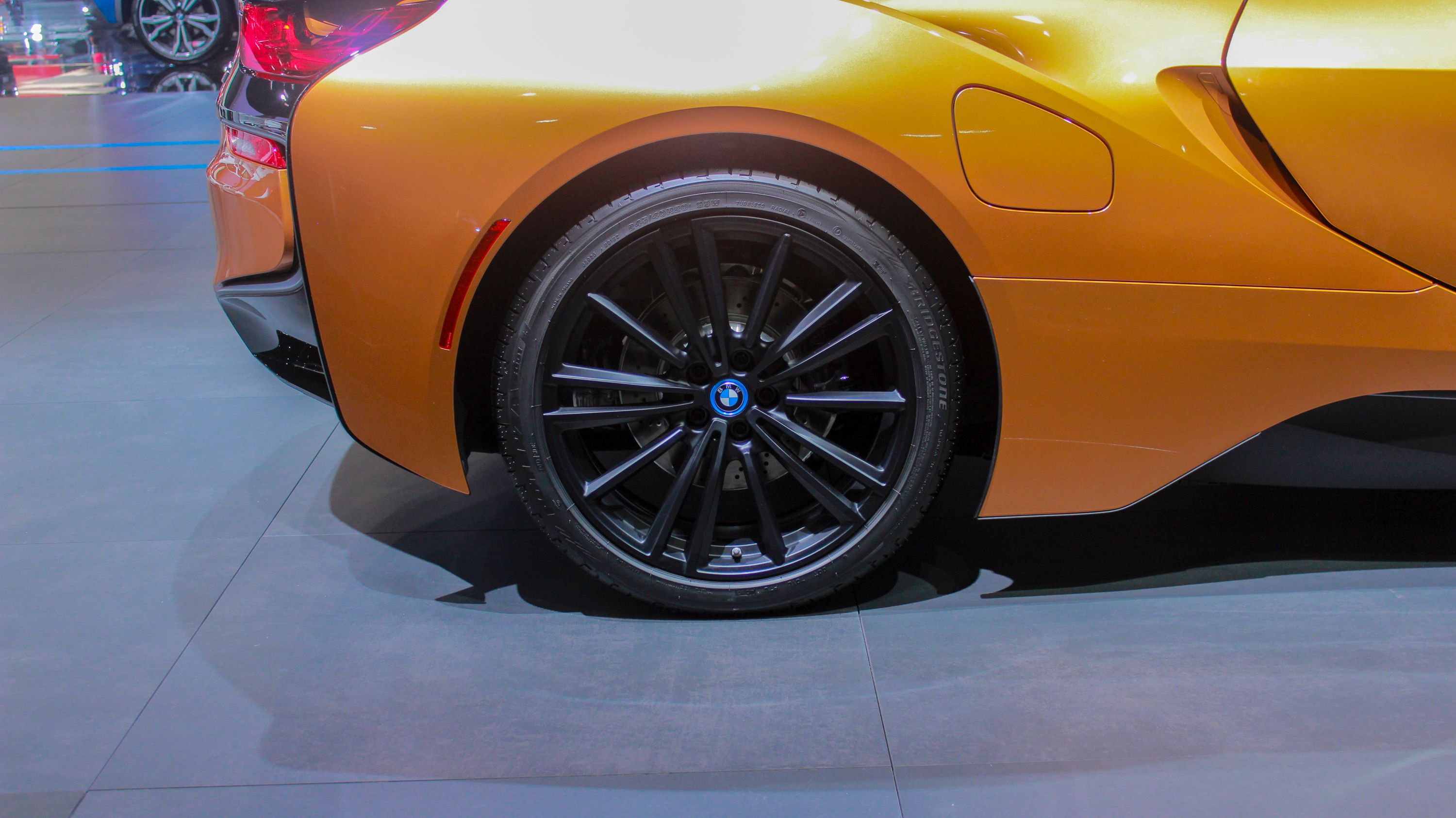
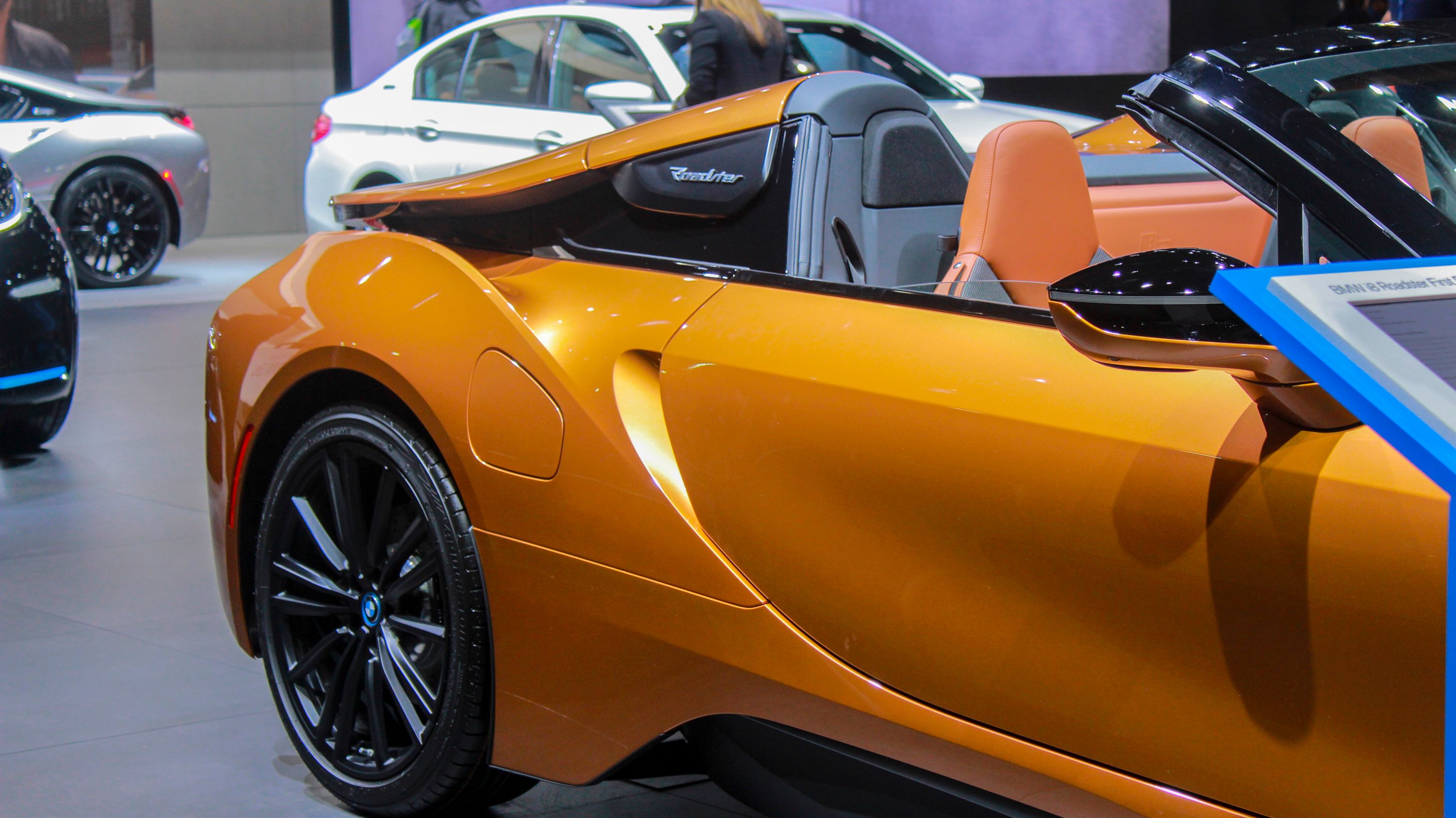
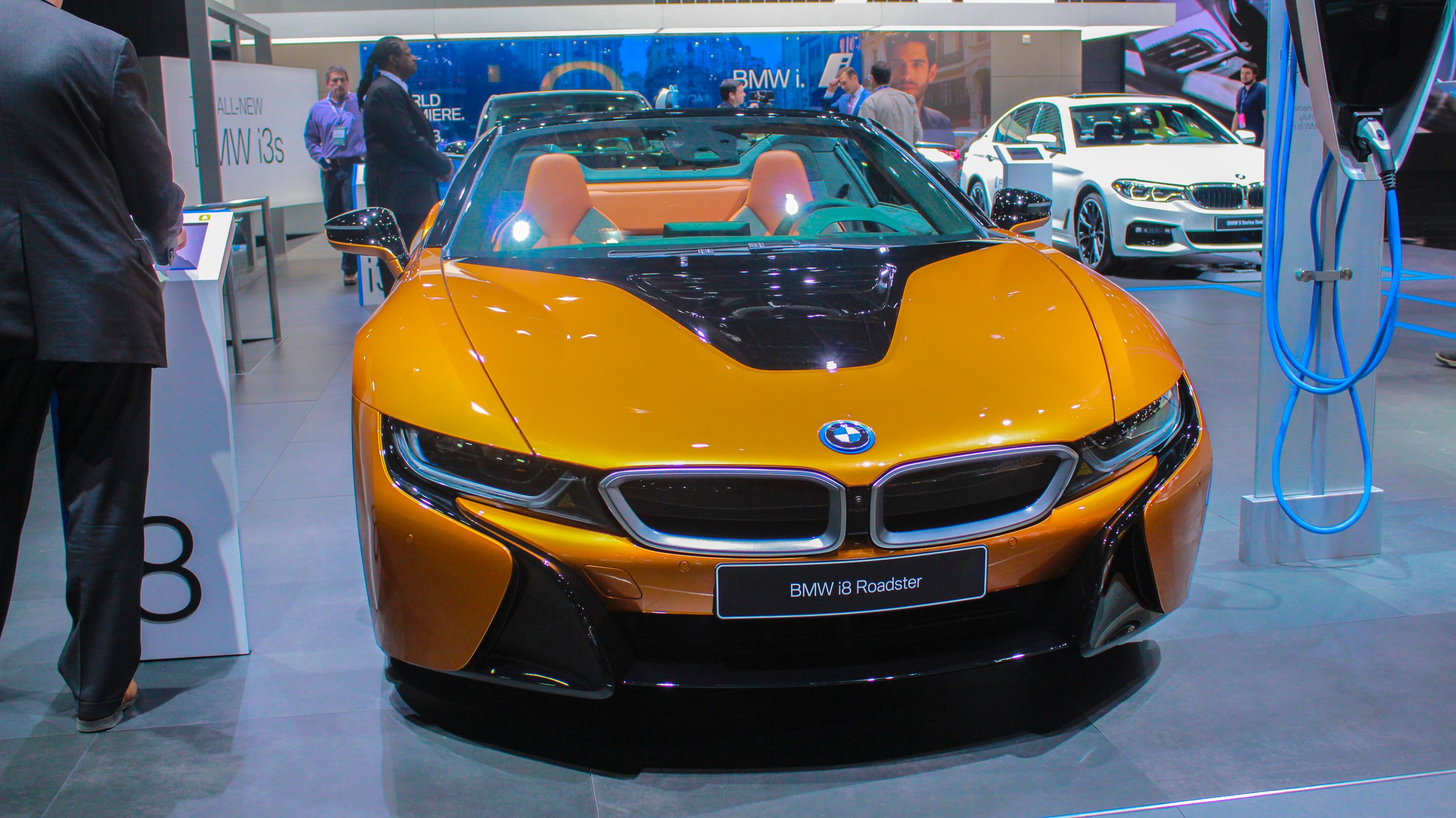
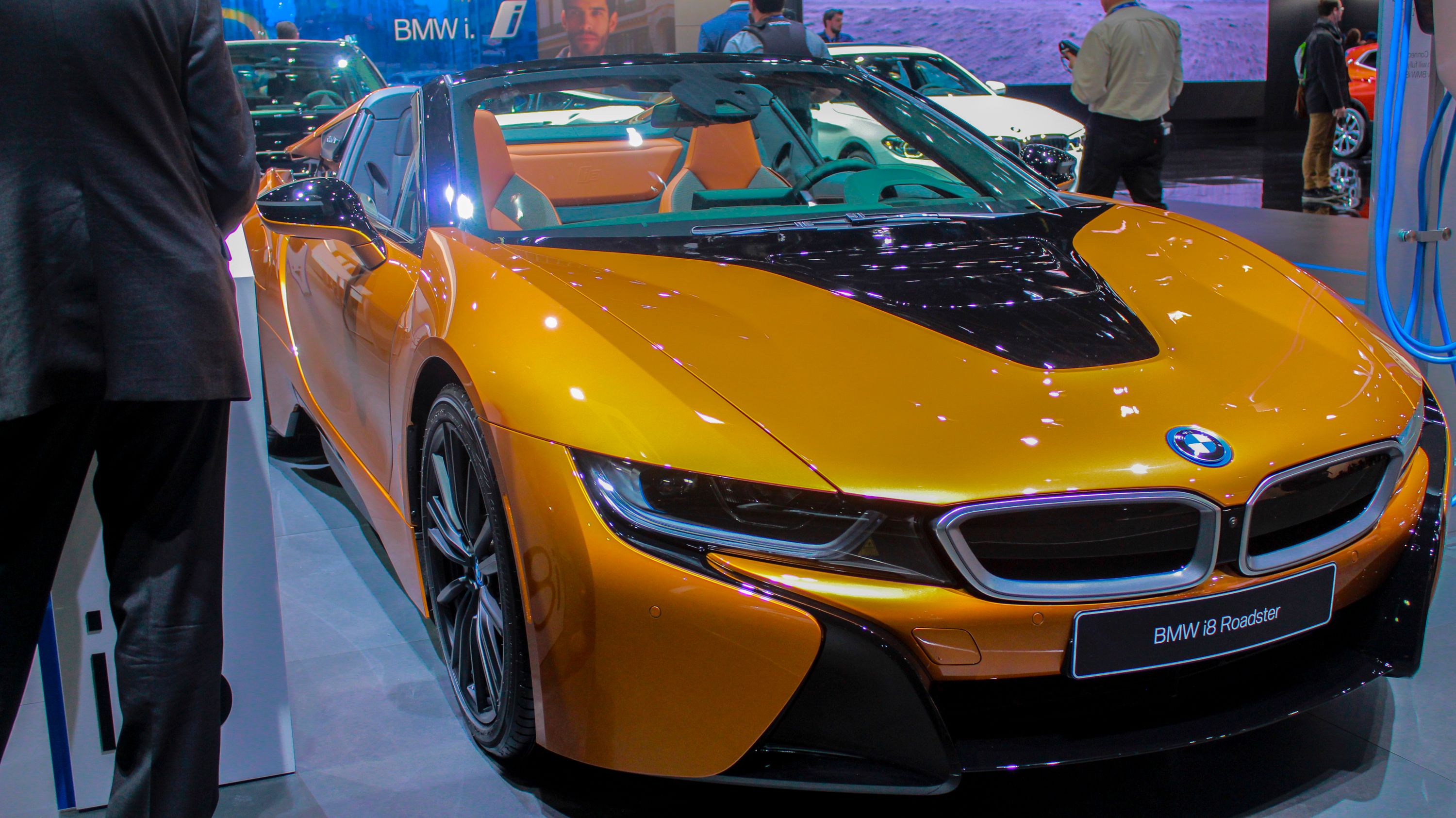
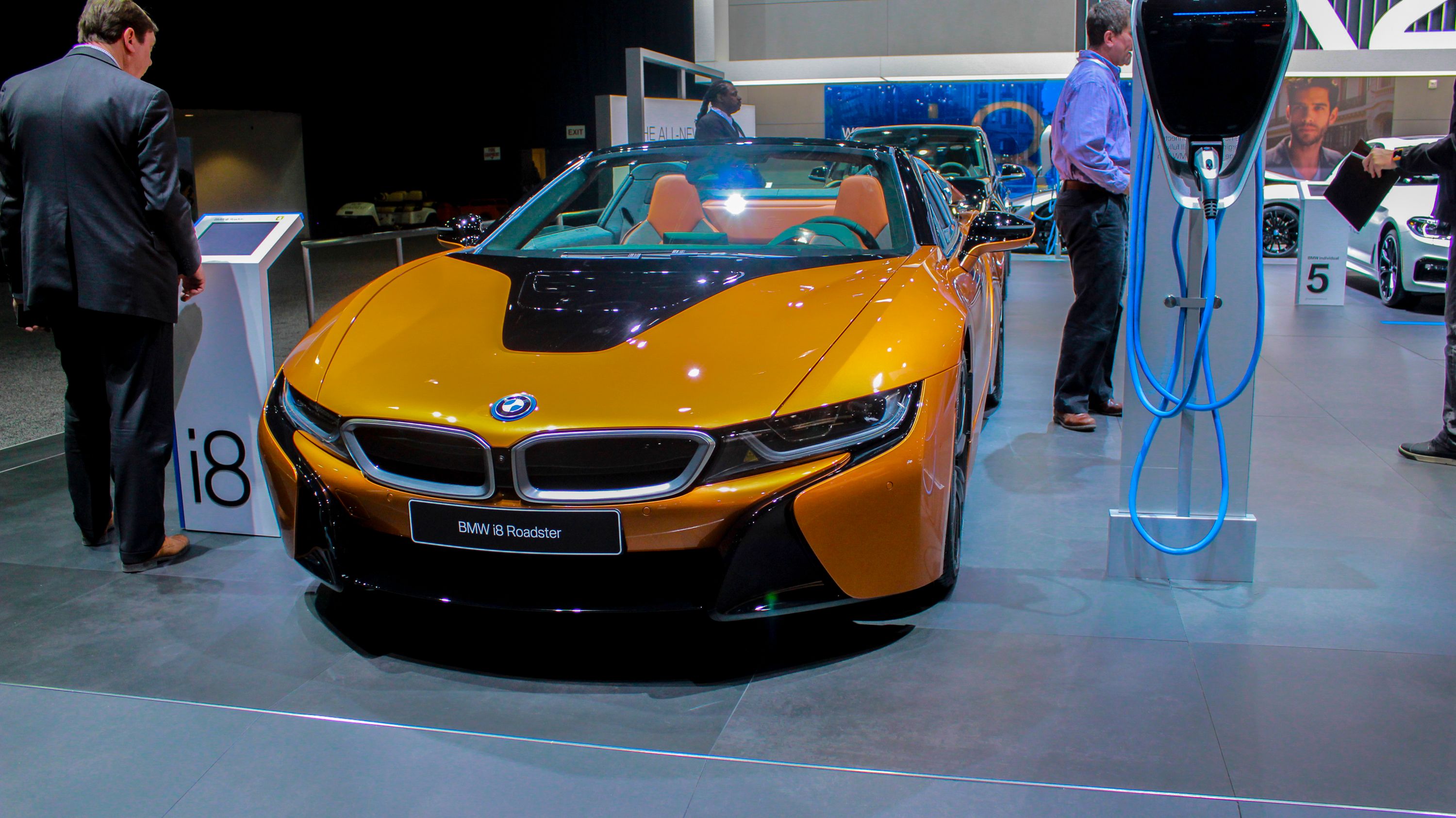
- Make: Array
- Model: 2019 BMW i8 Roadster
- [do not use] Vehicle Model: Array
Exterior

Let's just jump straight to the headline, shall we?
The biggest, most obvious update for the 2018 model year i8 is the addition of a new Roadster body style, which adds a soft-top roof made from high-grade fabric. The roof operation is electrically assisted, with less than 16 seconds required to open and close it. You can also put it up or down at speeds up to 31 mph. The top is stored in a perpendicular position in the rear of the car, folding down into a “Z” shape when you want extra atmosphere. The folding mechanism is also made from aluminum using new 3D printing technology, which goes well with the i8's futuristic themes. “This manufacturing method for aluminum components breaks new ground in the automotive industry and allows the topologically optimized bracings to be produced in a geometric form, which would not be possible using conventional casting techniques and ensures an optimal balance between component rigidity and weight,” BMW says.
With the roof up, the Roadster has more or less the same similar profile as the coupe, and incorporates the same styling elements. These include a flat hood and a long roofline. It's like an inter-dimensional speed wedge, complete with a kidney grille in the nose.
One notable difference can be found in the rear, where the Roadster gets a pair of bulging, curvaceous pillars that run behind the head rests and into the tail in a U-shaped design. The rear deck is flatter and lower on the Roadster compared to the Coupe, undoubtedly to help give it reduced turbulence inside the cabin when the roof is down.

Speaking of roof down, the i8 Roadster looks fantastic with the top dropped. The swoopy, geometric design elements in the profile are emphasized without the extra bit up top, bringing the whole thing lower to the ground in the process. Indeed, none of the coupe's head-turning capability is lost in the Roadster – in fact, we might go as far as saying the i8 actually looks better as a roadster.
And while it's certainly a tasty bit of eye candy, the i8's exterior design is also rather functional, sporting an aero-optimized layout that helps to strike a balance between performance and efficiency. Standout features include an air flap control system, air curtains in the front apron, a flat underbody, molded side skirts, and air ducts placed between the rear lights and roof frame. Air is now redirected through the sides of the car, rather than through the hood and nose, with the atmosphere venting out close to the wheel arches and through to the underbody.

New for the 2018 model year is a fresh selection of exterior colors, which now include shades like E-Copper metallic and Donington Grey metallic, both of which are offered with accents in a Frozen Grey metallic color.
The Roadster also comes standard with a unique radial-spoke wheel design in a two-tone finish, also available in an optional Jet Black. These rollers measure in at 20 inches in diameter and are made from a lightweight alloy. In fact, they're so light, each wheel actually shaves off 2.2 pounds compared to the previous i8's alloy rollers. Buyers get four additional wheel designs (each also measured at 20 inches) for extra customization.
And of course, don't forget the requisite “Roadster” badges to identify the model for anyone left wondering.
Interior

Just like on the Coupe, ingress and egress in the Roadster is aided by a set of attractive gullwing doors, which open up and forward rather than out. Settle into the cockpit, and you'll find seating for two passengers, as opposed to the 2+2 layout found in the Coupe. Of course, this is due to the extra space needed to put the roof away, leaving the i8 Roadster with rather meager storage space. But that's to be expected, and we're not gonna dock points because the tiny rear bench was tossed. In fact, the Roadster still has a few cubbies scattered around for storage, including a 3.5-cubic-foot compartment located between the roof box and the seats, plus a secondary storage space in the rear that provides an additional 4.7 cubic feet.
Hit the button to open the roof, and the rear window will automatically rise 1.9 inches to help cut through the wind and direct it towards the rear, enhancing cabin comfort while reducing turbulence. The driver can tweak the rear window height to better control the air flow as desired.

Standard spec for the cabin includes a sports steering wheel that's wrapped in leather and mounted shift paddles for semi-manual gear changes. Behind the wheel is a multi-function instrument display, plus there are standard heated seats with fully electric adjustments. The dash layout is a wavy assemblage with multiple layers added in a horizontal fashion, plus a wide center tunnel dividing the left and right seating positions.
Customers will enjoy the “Giga” interior trim, plus the full-leather upholstery finished in an Ivory White and Black double-color scheme. You can also get the Giga interior trim in Dark Amido. Further options include the “Halo” trim with cloth and leather upholstery in a Carum and Dalbergia color scheme, and a new Tera World Copper trim with cloth and leather upholstery in an Amido and E-Copper color combo. Overall, we think the two-tone options work quite well with the layout and design.
But of course, as you might expect for a spacey hybrid sports car, the infotainment features list is extensive, and includes a host of features from BMW Connected, ConnectedDrive, and 360 Electric. Kicking it off is an 8.8-inch freestanding display, while Navigation system Professional and Driving Assistant both come as standard equipment. Running it all is the iDrive 6.0 operating system, with inputs made by the Touch Controller rotary knob located in the center console. Infotainment navigation is achieved with a tile-like presentation for the various apps and features.

Behind the steering wheel is a set of fully digital multi-function gauges. These will actually change their appearance depending on the mode selected, for example, Sport mode is set in an orange tint with round dials, while Comfort offers up a blue power meter display, and Eco Pro includes an efficiency gauge. You can also keep tabs on the powertrain stats via the Control Display and iDrive menu, which provides an energy flow graphic. You know, just in case you wanna get really nerdy with it.
The infotainment system can also integrate with your smartwatch and smartphone for added functionality, and it provides a variety of connected services, including trip planning, refueling information, trip status notifications via text messages, traffic info, parking info, concierge services, and more.
The i8 Roadster comes with a good deal of standard equipment, with the tunes routed through a Harman Kardon stereo rocking 12 speakers pumping out 360 watts of power. There's also a standard heads-up display, which, in Sport mode, displays stuff like engine rpm, the current selected gear, and a set of shift lights. On the safety and convenience front, there's standard cruise control, automatic braking, and surround view cameras, plus frontal collision warning, city collision mitigation, pedestrian detection, park distance control, automatic high beams, speed limit info, and cross traffic alert. Finally, there's an Intelligent Emergency Call feature that will relay the crash severity and vehicle location in case you really bin it.
really0}
One of the BMW i8's best party tricks is its ability to provide emission-free driving and silent running on demand, and the Roadster is no different, packing the same BMW eDrive technology, AWD system, and plug-in hybrid powertrain as the Coupe. Behind the seats is a TwinPower Turbo 1.5-liter three-cylinder internal combustion gasoline engine, which makes as much as 228 horsepower and 236 pound-feet of torque thanks to features like Valvetronic variable valve timing and direct fuel injection. The ICE's power is sent to the rear axle through a six-speed Steptronic gearbox.
While the gas engine drives the rear wheels, a single synchronous electric motor is mounted in the front, sending power and instant torque to the front axle through a two-speed transmission. The combo gives the i8 its AWD grip, providing both the high-revving power of a turbo gas engine and the low-end punch of an electric motor.
This time around, BMW updated the powertrain to be more efficient, tweaking the programming to include further driving situations wherein electric power was the exclusive source of motivation. Bimmer says it set it so the gas engine would only be put to use when accelerating hard, with advanced start/stop technology integrated to keep the engine sipping gas at optimal rates. The engineers refined the exhaust note as well – who knew a three-banger could sound so aggressive?

However, the most important powertrain updates pertain to the electric side of the equation. The big news is an updated lithium-ion battery, which now boasts an increased cell capacity up to 34 Ah from the previous unit's 20 Ah. Gross energy capacity up is also up, now rated at 11.6 kWh from the previous i8's 7.1 kWh.
All told, the new cell configuration adds an extra 12 horsepower, bringing the electric motor's output to 141 horsepower and 184 pound-feet of torque total. The all-electric range was increased as well, and now offers up to 18 miles of electron-powered go, a 30-percent increase compared to the old model.
Put the ICE and electric motor together, and they yield a total of 369 horsepower, which means that 12 extra horsepower was basically added on top of the old model's peak output. Impressively, the i8 will also return upwards of 70 MPGe. The 0-to-60 mph sprint clocks in at 4.4 seconds, 0.2 seconds slower than the coupe model, while top speed is rated at a Coupe-matching 155 mph (no word on what it'll do with the electronic limiter removed).

The Roadster can also hit 65 mph using only electric power, or you can press the eDrive button, and the all-electric top speed will be increased to 75 mph. There's also a variety of different drive modes, such as Comfort, Sport, and Eco Pro, each of which should be pretty self-explanatory. If you're looking for all-electric modes, the selection is limited to Comfort and Eco Pro.
The multiple drive modes also tweak the energy management system. With the hybrid modes, the electric motor provides extra go while also offering energy reclamation under braking and on the overrun. The system is smart too, integrating with the navigation system to switch between gas and electric power as needed for maximum efficiency (for example, electric power is best suited for stop-and-go traffic and downhill sections).
Finally, users can juice up using their BMW-branded i Charging Station. Utilizing a 7.2-kW power supply, the i8 can top off its battery in about 3 hours. Also, if you are registered with the ChargeNow network, you'll receive “unrestricted access” to any of the various charging stations located across the U.S.
Drivetrain

Just like the Coupe, the BMW i8 Roadster utilizes an aluminum chassis and carbon fiber-reinforced plastic (CFRP) passenger cell, blessing it with high rigidity and a surprisingly low weight. The car's heft is also evenly distributed front-to-back and mounted as low as possible, thanks primarily to the balanced rear and front locations of the ICE and electric motor respectively, and the central placement of the battery in the car's underbody.
Additional weight saving measures include features like the newly designed frame-less gullwing doors that now incorporate additional CFRP, plus an aluminum outer shell. The windscreen frame is also made from CFRP, as are the swoopy side skirts. Meanwhile, the drive module, which is comprised of the powertrain, high-voltage battery, and suspension, once again incorporates a good deal of aluminum.

Thanks to all the alloys and composites, the i8 Roadster offers the requisite sports car torsional rigidity, all despite the lack of a fixed roof for extra bracing. It's also surprisingly lightweight, with the curb weight rated at 3,513 pounds, an increase of only 132 pounds compared to the hardtop model. Not bad at all, if you ask us. Typically, drop tops are significantly heavier than their convertible cousins, packing an additional couple hundred pounds in bracing to keep it from folding in on itself when attacking a corner.
The suspension system in place to manage the surprisingly low curb weight includes double wishbones in front and a five-link rear, all of which is made from aluminum. Standard spec tosses in Dynamic Damper Control, while the Roadster model benefits from custom suspension tuning, a specially configured steering system, firmer roll stabilization, and a few changes to the DSC as well.
Pricing

Sales for the 2018 BMW i8 Roadster kick off in the spring of 2018. Bimmer has yet to announce official pricing information, but considering the 2017 Coupe starts at $143,400, we'd expect the Roadster to ring in at just under $150,000, give or take a few grand.
Competition
Acura NSX Roadster
When Acura dropped the second-generation NSX at the 2015 North American International Auto Show, the auto world went wild. Finally, Honda's legendary nameplate had returned, and it brought with it a host of go-faster technology that placed it at the forefront of hybrid-flavored speed. Making it go is a twin-turbo 3.5-liter V-6, which is hybridised by no less than three electric motors to produce an impressive 573 horsepower. The 0-to-60 mph sprint is done in a little less than 3 seconds, while top speed is rated at 191 mph. And while there's no official word that a drop-top is on the way, it just makes sense to offer one, no?
Read our full speculative review on the 2020 Acura NSX Roadster.
Tesla Roadster 2.0
While we're still several years away from seeing this thing out on public roads, the second-generation Tesla Roadster looks to offer some pretty insane competition for the Bimmer. Scratch that – this thing is beyond insane, and deep into plaid territory. The claimed specs are light years ahead of what you get in the Bimmer, with a claimed 0-to-60 mph time of 1.9 seconds and a top speed over 250 mph. Making the go is a three-motor powertrain laying down a Earth-turning 7,376 pound-feet of torque, while all-electric range is pegged at 620 miles per charge. Of course, these are all just unverified claims, so we'll have to see where the Tesla really lands when it's finally sold to the public, not to mention where the Bimmer will be in comparison. For now, though, keep an eye out for this one.
Read our full review on the 2020 Tesla Roadster 2.0.
Conclusion

At its heart, the 2018 BMW i8 Roadster is a very exciting car. It's got literally everything offered by the Coupe (except the rear +2 seats, of course), plus a heady dose of extra blue sky on demand. That makes it a fantastic option for those looking into the more eco-friendly options in the high-end roadster market. That much is obvious.
At the same time, though, we have to dock a few points from the Bimmer's score for it's lack of upgrades heading into the 2018 model year. When it was first released, the i8 was extremely exciting, offering AWD, sharp styling, solid speed, and a surprising level of efficiency to boot. What's not to like?
Well, as it turns out, the handful of years between now and the i8's original release date have been a boom time in the hybrid segment, and a lot of what made the i8 so impressive in 2013 doesn't quite spark our interest like it once did. Yeah, it still looks great, and yeah, it's still quick, but were expecting more than an extra 12 horsepower and a few extra miles with the latest update. Just look at rivals like the Acura NSX, which is also an AWD, spacey hybrid sports car, but it'll simply demolish the Bimmer in the speed department, all while looking equally as good in the styling department. We were hoping for more from the Bavarians.
That said, the Roadster is still a fantastically exciting machine. We'd just wait until the next, more substantial update to pick one up.
References
BMW i8
Read our full review on the 2019 BMW i8 Coupe.
Read our full review on the current 2017 BMW i8.
Read more BMW news.
Read more 2017 Los Angeles Auto Show news.
Updated History
Updated 07/03/2017: The new i8 Spyder is actually coming! BMW dropped the first teaser video for it!
Updated 05/12/2017: The upcoming BMW i8 Spyder was caught testing one more time, and this time we have the chance to get a closer look.
Updated 02/28/2017: Our spy photographers caught the upcoming i8 Spyder during winter testing in Sweden.
Updated 07/03/2017: The new i8 Spyder is actually coming! BMW dropped the first teaser video for it!
Teaser video
The first official teaser video isn't much of an actual teaser as it is footage with the camouflaged car we've already seen on public roads. However, in this video we can see the i8 Spyder with its doors open, which confirms that it will have butterfly-tipe doors, just like the coupe. This type of door configuration isn't very common on convertibles, which makes it a pretty big deal.
Spy Shots
May 12, 2017 - BMW i8 Spyder caught up-close and personal



February 28, 2017 - BMW i8 Spyder caught testing in Sweden




